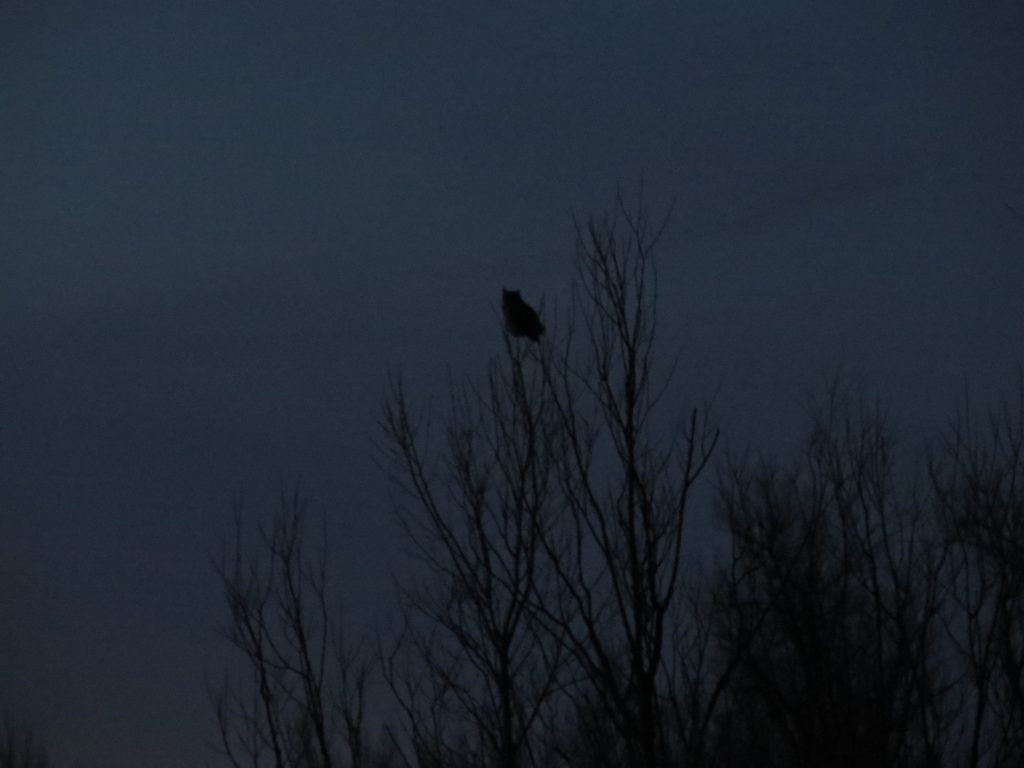Ask any serious Minnesota birder where he or she was in June of 2017, and you will get one common response: the North Ottawa Impoundment in Grant County. While not exactly new to hosting good and rare birds, North Ottawa outdid itself this year. Or more accurately, an army of skilled birders outdid themselves as they descended on the Impoundment in waves and created a bonafide, honest-to-goodness Patagonia Picnic Table Effect. That term is sometimes used pretty loosely, but this was the real deal–a cascade of Accidentals, Casuals, and Rare-Regulars so intense that it threatened to rename the very phenomenon itself. Below is the timeline of the major birding events, including my multiple trips with Steve Gardner to the site in June. Even though this info is old news to Minnesota birders, I think the end of this post will hold a nice surprise for all.
June 5th
Shawn Conrad and Becca Engdahl separately report finding a Glossy Ibis, an accidental species that would be a lifer for me.
June 7th
Undoubtedly following up on the Glossy Ibis reports, Minnesota Big Year birder Liz Harper helps her own cause by discovering a Little Blue Heron, a rare-regular species which would be a state bird for me.
June 8th
Among the masses of birders now swarming the Impoundment, Gerry Hoekstra sends MN birders into a complete frenzy, including yours truly, when he finds a Snowy Plover, a casual species that would be a lifer for me.
June 9th
Steve and I go to North Ottawa. Any one of the three aforementioned birds would have justified the trip. Three in one spot was just ridiculous. We were hoping for at least one of these goodies. Fortunately I didn’t have to wait long to get that wish. I got the Little Blue Heron as a flyover almost right away. Unfortunately Steve missed it at that time but got it later in the day.
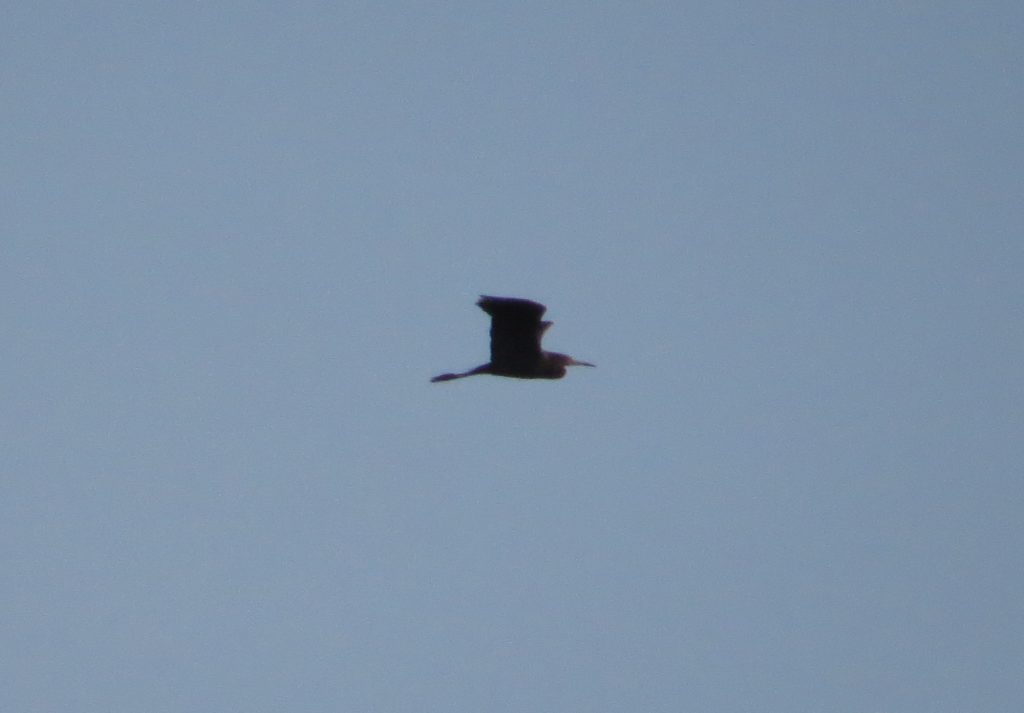
We tried unsuccessfully for the Snowy Plover but had no luck. Considering there were over a dozen birders out looking and no one was turning it up, it was safe to say that it was gone. We did, however, see the Glossy Ibis thanks to Wayne Perala, local birding guru who knew the bird and its habits so well that he told us where to look. And almost on cue, the bird flew up out of the cattails right by Wayne as he said, “There’s your Ibis.” This bird was super cooperative giving us great looks in perfect light. It was a life bird for me but just a state bird for Steve.
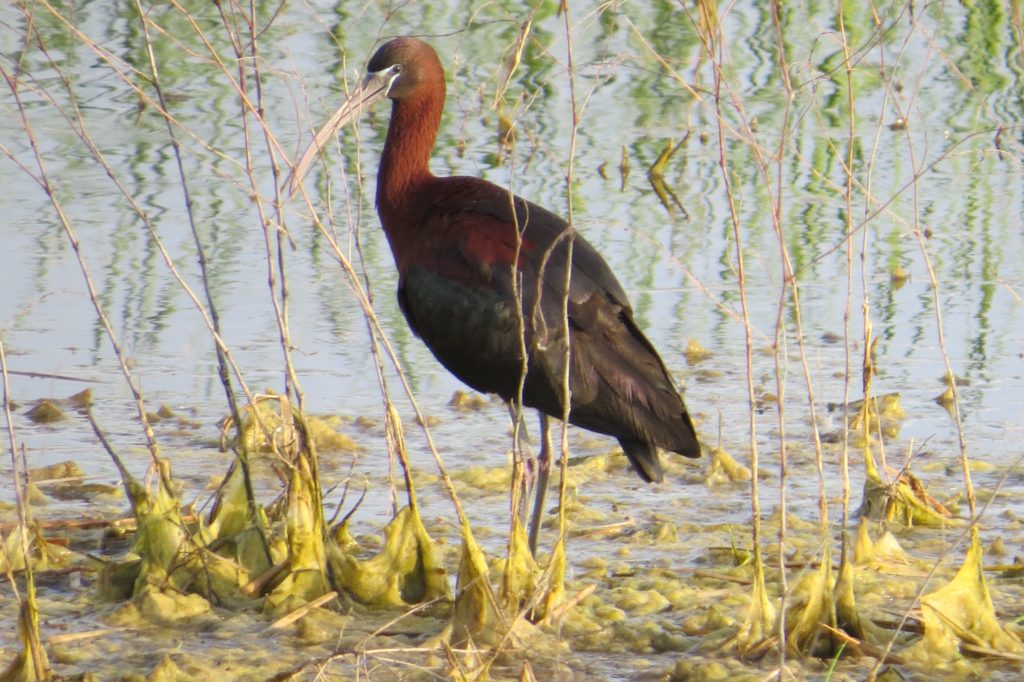
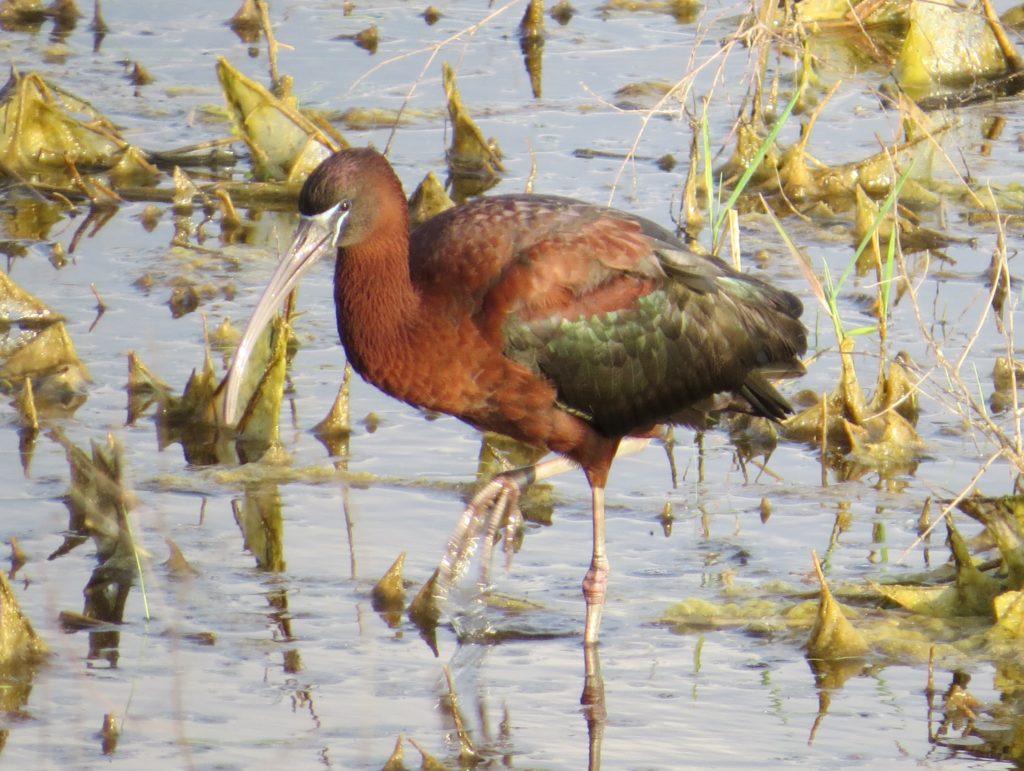 Steve and I were pretty thrilled with going 2/3 on our targets. In addition to these birds, we also nabbed some nice birds that we don’t get to see too often, like this Snowy Egret.
Steve and I were pretty thrilled with going 2/3 on our targets. In addition to these birds, we also nabbed some nice birds that we don’t get to see too often, like this Snowy Egret.
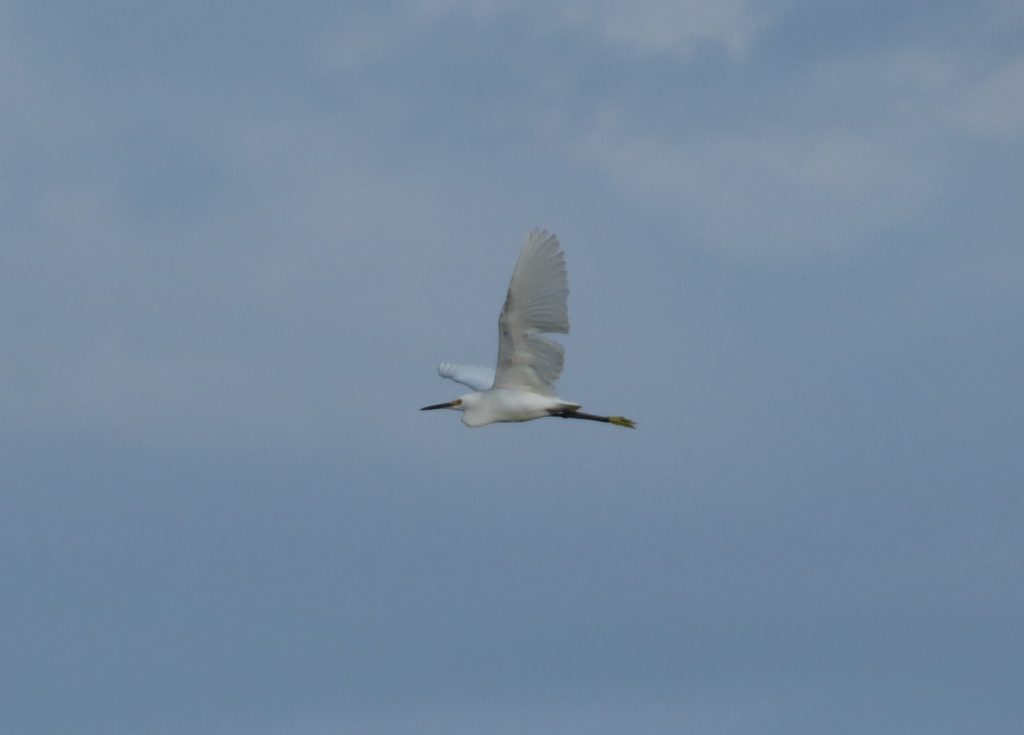
Western Kingbird never goes unappreciated in Minnesota. We were lucky to see this one.
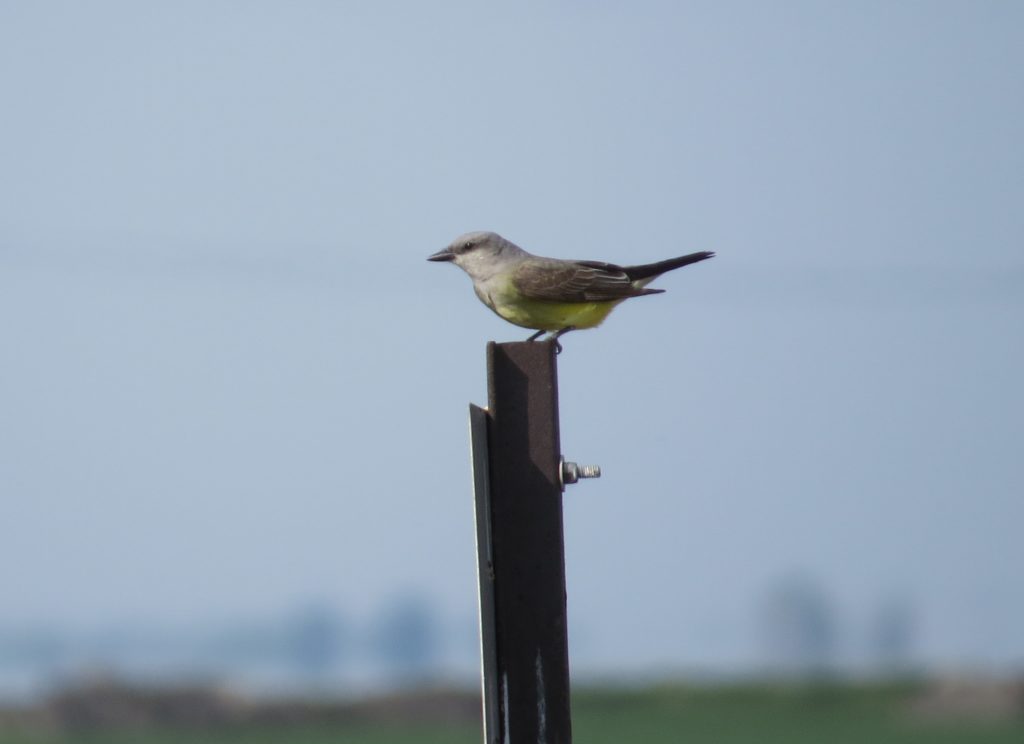 And who does not love seeing an Upland Sandpiper, especially one so crushable?
And who does not love seeing an Upland Sandpiper, especially one so crushable?
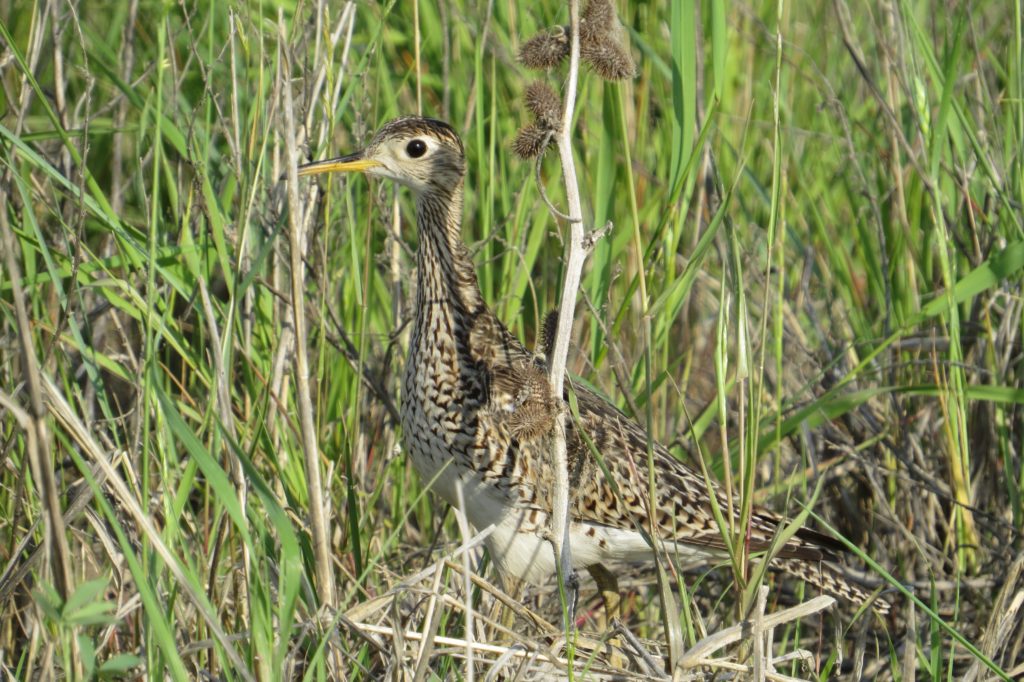
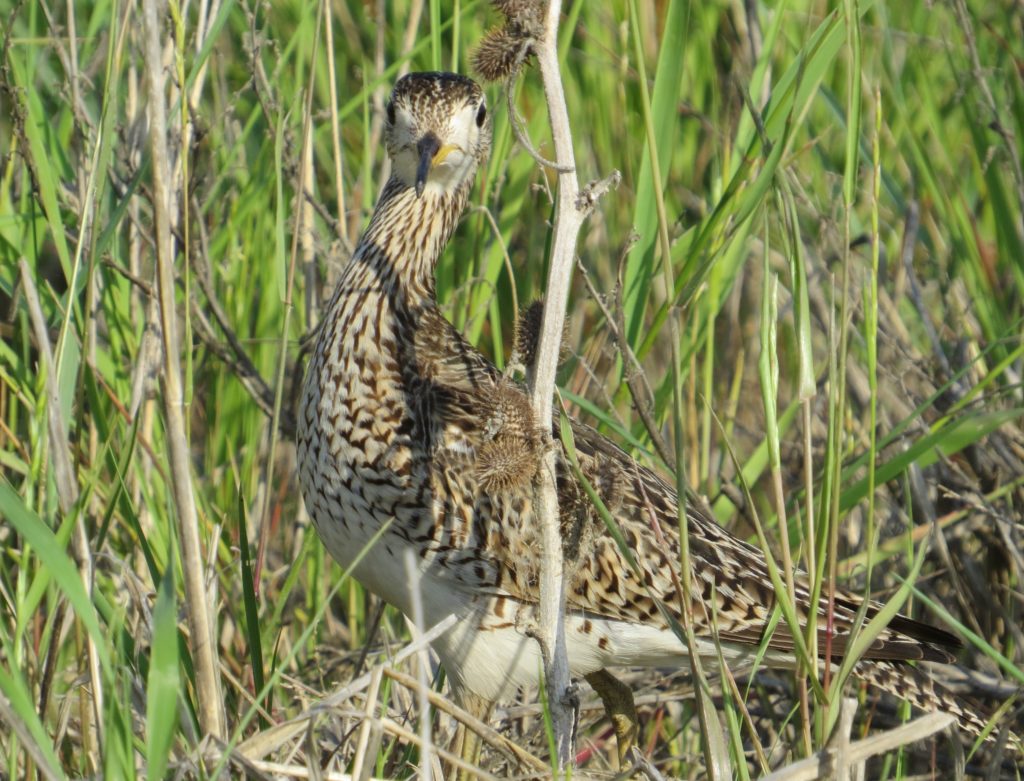 Steve and I felt pretty darn good about our trip and our nice haul of birds. We were completely satisfied, until….
Steve and I felt pretty darn good about our trip and our nice haul of birds. We were completely satisfied, until….
June 15th
Wayne Perala (remember nice guy, Wayne, from the Ibis story?) sent another shock wave through the Minnesota birding community by posting incredible pics of a King Rail, another accidental species that would be a lifer for me. Unfortunately timing was bad for me as I was getting ready to go on that Madeline Island trip that was highlighted by the last post. Indeed I had to suffer through pics and reports of many people adding the most recent North Ottawa mega to their lists.
June 23rd
Finally back from that Wisconsin vacation, Steve and I sneak up to the Impoundment in the evening. In the week since the Rail was discovered, other birders discovered there were two King Rails! Despite now having double the chance to see this lifer, our Rail search was a bust. The wind was raging and we were searching in slightly the wrong spot. We also tried searching for a lifer Nelson’s Sparrow reported by Becca Engdahl, but nothing likes to be out in the wind. Except Western Grebes, they don’t care.
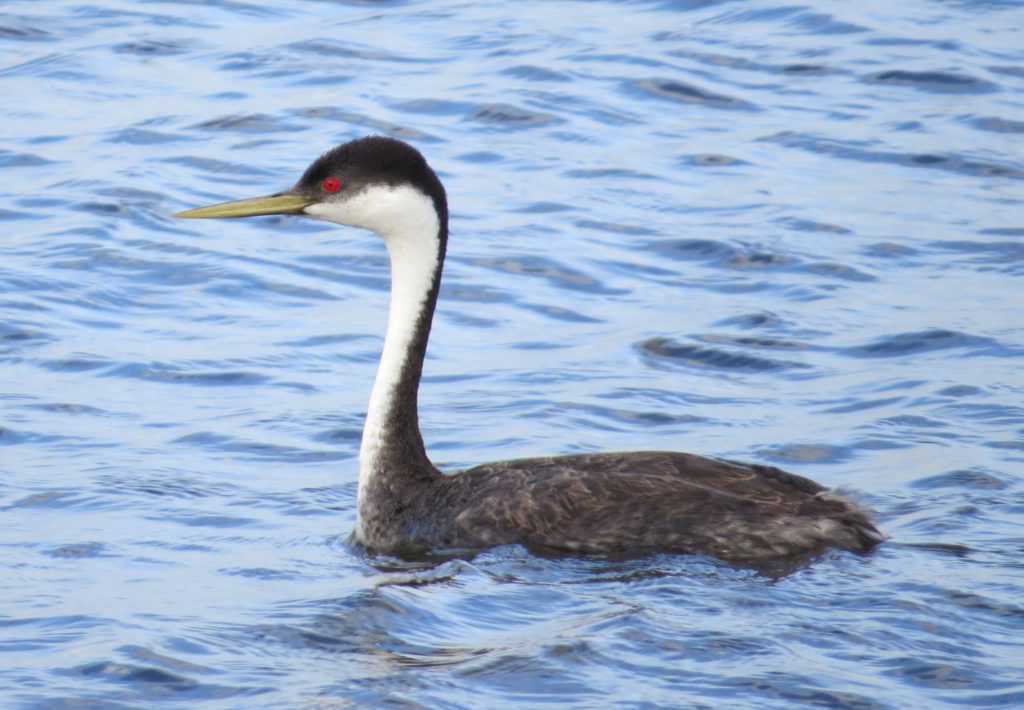 Steve and I did, however, see another casual species that was also discovered during this historic period of MN birding which I have failed to disclose in the timeline. A pair of Black-necked Stilts had set up shop in one of the shallow pools of the Impoundment. Considering I already had Black-necked Stilts for Grant County from several years ago and that Steve had just gotten this state bird recently, we just weren’t too fired up about it, especially after our double dip.
Steve and I did, however, see another casual species that was also discovered during this historic period of MN birding which I have failed to disclose in the timeline. A pair of Black-necked Stilts had set up shop in one of the shallow pools of the Impoundment. Considering I already had Black-necked Stilts for Grant County from several years ago and that Steve had just gotten this state bird recently, we just weren’t too fired up about it, especially after our double dip.
June 29th
With a renewed sense of optimism freshened up by continuing reports of the Rail pair, Steve and I headed back to Grant County for the third time in a month. This time we arrived at the crack of dawn on gloriously still day…in the right spot. Success.
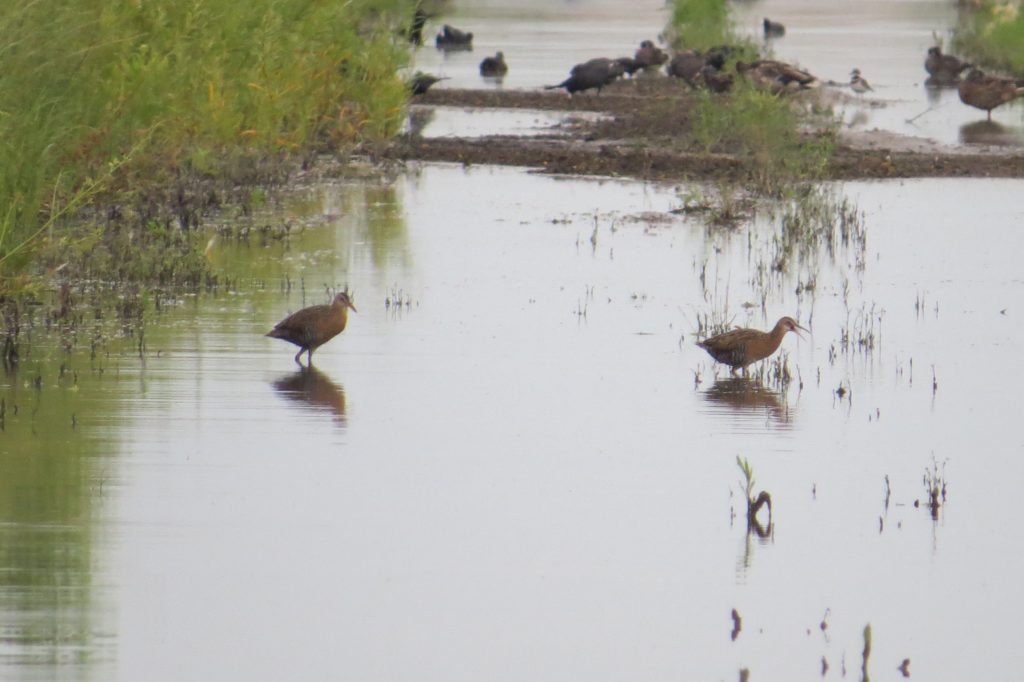 Look at the size of these things compared to the Mallards in the background. No wonder it’s the King of the Rails.
Look at the size of these things compared to the Mallards in the background. No wonder it’s the King of the Rails.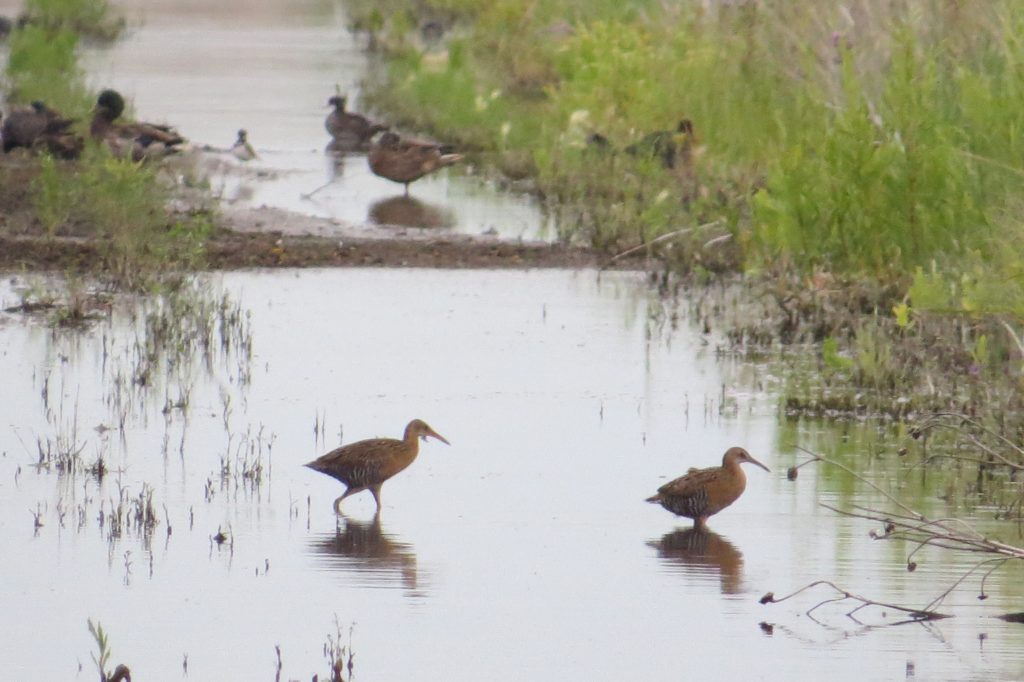
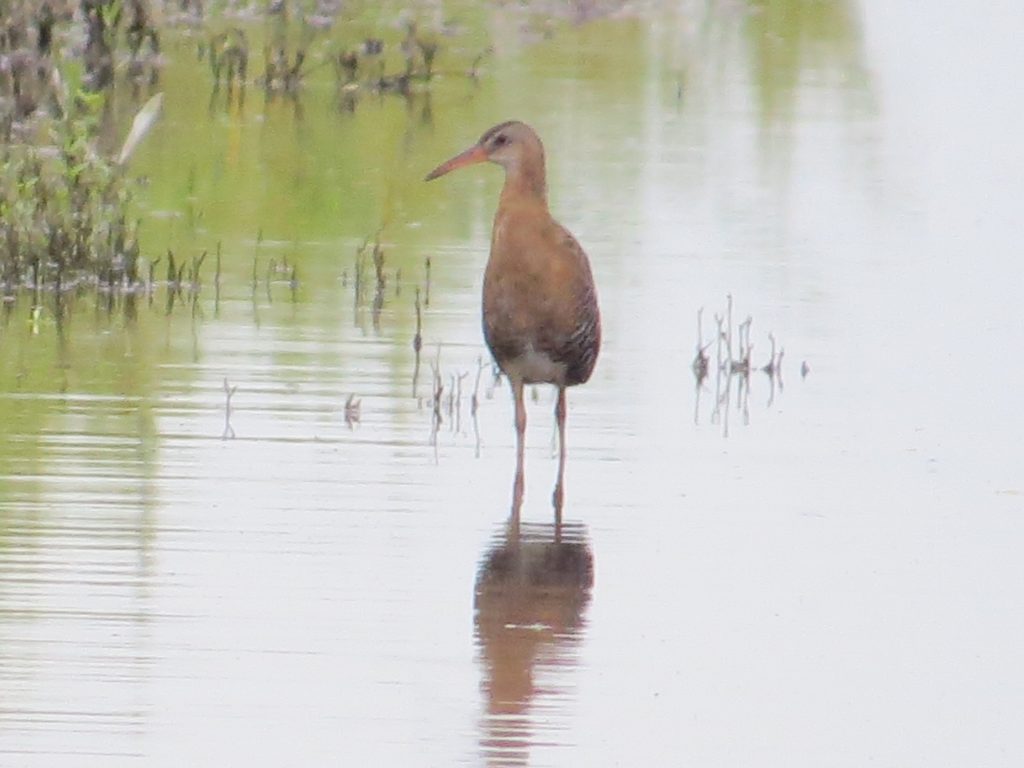 Birding is a roller coaster of emotions, and Steve and I were back on top after this sighting. Steve suggested we try for those Nelson’s Sparrows again. Despite our good fortune of the morning, I was skeptical we would find the Sparrows. But not looking certainly guarantees that outcome. So we walked the dike berm that we had a week ago. This time it definitely felt more Sparrowy–no wind, early morning, etc. We played the tape and didn’t get a response. Then a couple minutes later, I heard the recording, or what I thought was the recording, again. I asked Steve if he had left his phone app on. When he replied that he hadn’t we knew were hearing the real deal! We continued to work the area, and eventually we saw two Nelson’s Sparrows!
Birding is a roller coaster of emotions, and Steve and I were back on top after this sighting. Steve suggested we try for those Nelson’s Sparrows again. Despite our good fortune of the morning, I was skeptical we would find the Sparrows. But not looking certainly guarantees that outcome. So we walked the dike berm that we had a week ago. This time it definitely felt more Sparrowy–no wind, early morning, etc. We played the tape and didn’t get a response. Then a couple minutes later, I heard the recording, or what I thought was the recording, again. I asked Steve if he had left his phone app on. When he replied that he hadn’t we knew were hearing the real deal! We continued to work the area, and eventually we saw two Nelson’s Sparrows!
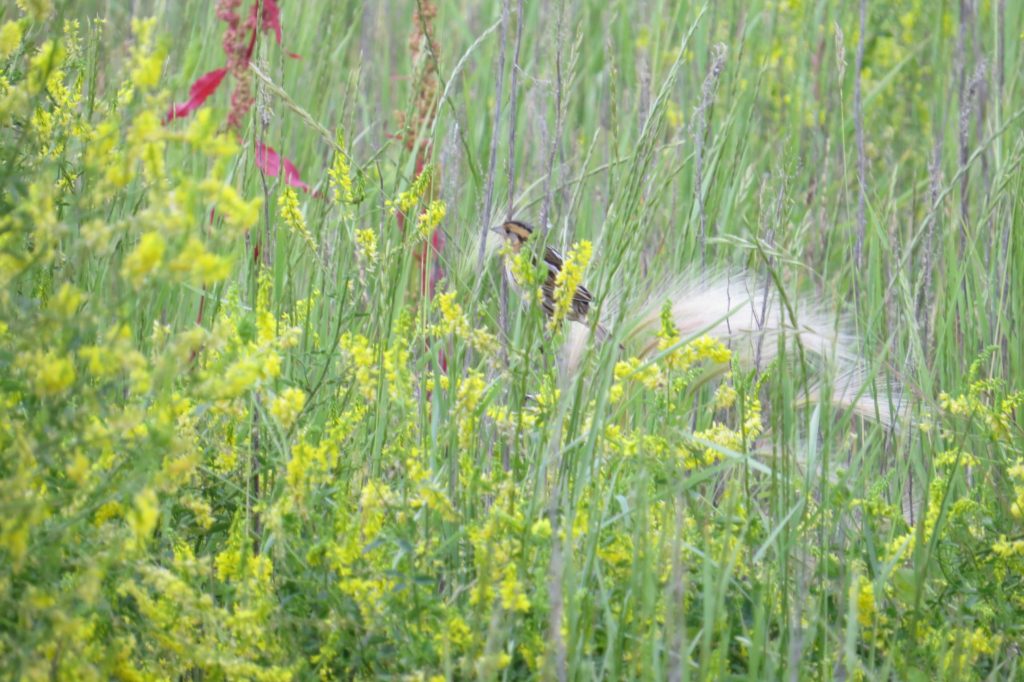 With some pishing we were able to get them to pop up for some great looks at these skulkers.
With some pishing we were able to get them to pop up for some great looks at these skulkers.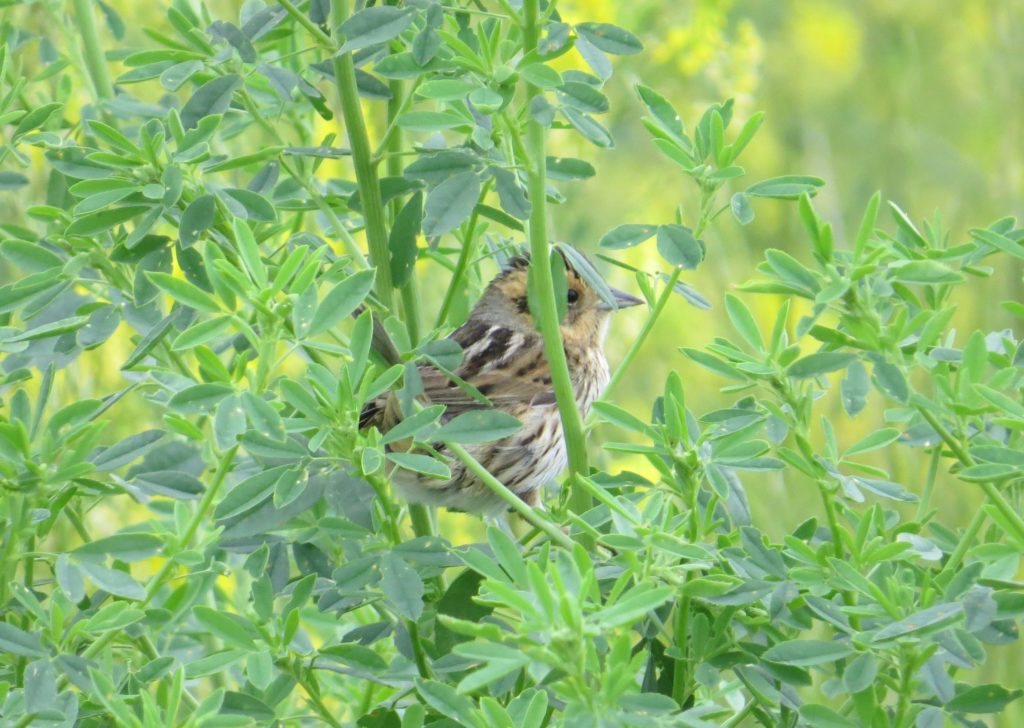
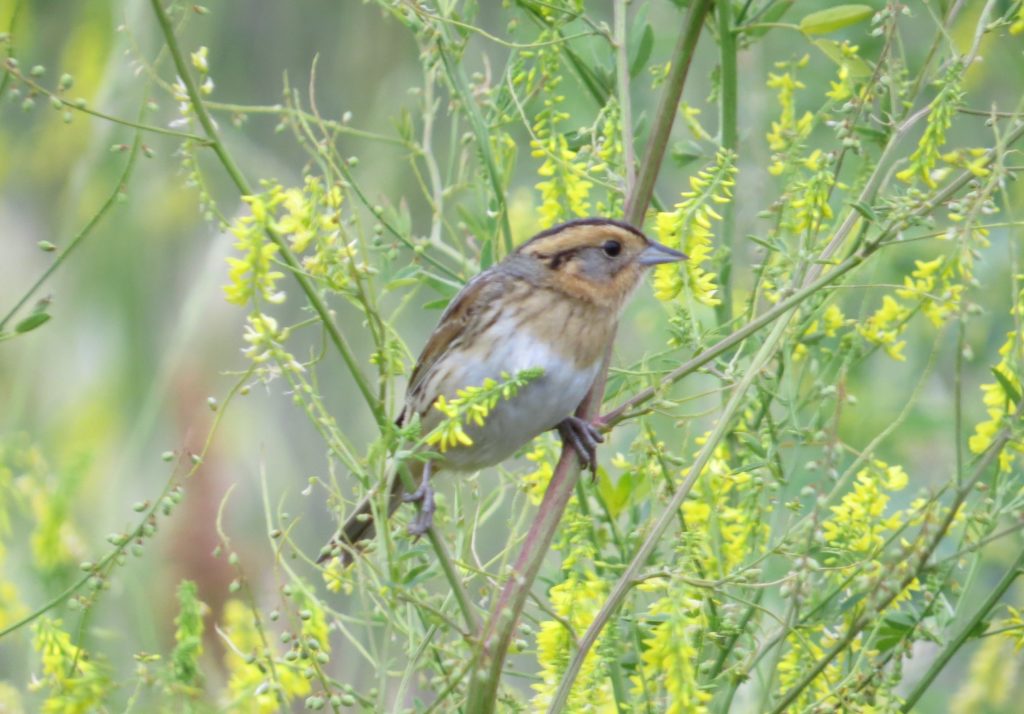 Steve and I followed these birds around for a bit, thoroughly soaking up the experience. I don’t think either of us ever expected to lifer on this bird with such good looks. We certainly didn’t expect to get this lifer in Grant County. This nighttime singer is often a heard-only bird that people trek to middle of nowhere (McGregor) to find in the middle of the night. We were stupefied. Talking it over on the ride home, we concluded that the Nelson’s Sparrow lifer experience topped the King Rails even though the Sparrow is a summer resident in our state. More than once I have been surprised by how much of an impact a Sparrow lifer has on me. A huge thanks goes out to Becca Engdahl for her find and her tips on locating it!
Steve and I followed these birds around for a bit, thoroughly soaking up the experience. I don’t think either of us ever expected to lifer on this bird with such good looks. We certainly didn’t expect to get this lifer in Grant County. This nighttime singer is often a heard-only bird that people trek to middle of nowhere (McGregor) to find in the middle of the night. We were stupefied. Talking it over on the ride home, we concluded that the Nelson’s Sparrow lifer experience topped the King Rails even though the Sparrow is a summer resident in our state. More than once I have been surprised by how much of an impact a Sparrow lifer has on me. A huge thanks goes out to Becca Engdahl for her find and her tips on locating it!
The reports out of North Ottawa definitely dried up in July. That was okay with me because I, along with many others, were spoiled rotten by the place. Additionally, I was okay with not having to run up to Grant County again because I had been working hard on achieving a birding goal much closer to home, a goal that has since been achieved and will be the highlight of the next post.

 Of course, no boys take this more seriously than the male Warblers of the island. With nearly twenty different species being present on the island, one cannot escape these singing sensations as they belt out their territorial songs telling rival males and the whole world that this is their house.
Of course, no boys take this more seriously than the male Warblers of the island. With nearly twenty different species being present on the island, one cannot escape these singing sensations as they belt out their territorial songs telling rival males and the whole world that this is their house.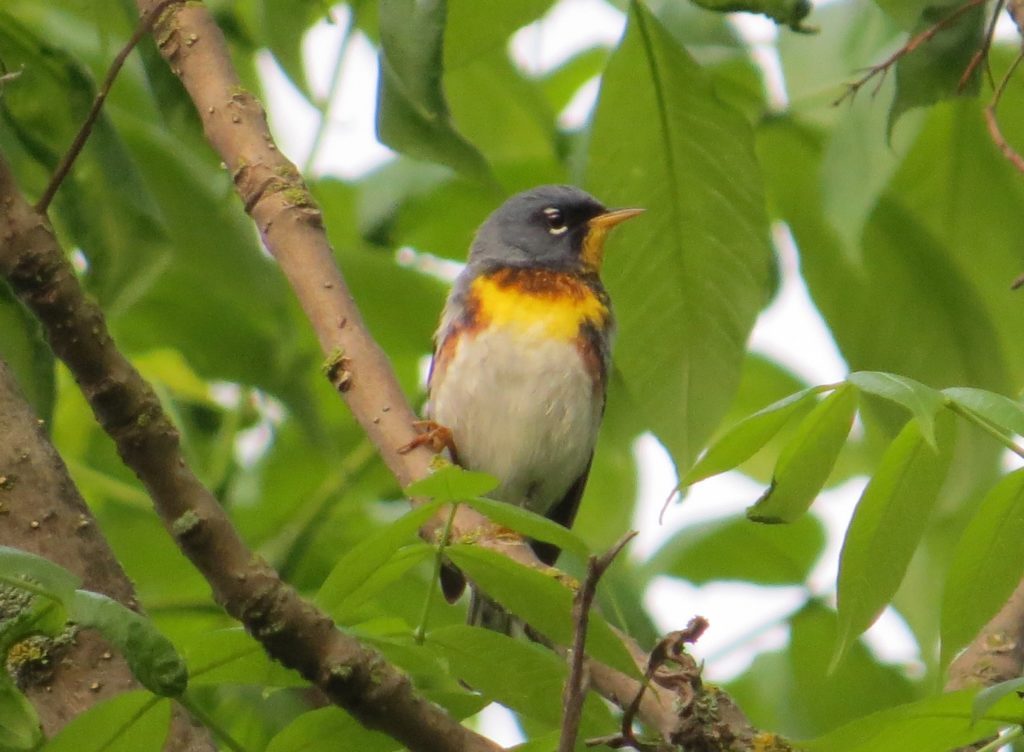
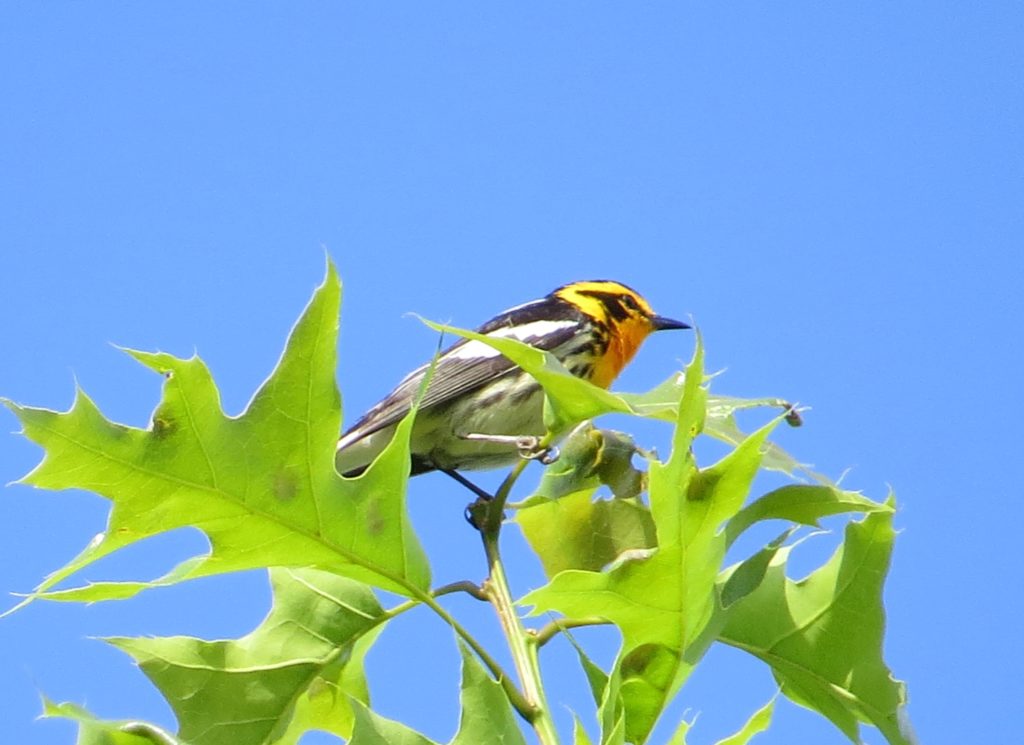 Photographing Warblers in their natural habitat is the best. Here this Blackburnian is posing where he is most comfortable–atop a Black Spruce in a decent-sized (and only) bog on the island.
Photographing Warblers in their natural habitat is the best. Here this Blackburnian is posing where he is most comfortable–atop a Black Spruce in a decent-sized (and only) bog on the island.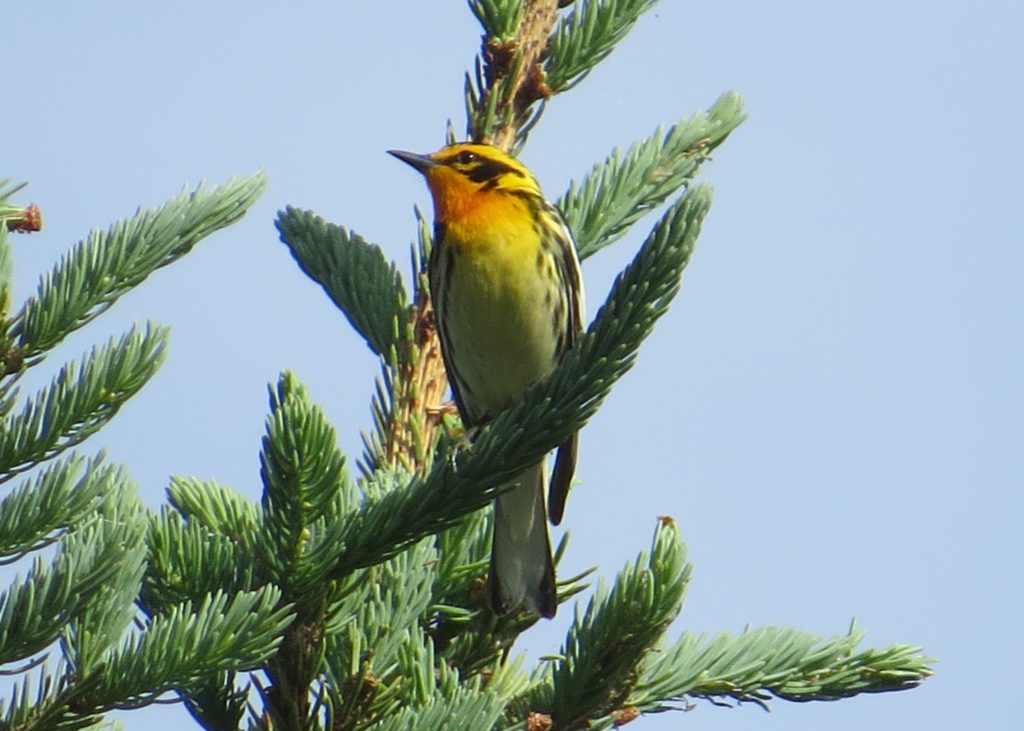
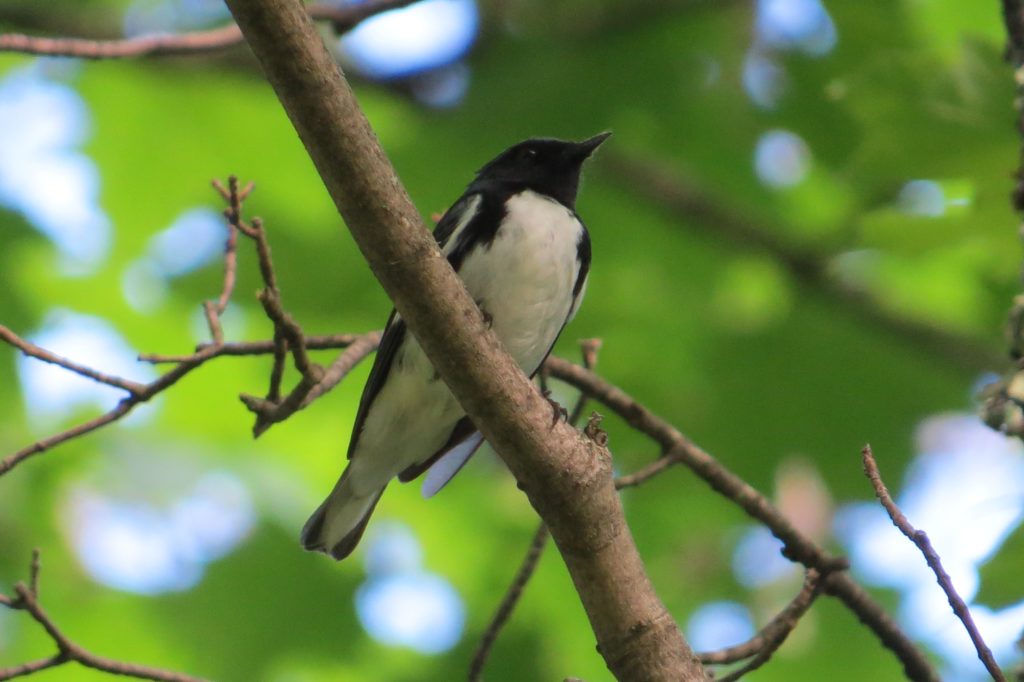
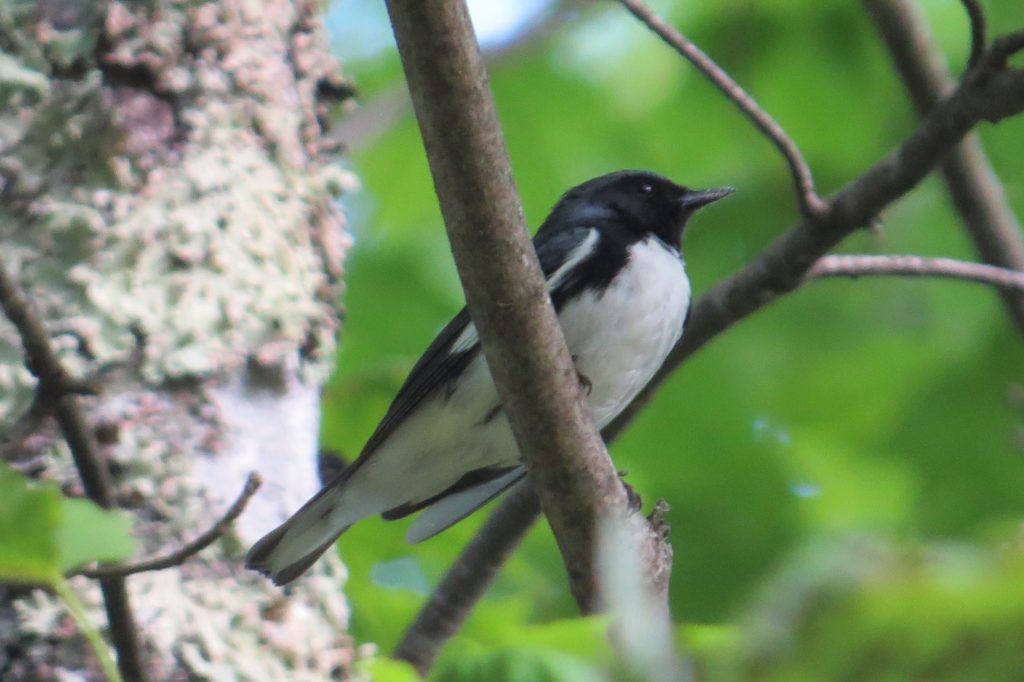
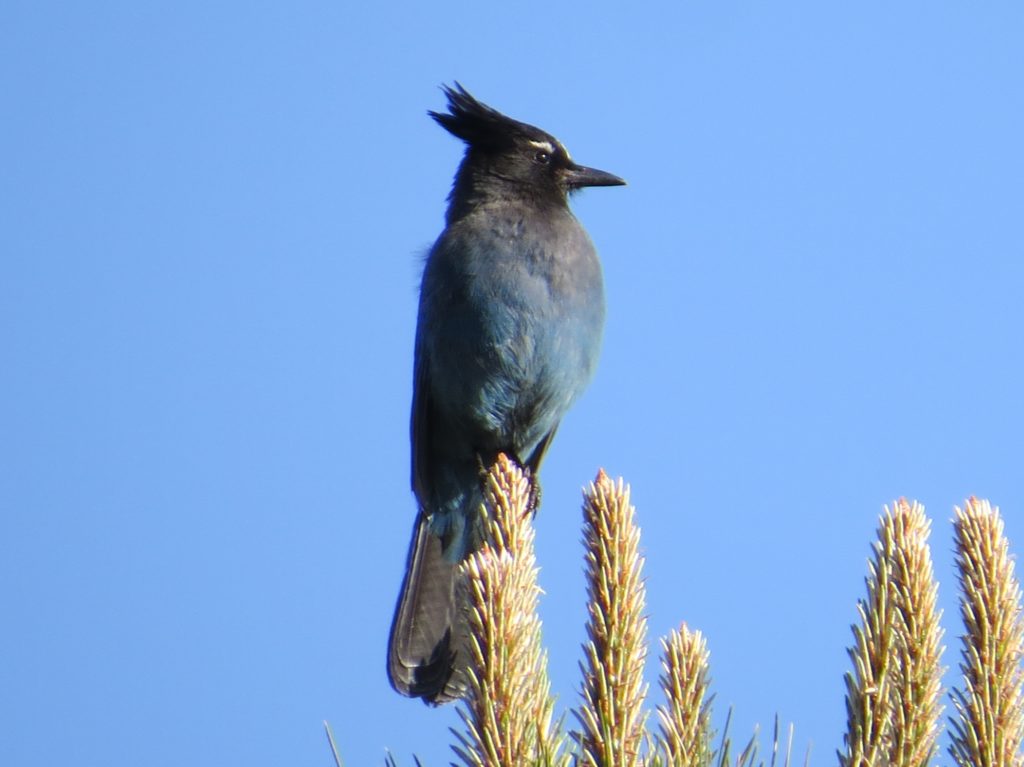
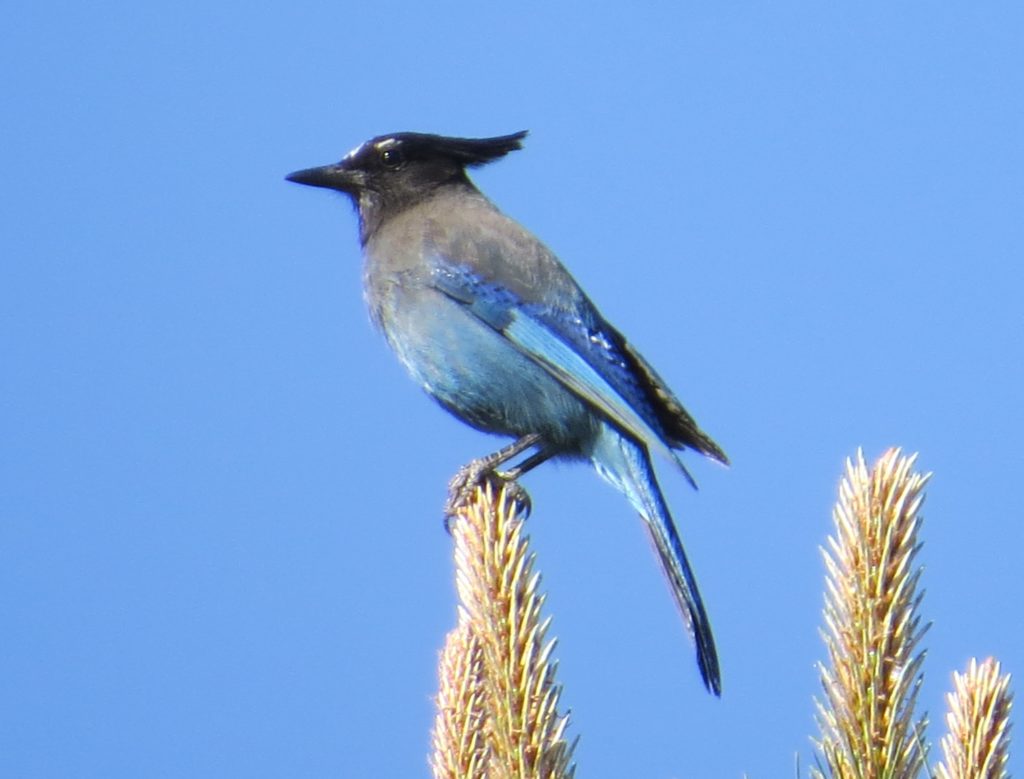 Another montane, neighborhood bird at the resort was the Black-headed Grosbeak. Though I’ve seen them in Colorado and South Dakota, the views have always been fleeting and unsatisfying. This encounter went a long way toward rectifying that.
Another montane, neighborhood bird at the resort was the Black-headed Grosbeak. Though I’ve seen them in Colorado and South Dakota, the views have always been fleeting and unsatisfying. This encounter went a long way toward rectifying that.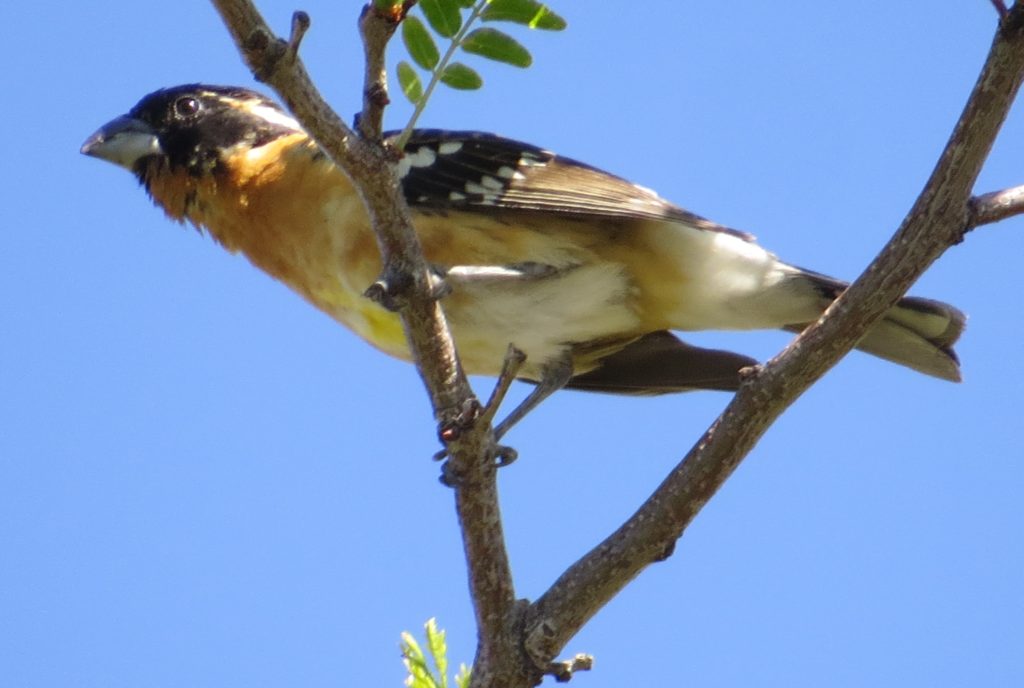
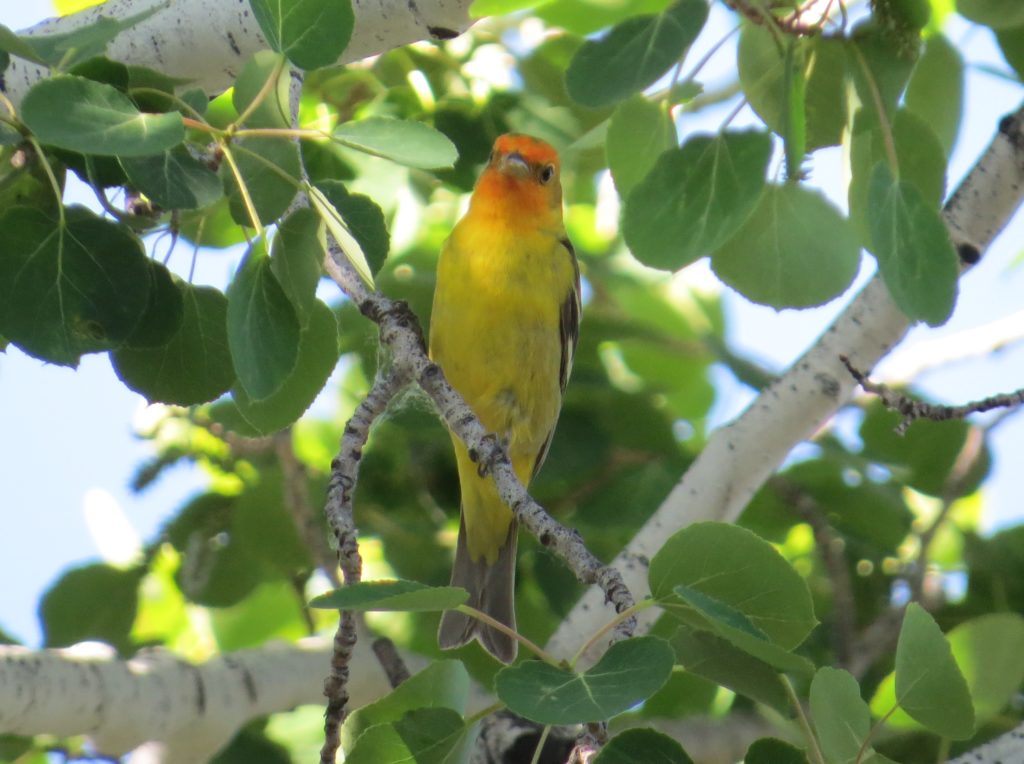
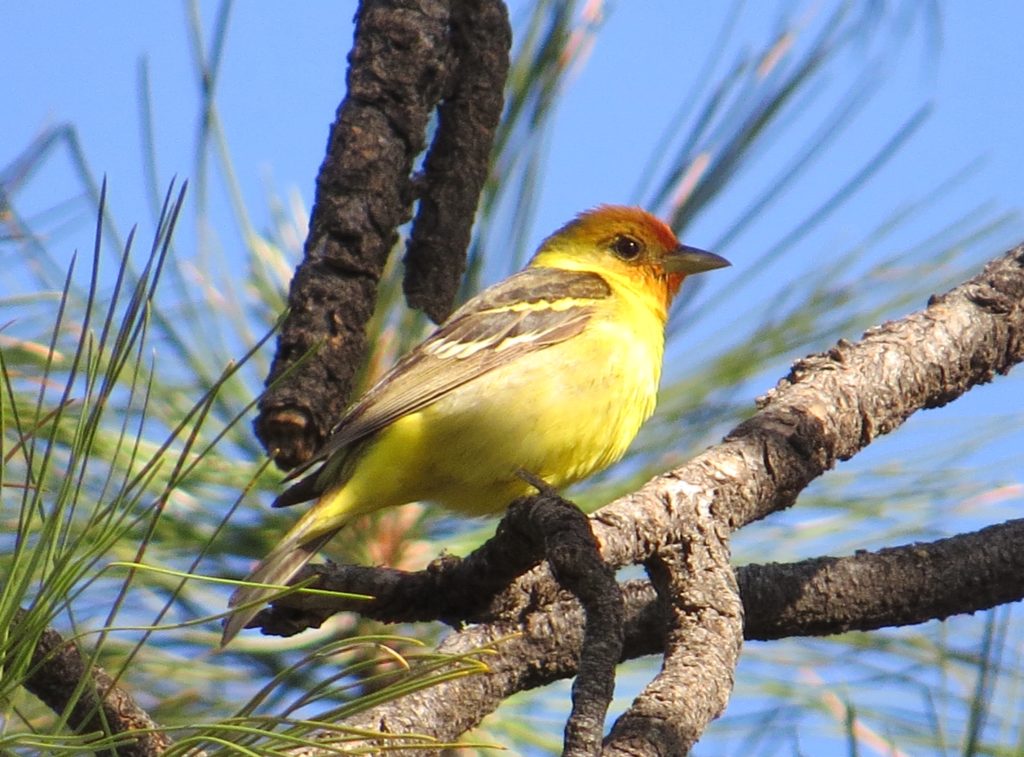
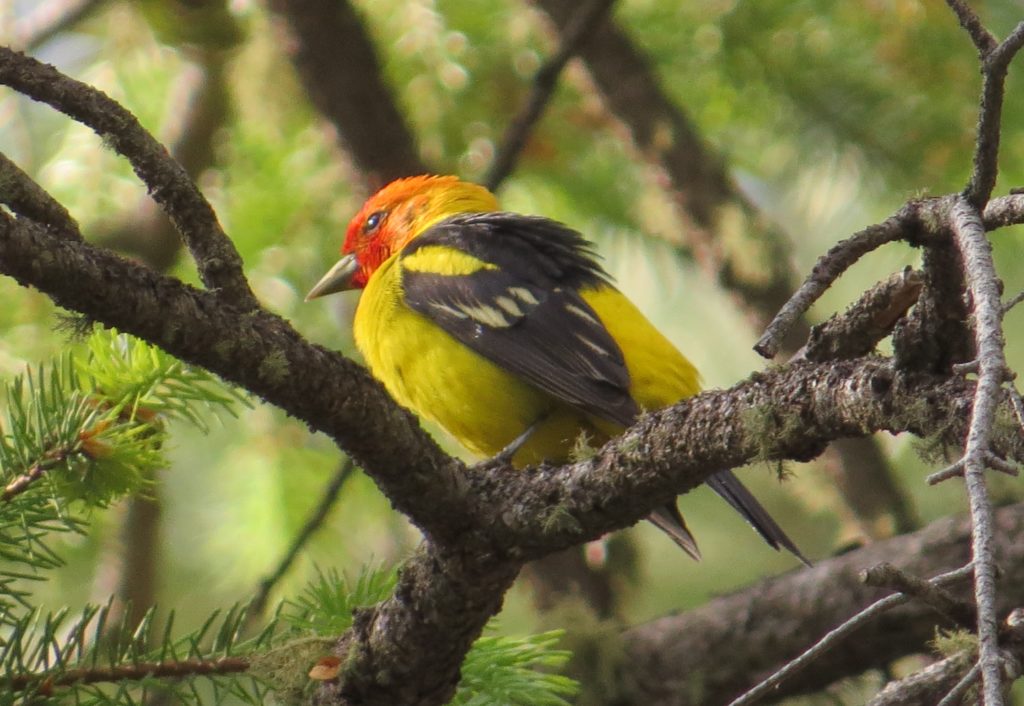 Literally a neighbor bird inhabiting the Ponderosa Pines right outside our balcony was the Pygmy Nuthatch. These guys are industrious little busy-bodies. As such, my only other time seeing them in the past resulted in a poor photo op. Not much changed on this trip despite being merely 5 feet away. Pygmy Nuthatch could see blog time again.
Literally a neighbor bird inhabiting the Ponderosa Pines right outside our balcony was the Pygmy Nuthatch. These guys are industrious little busy-bodies. As such, my only other time seeing them in the past resulted in a poor photo op. Not much changed on this trip despite being merely 5 feet away. Pygmy Nuthatch could see blog time again.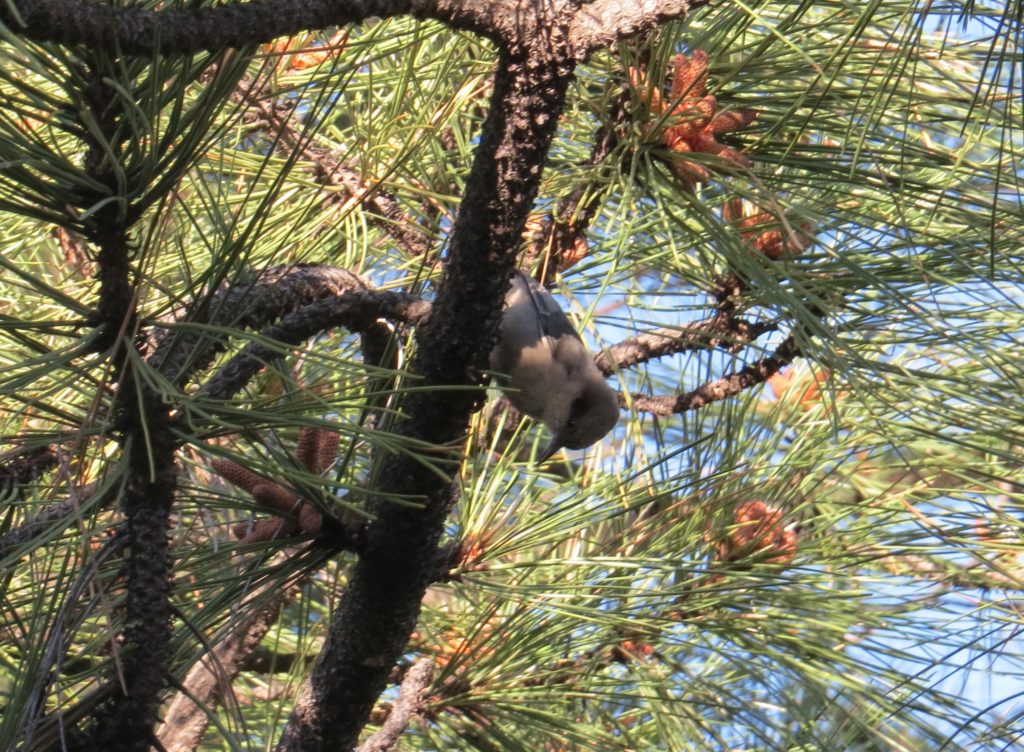
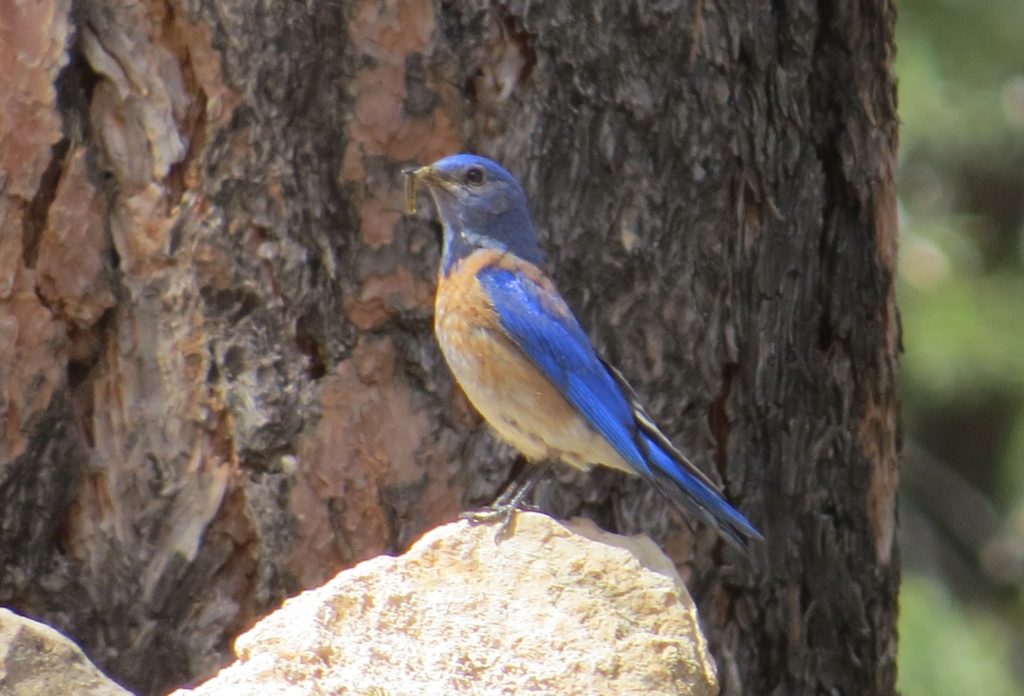
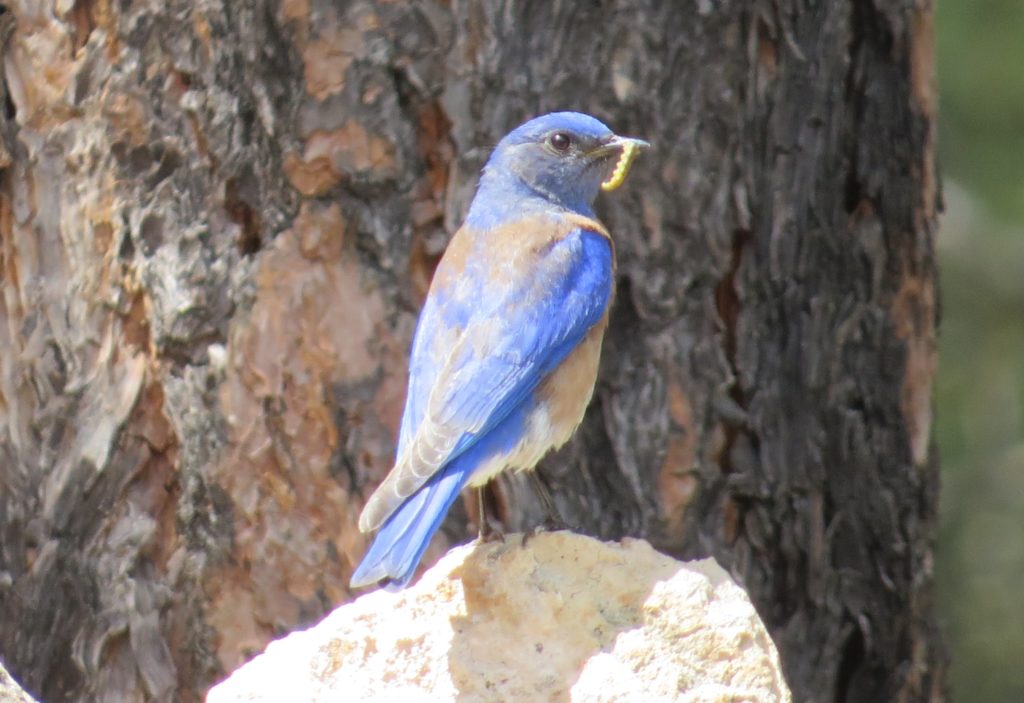 Away from the resort there were some other non-lifer favorites, like this American Three-toed Woodpecker along the Schultz Pass Road. Keep in mind that I had only ever seen one before just this past spring in Minnesota. This bird very much still has lifer freshness associated with it. While the unique drumming sound of this Woodpecker was the same as the one back home, its back was not. Note how white the back is on this Rocky Mountains subspecies of the ATTW; the back of the East Taiga subspecies that we have in Minnesota is nearly all black with small white flecks.
Away from the resort there were some other non-lifer favorites, like this American Three-toed Woodpecker along the Schultz Pass Road. Keep in mind that I had only ever seen one before just this past spring in Minnesota. This bird very much still has lifer freshness associated with it. While the unique drumming sound of this Woodpecker was the same as the one back home, its back was not. Note how white the back is on this Rocky Mountains subspecies of the ATTW; the back of the East Taiga subspecies that we have in Minnesota is nearly all black with small white flecks.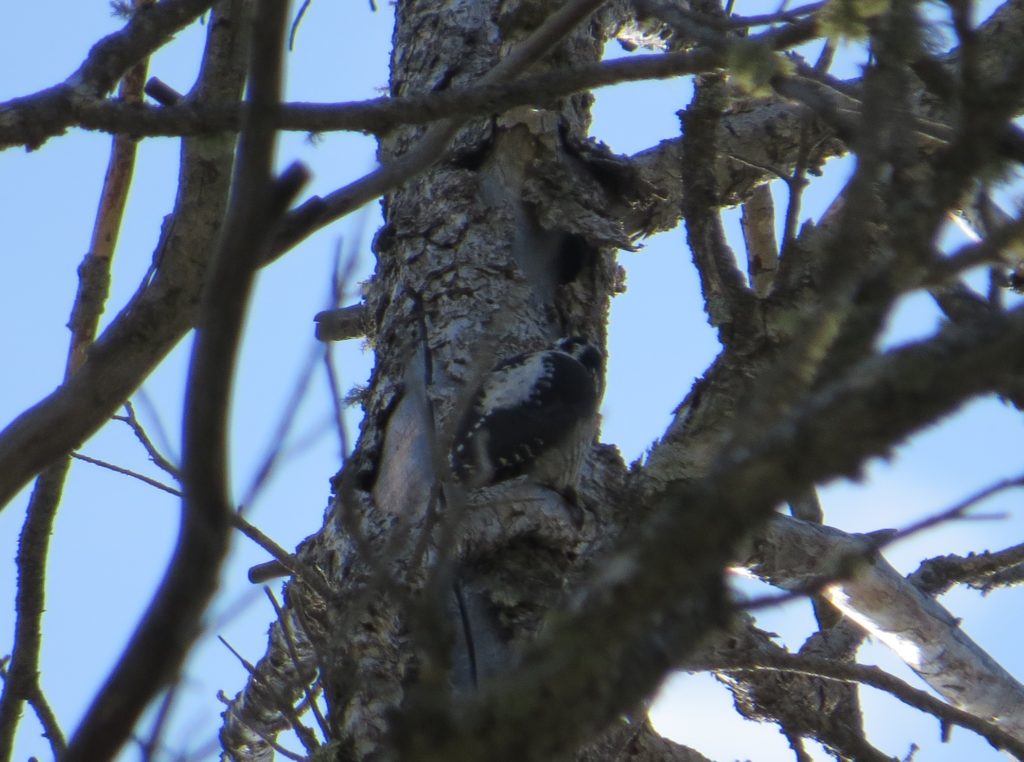 In Oak Creek Canyon at Grasshopper Point Recreation Area, a Bridled Titmouse was a pleasant surprise.
In Oak Creek Canyon at Grasshopper Point Recreation Area, a Bridled Titmouse was a pleasant surprise.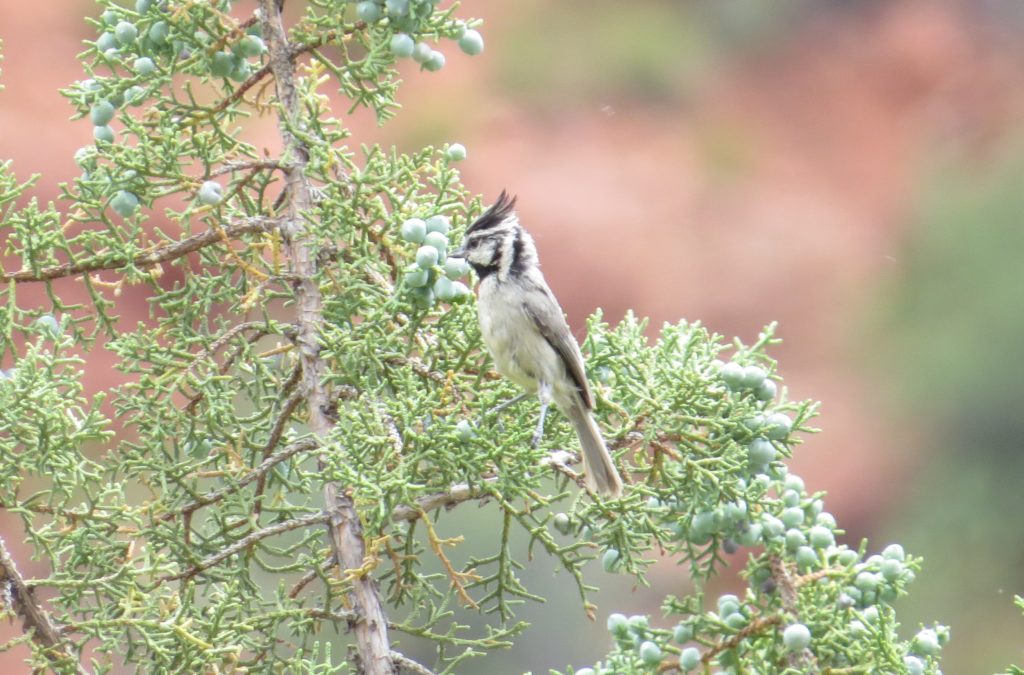 And the Grand Canyon is never more grand than when it serves as a backdrop from a rim-perching Black-throated Gray Warbler, a bird I have wished to have better photographs of for a long time.
And the Grand Canyon is never more grand than when it serves as a backdrop from a rim-perching Black-throated Gray Warbler, a bird I have wished to have better photographs of for a long time.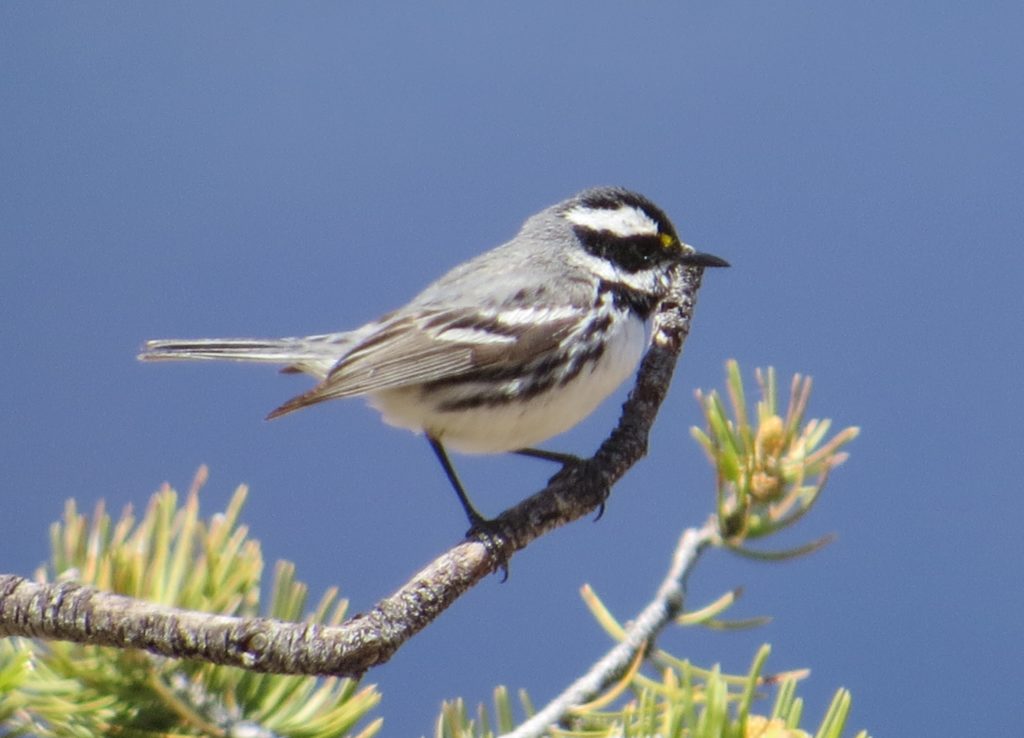
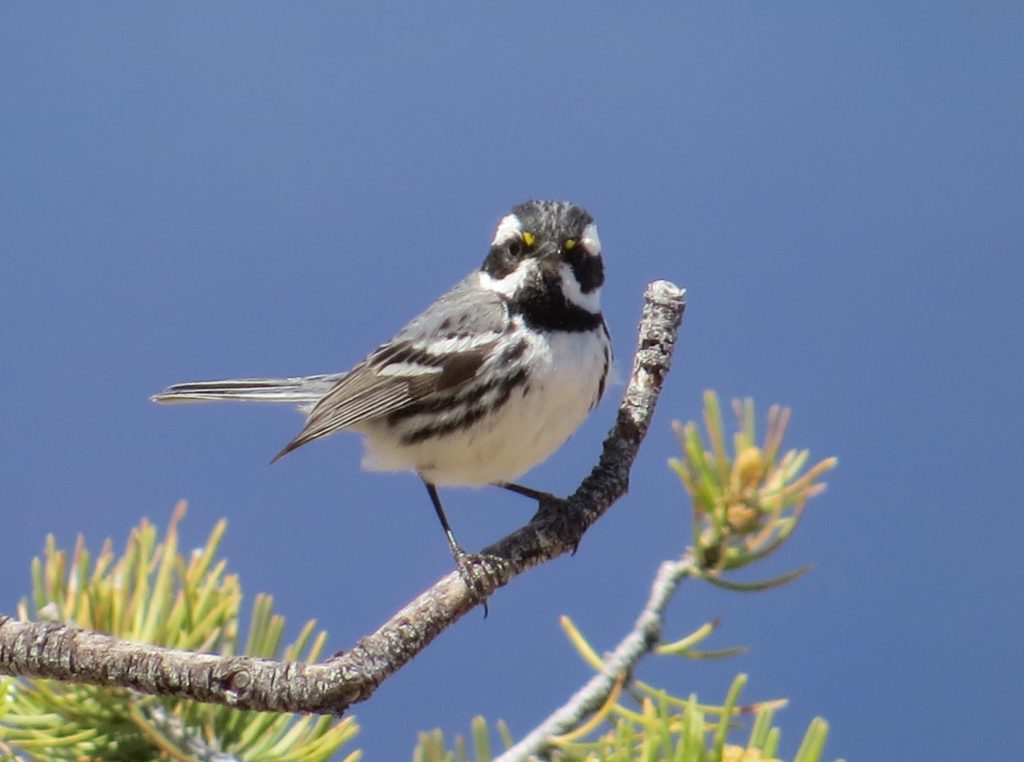 That’s it for Arizona this time. There will be more this winter. For the next post we’re headed to Wisconsin’s Apostle Islands for some Warble action.
That’s it for Arizona this time. There will be more this winter. For the next post we’re headed to Wisconsin’s Apostle Islands for some Warble action.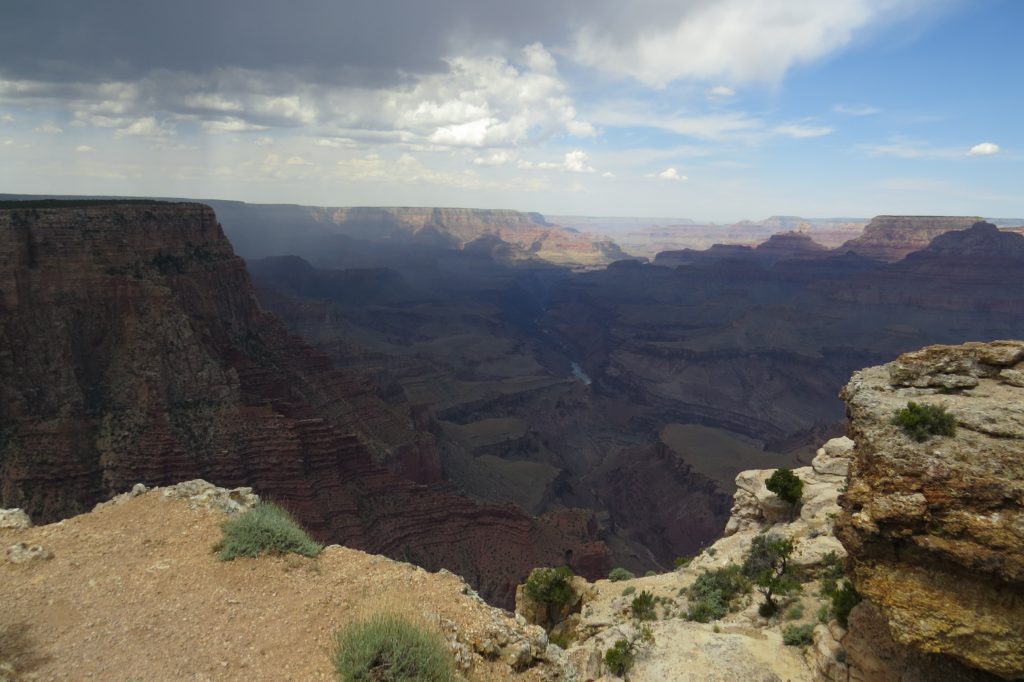 Technically speaking it was not a lifer for me as I had been here as a small child. Since I have no memory of it and I have a family of my own who hadn’t seen it, the time was right for a visit. Plus, the visit to Grand Canyon National Park was completely FREE thanks to the government’s Every Kid in a Park program where each 4th grade student in America can get his/her entire family and vehicle into any national park all summer long at no cost. The lack of entry fee was definitely the icing on the cake because this place is impressive regardless. The grandeur of the Grand Canyon and how it makes you feel when you are standing next to that vastness is nearly impossible to describe in words and capture in photographs. Hopefully these kids will at least remember the experience.
Technically speaking it was not a lifer for me as I had been here as a small child. Since I have no memory of it and I have a family of my own who hadn’t seen it, the time was right for a visit. Plus, the visit to Grand Canyon National Park was completely FREE thanks to the government’s Every Kid in a Park program where each 4th grade student in America can get his/her entire family and vehicle into any national park all summer long at no cost. The lack of entry fee was definitely the icing on the cake because this place is impressive regardless. The grandeur of the Grand Canyon and how it makes you feel when you are standing next to that vastness is nearly impossible to describe in words and capture in photographs. Hopefully these kids will at least remember the experience.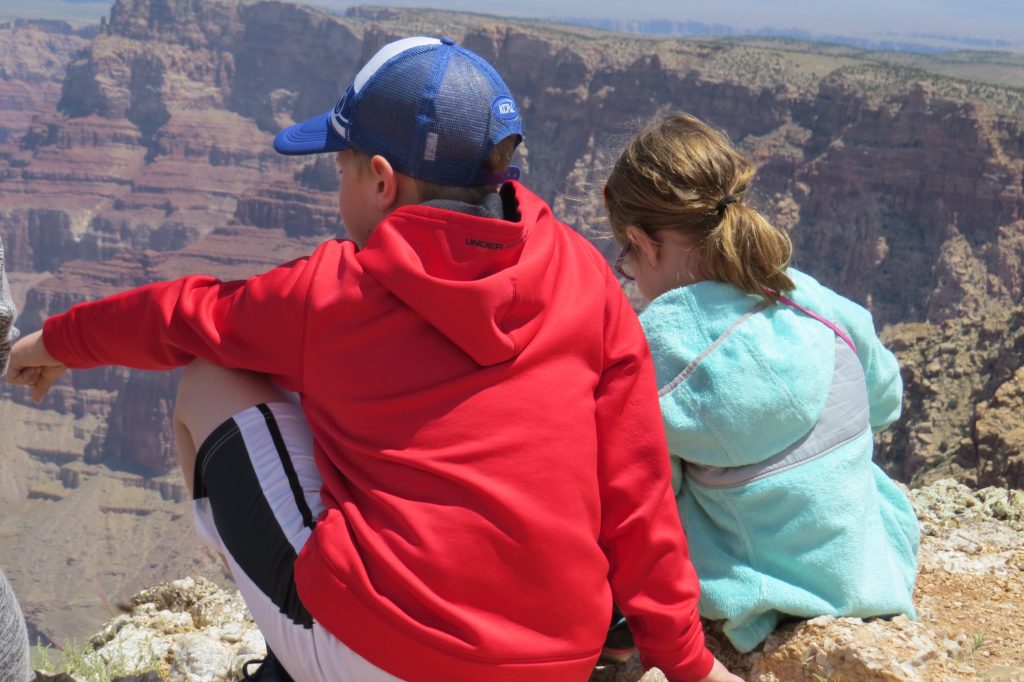
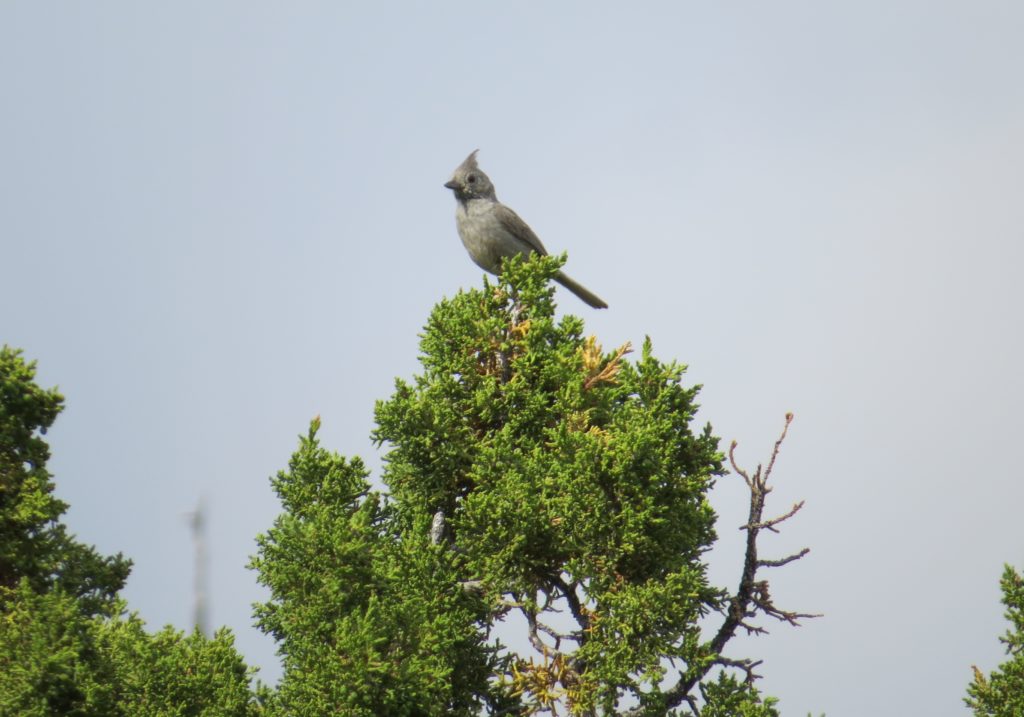
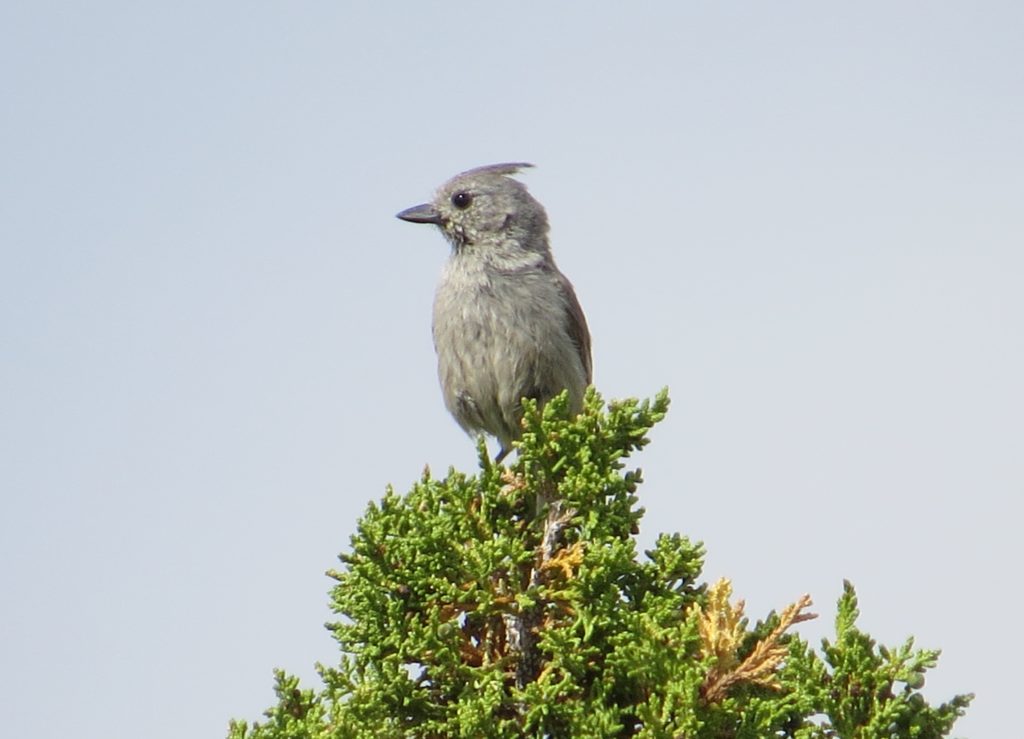 Tommy found me this bird while we were stopped for a different lifer. As I had been driving I knew to be vigilant for Pinyon Jays. There were a couple times while cruising at highway speeds that I thought I saw blue-colored birds cross the highway, but with no shoulder on which to pull off, I couldn’t stop to check. All doubt was erased at one point, though, when several blue-colored birds were flying across the highway in groups. I found a spot to pull over and observe my lifer Pinyon Jay. Photographing them proved impossible as the birds were between me and the sun. They also hid remarkably well in the junipers, only giving away there presence as they flushed away. This happened over and over as we probably saw over 50 in all, flushing in small groups. It was frustrating but still fun to see the behavior of this bird and hear its fun, laughing call.
Tommy found me this bird while we were stopped for a different lifer. As I had been driving I knew to be vigilant for Pinyon Jays. There were a couple times while cruising at highway speeds that I thought I saw blue-colored birds cross the highway, but with no shoulder on which to pull off, I couldn’t stop to check. All doubt was erased at one point, though, when several blue-colored birds were flying across the highway in groups. I found a spot to pull over and observe my lifer Pinyon Jay. Photographing them proved impossible as the birds were between me and the sun. They also hid remarkably well in the junipers, only giving away there presence as they flushed away. This happened over and over as we probably saw over 50 in all, flushing in small groups. It was frustrating but still fun to see the behavior of this bird and hear its fun, laughing call.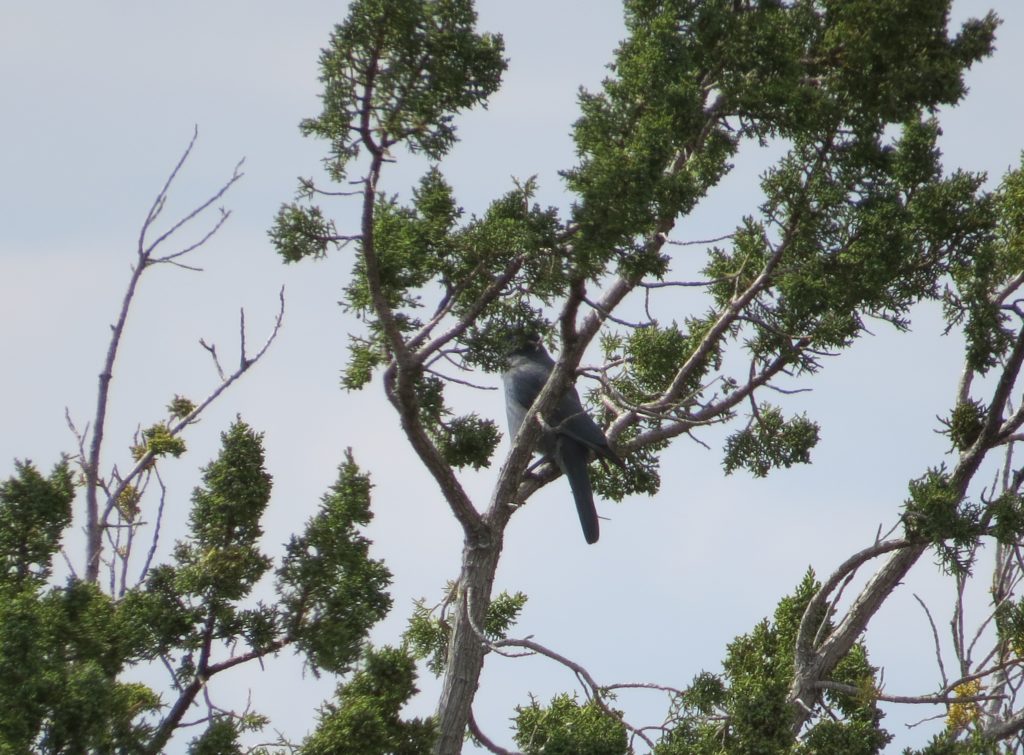
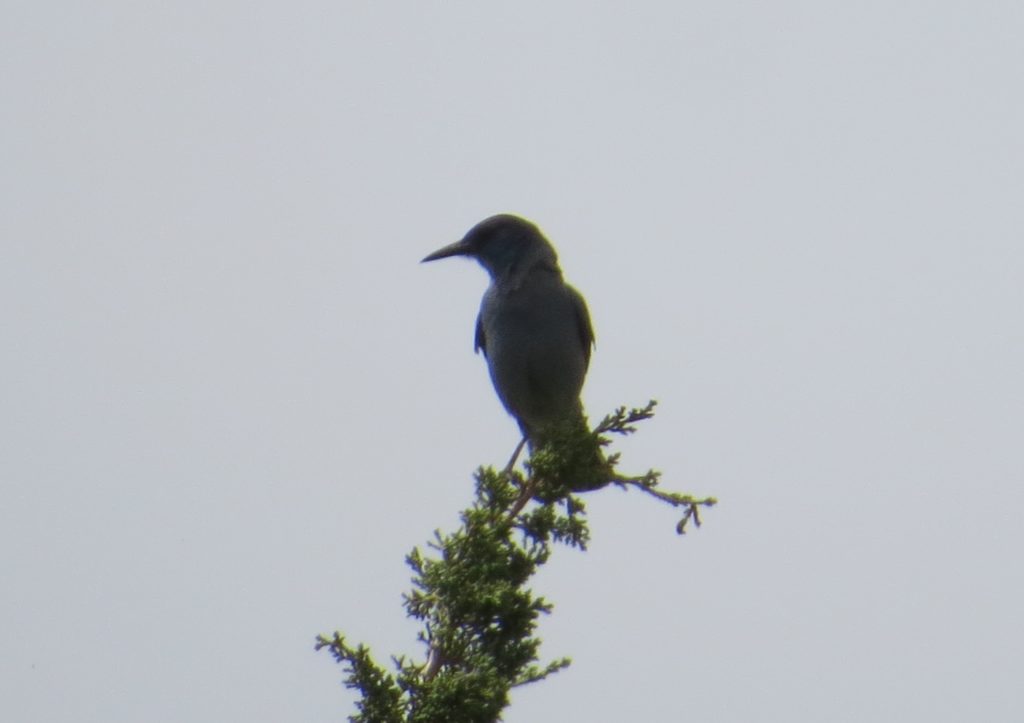 The morning after the Grand Canyon adventure, Tommy and I birded the Flagstaff area hitting up Elden Springs Road and the Schultz Pass Road. The birding was incredible, but since this is just a lifer post, we’ll stick to those. The first lifer was the Grace’s Warbler, a striking bird that loves the Pines.
The morning after the Grand Canyon adventure, Tommy and I birded the Flagstaff area hitting up Elden Springs Road and the Schultz Pass Road. The birding was incredible, but since this is just a lifer post, we’ll stick to those. The first lifer was the Grace’s Warbler, a striking bird that loves the Pines.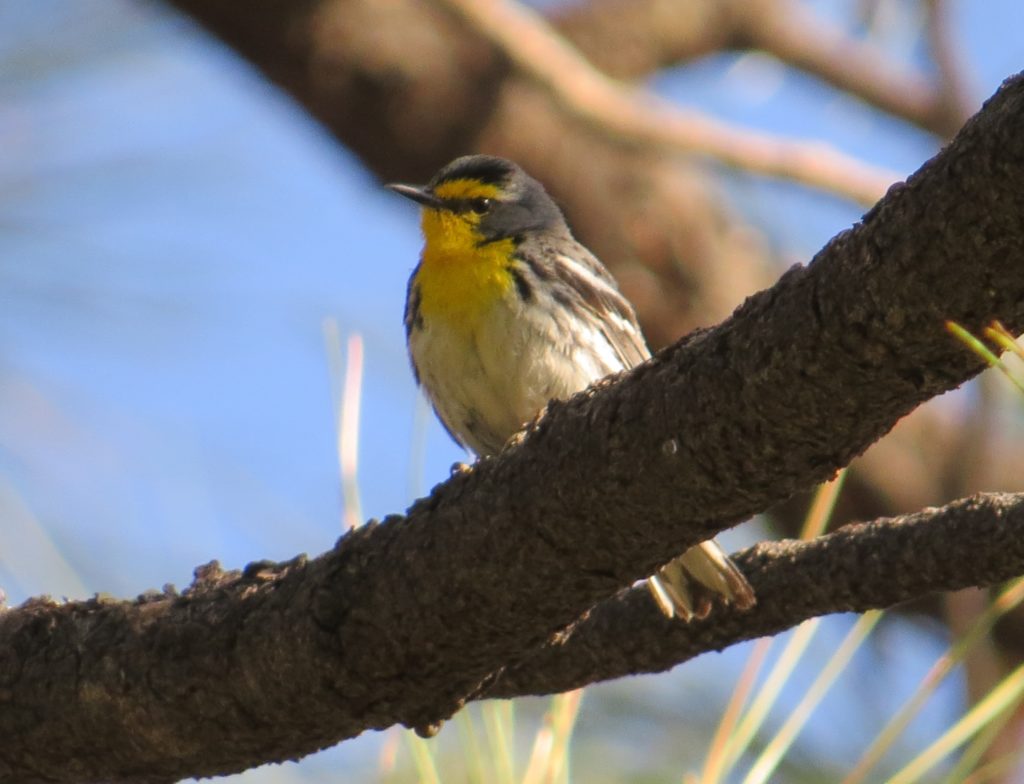
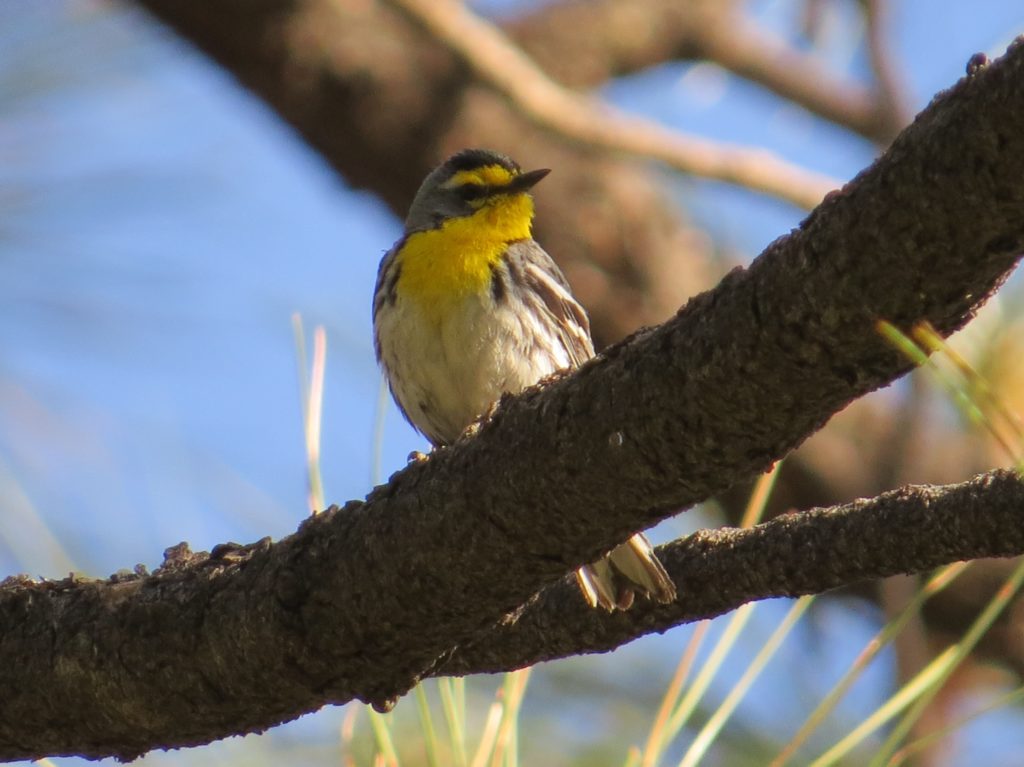 While lifering on this bird, I simultaneously lifered on Plumbeous Vireo. This is another bird that loves life in the Pines. Both my new lifers could be heard and seen at the same time, sometimes even in the same tree!
While lifering on this bird, I simultaneously lifered on Plumbeous Vireo. This is another bird that loves life in the Pines. Both my new lifers could be heard and seen at the same time, sometimes even in the same tree!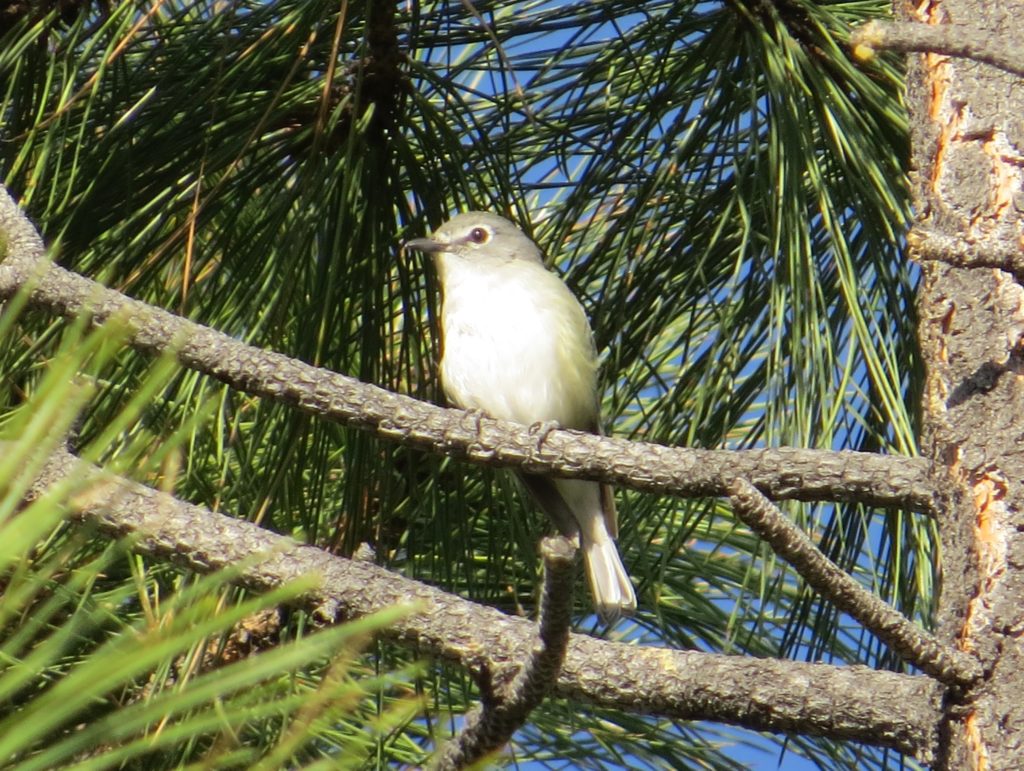
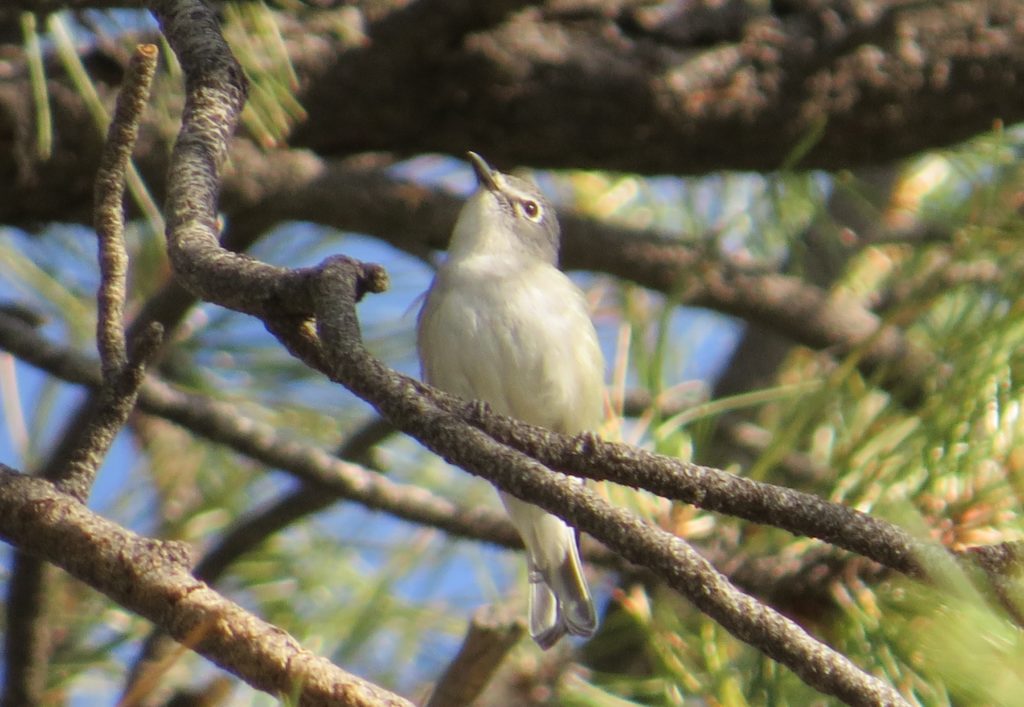 Elden Springs Road merges on to Schultz Pass Road, which was a reported location of numerous individuals of the bird I wanted to see most, the Red-faced Warbler. Tommy had me stop at a spot that looked like good habitat for this warbler–dense stands of Douglas Fir on a slope next to a somewhat open area of Aspens. Sure enough, Tommy picked out a singing Red-faced Warbler almost immediately. As we were trying to get visuals on it, Tommy spotted another lifer for me and one I had been hoping for–a male Williamson’s Sapsucker! Even though the Red-faced Warbler was my most wanted bird after the Flam, we know that would be a relatively easy bird along Schultz Pass Road. Therefore, we ditched the Red-face we had been hearing in an effort to track down the dapper and somewhat elusive Sapsucker. It sure was a tease at first and not offering up much to view.
Elden Springs Road merges on to Schultz Pass Road, which was a reported location of numerous individuals of the bird I wanted to see most, the Red-faced Warbler. Tommy had me stop at a spot that looked like good habitat for this warbler–dense stands of Douglas Fir on a slope next to a somewhat open area of Aspens. Sure enough, Tommy picked out a singing Red-faced Warbler almost immediately. As we were trying to get visuals on it, Tommy spotted another lifer for me and one I had been hoping for–a male Williamson’s Sapsucker! Even though the Red-faced Warbler was my most wanted bird after the Flam, we know that would be a relatively easy bird along Schultz Pass Road. Therefore, we ditched the Red-face we had been hearing in an effort to track down the dapper and somewhat elusive Sapsucker. It sure was a tease at first and not offering up much to view.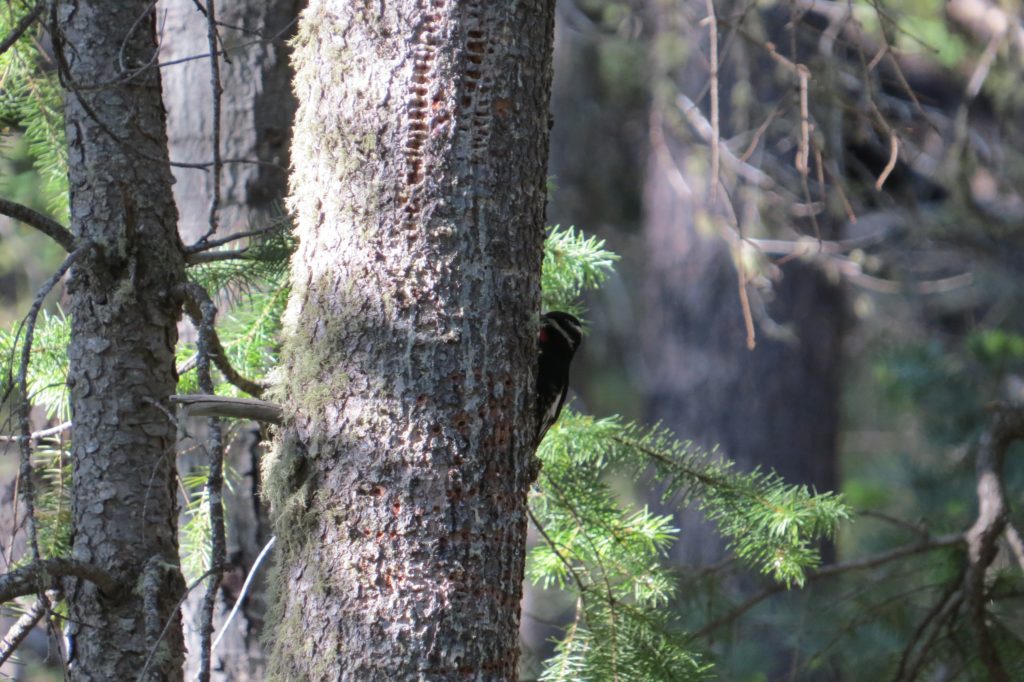 Eventually we got the full monty as it was too busy drilling sap wells to care about a couple of gawkers.
Eventually we got the full monty as it was too busy drilling sap wells to care about a couple of gawkers.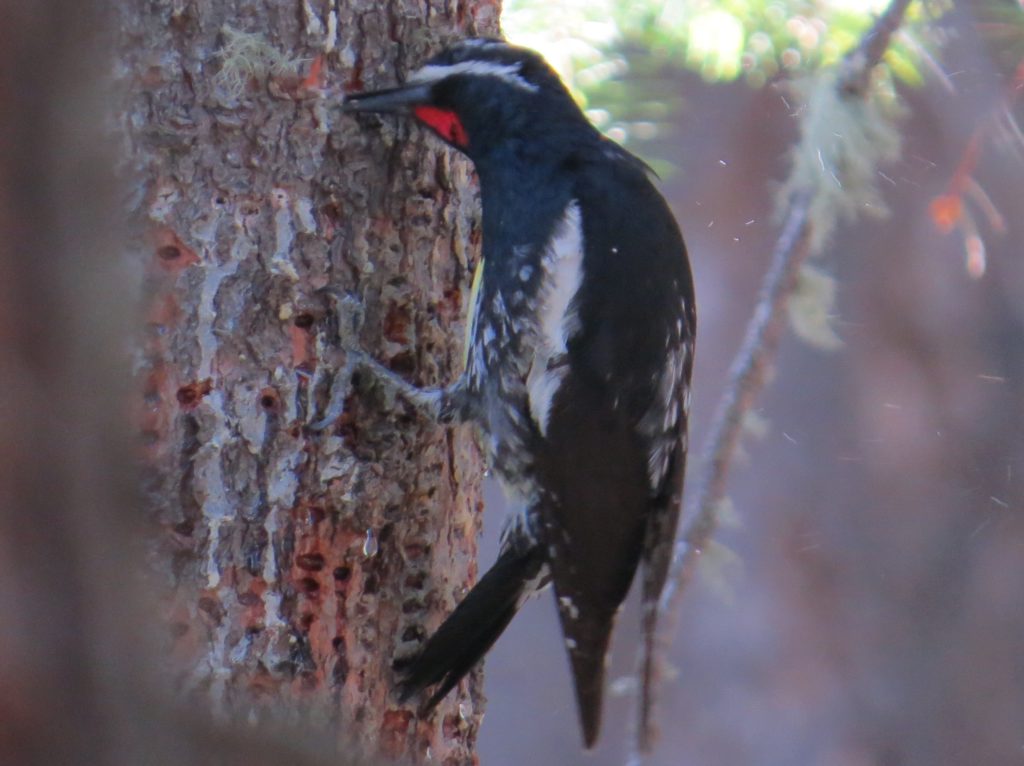
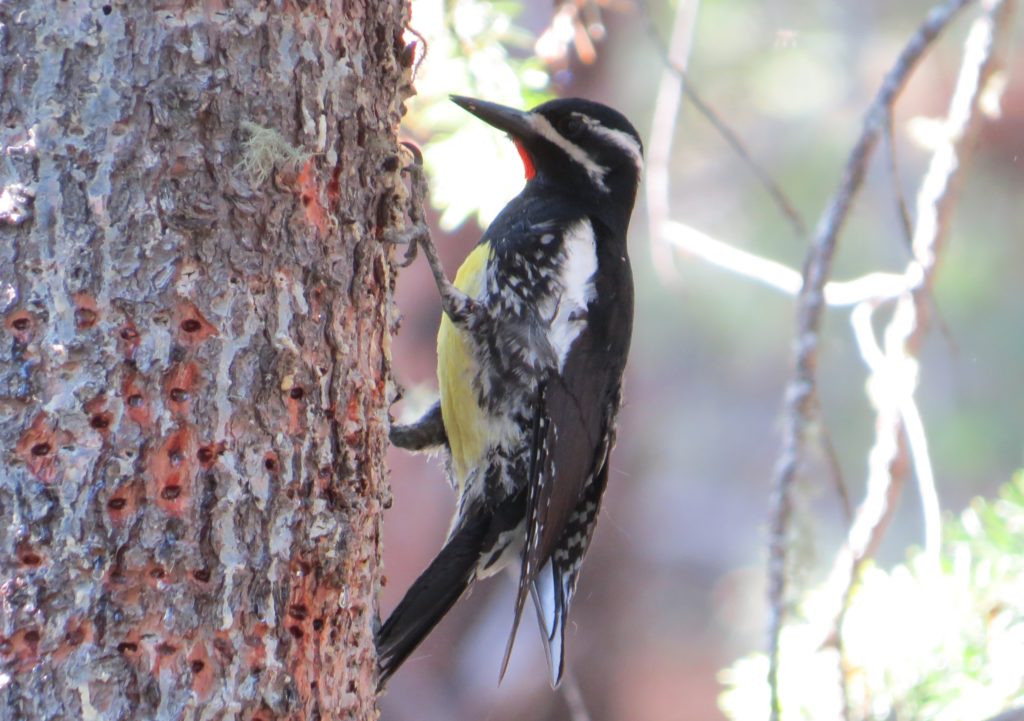 Once the Williamson’s was fully enjoyed, we turned our attention to the Red-faced Warbler. I was highly impatient to finally see this bird that we were hearing. And then it finally happened, and it was glorious.
Once the Williamson’s was fully enjoyed, we turned our attention to the Red-faced Warbler. I was highly impatient to finally see this bird that we were hearing. And then it finally happened, and it was glorious.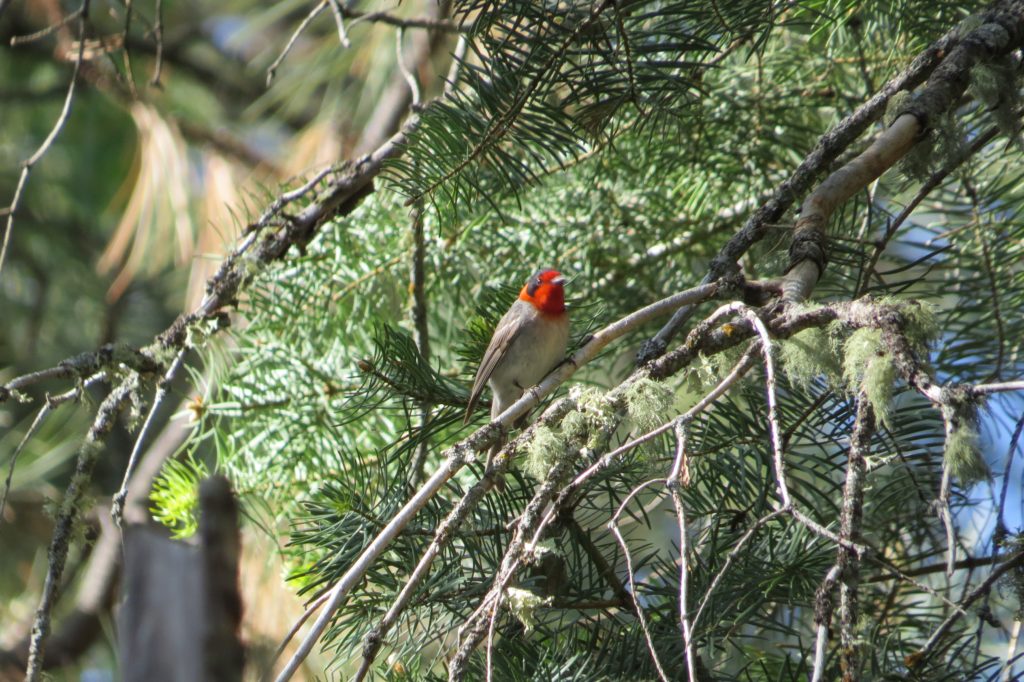 Adding to the pleasure of finally seeing this bird is that Red-faced Warblers are curious and therefore crushable.
Adding to the pleasure of finally seeing this bird is that Red-faced Warblers are curious and therefore crushable.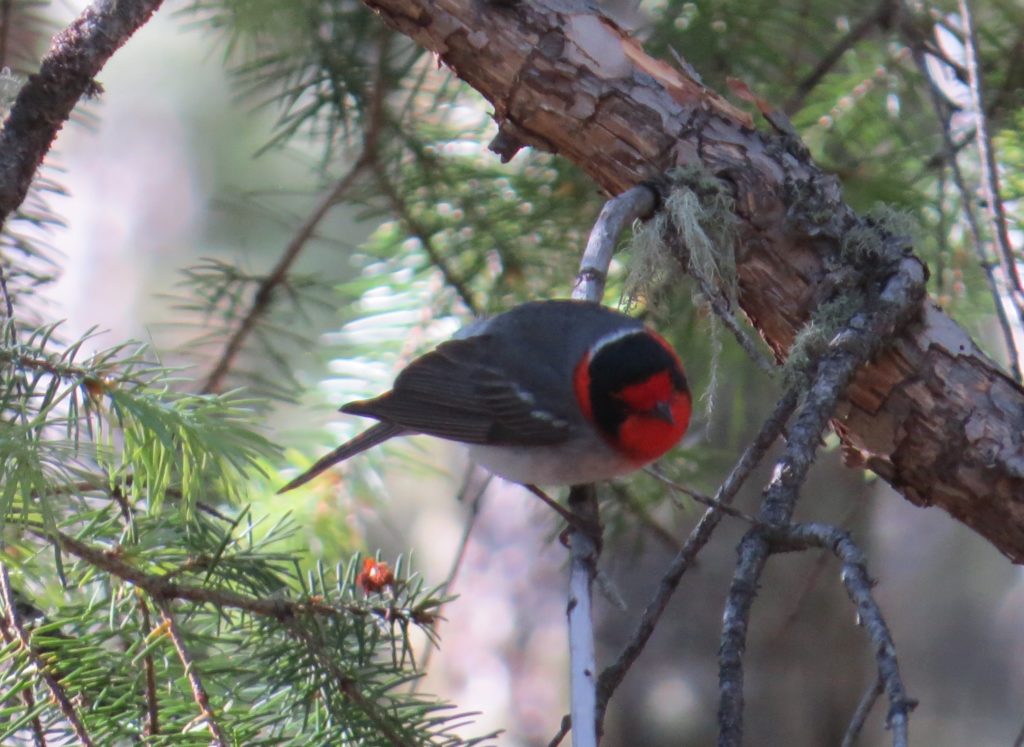
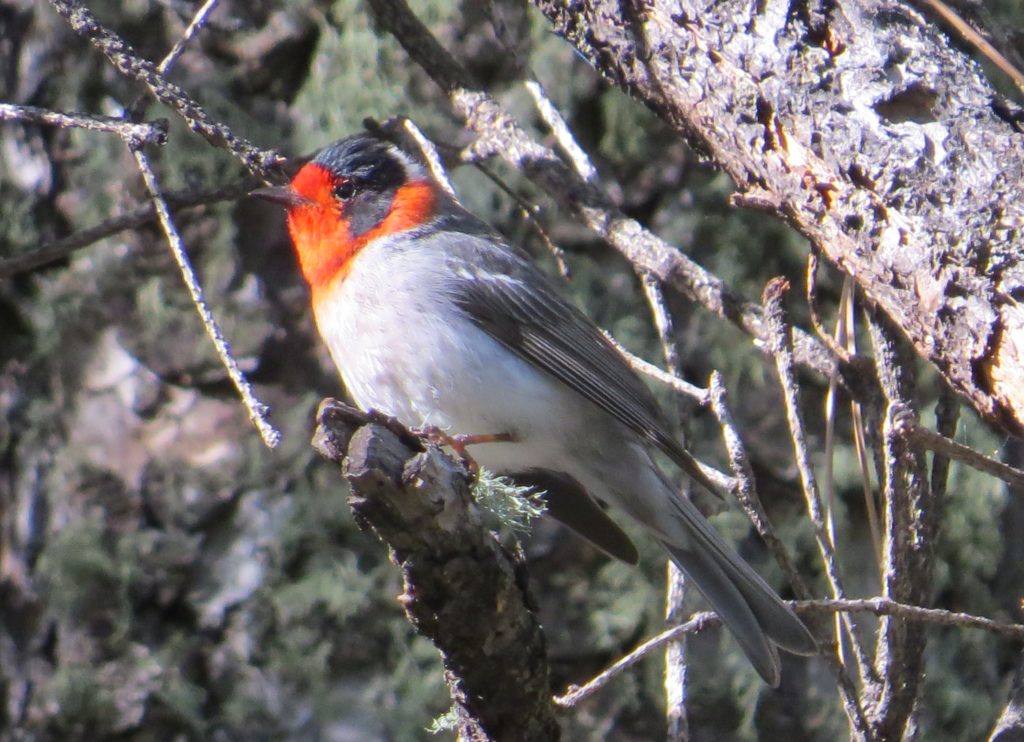
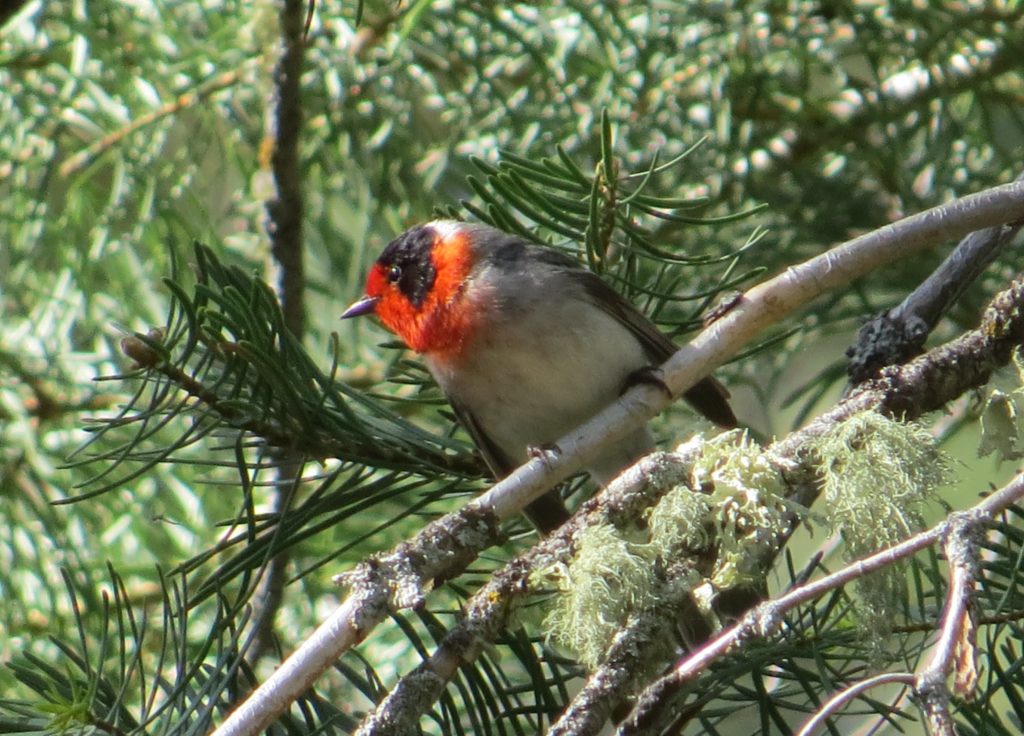 By the time we were done birding Schultz Pass Road, we had seen several of these Warblers. Each was just as exciting as the last. Even Tommy has to stop and look at each one, they are that captivating.
By the time we were done birding Schultz Pass Road, we had seen several of these Warblers. Each was just as exciting as the last. Even Tommy has to stop and look at each one, they are that captivating.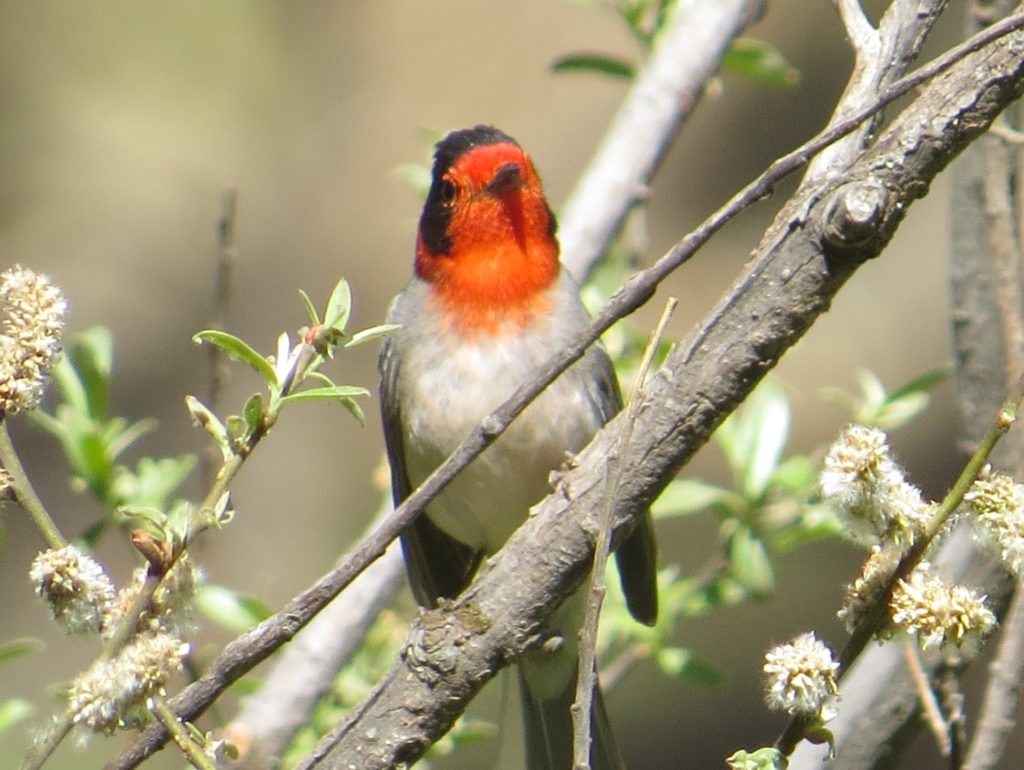 There were no more lifers on this morning of birding around Flagstaff. Tommy and I had found all my targets with relative ease, and there was really nothing left to go after. I’m kicking myself for not doing more research because MacGilivray’s Warblers breed in the area by Hart Prairie which is just northwest of Flagstaff. Oh well, something to add to my northern Arizona to-do list next time we come back to view the Grand Canyon (and the California Condors!)
There were no more lifers on this morning of birding around Flagstaff. Tommy and I had found all my targets with relative ease, and there was really nothing left to go after. I’m kicking myself for not doing more research because MacGilivray’s Warblers breed in the area by Hart Prairie which is just northwest of Flagstaff. Oh well, something to add to my northern Arizona to-do list next time we come back to view the Grand Canyon (and the California Condors!)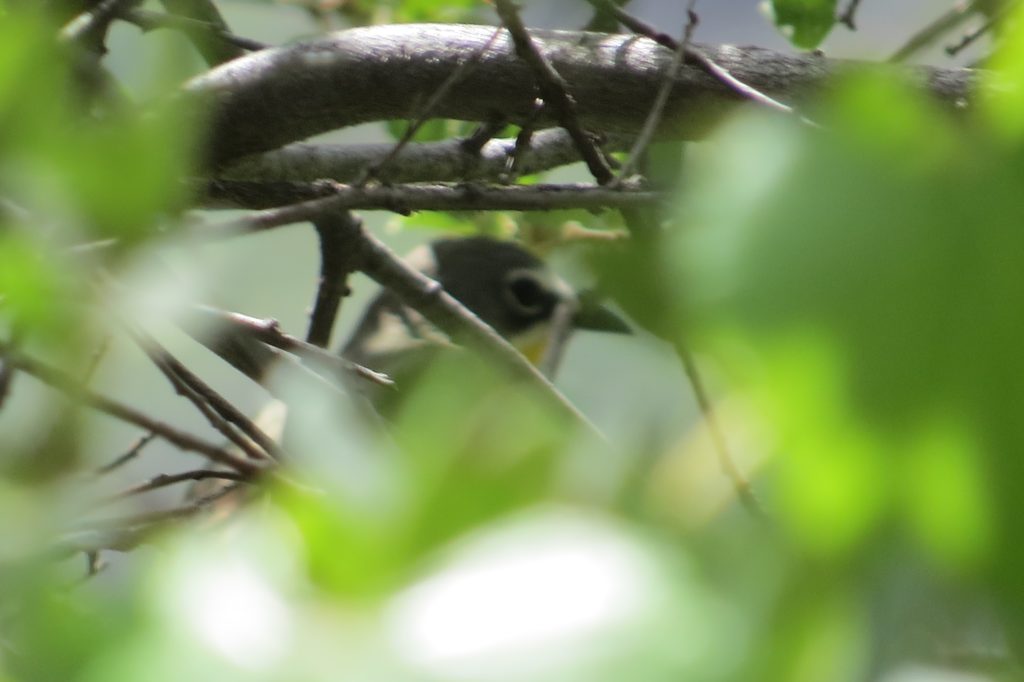 I’m not naive. I understand this is a typical experience with this bird species. It was still frustrating. At one point I could hear a Chat singing in the thicket right in front of me. I figured it had to be perched on top somewhere. So I climbed a rock, held the camera above my head, snapped a picture, and hoped for the best. Well, I got him. Can you see it?
I’m not naive. I understand this is a typical experience with this bird species. It was still frustrating. At one point I could hear a Chat singing in the thicket right in front of me. I figured it had to be perched on top somewhere. So I climbed a rock, held the camera above my head, snapped a picture, and hoped for the best. Well, I got him. Can you see it?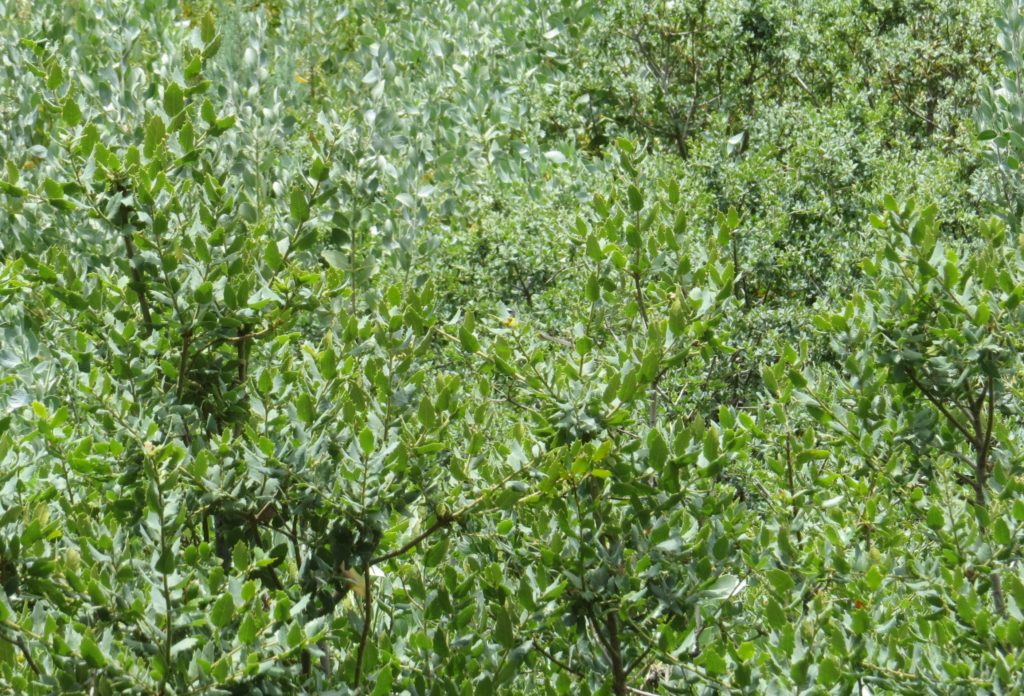 Here it is at a different perch. Same effect.
Here it is at a different perch. Same effect.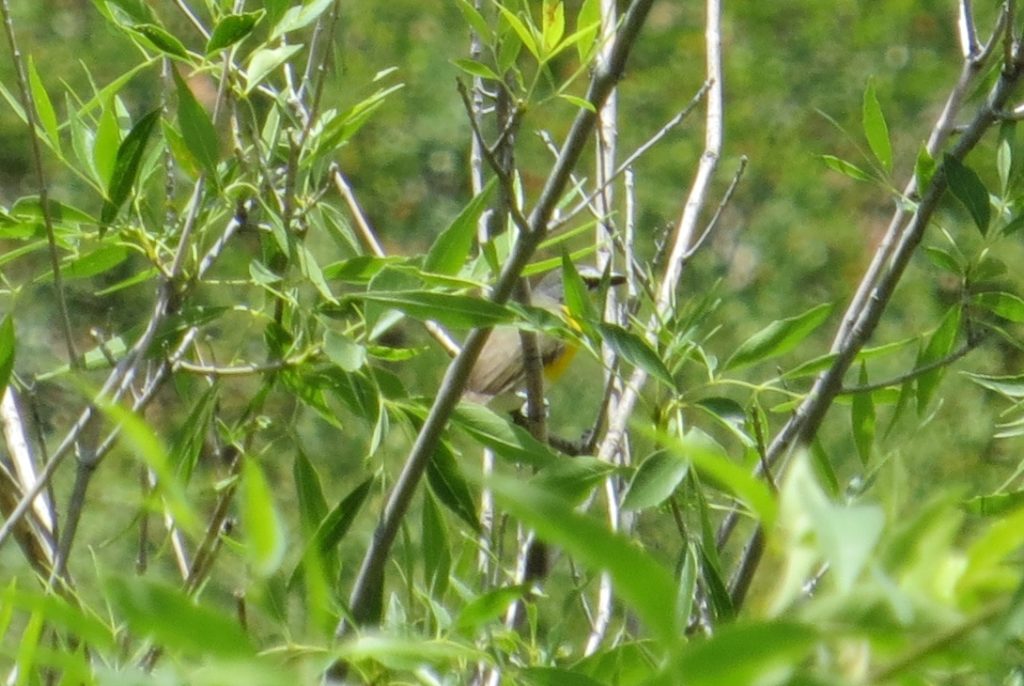 Yellow-breasted Chat is just one more bird to add to the list of ‘Better Looks Desired’ birds. At one point I saw a Chat fly into a tree in the distance, and I saw a fleck of yellow among the green leaves, so I just snapped photos of that yellow spot like crazy. Turns out I got a lot of photos of a yellow leaf instead. What an aggravating bird.
Yellow-breasted Chat is just one more bird to add to the list of ‘Better Looks Desired’ birds. At one point I saw a Chat fly into a tree in the distance, and I saw a fleck of yellow among the green leaves, so I just snapped photos of that yellow spot like crazy. Turns out I got a lot of photos of a yellow leaf instead. What an aggravating bird.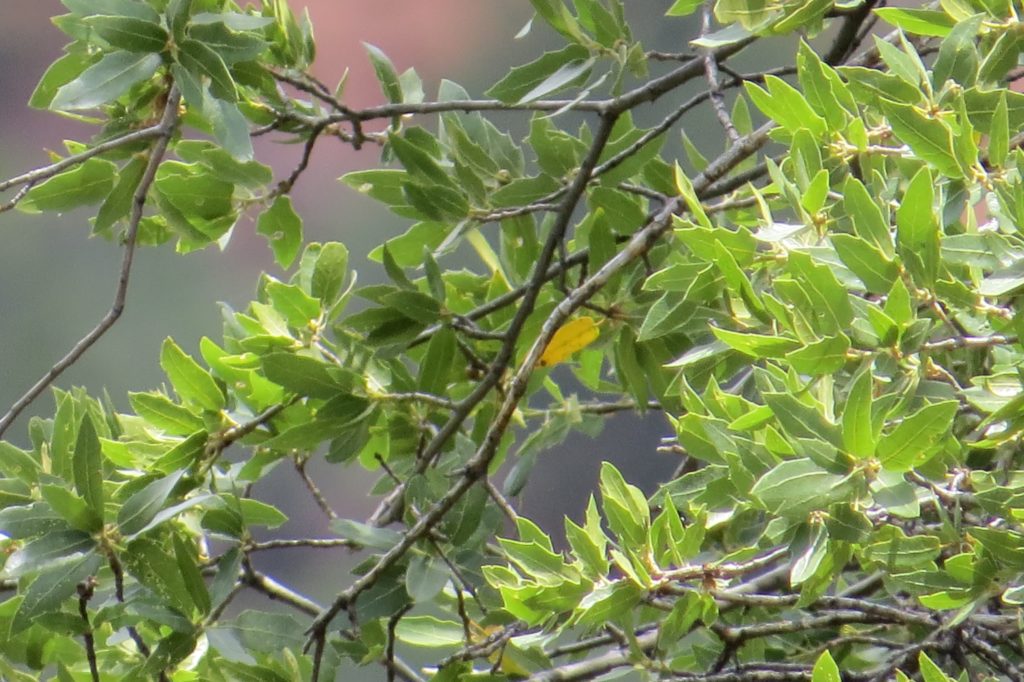 As we continued our drive to Sedona enjoying the views of the canyon walls from the bottom of Oak Creek Canyon, we decided to pull into the National Forest Service’s Grashopper Point recreation site. This was another fee area that we got into for free–thanks Evan. The draw of this site is that people like to cool off in Oak Creek here. More specifically, people cliff jump off a high rock face into a 15-foot wide creek below! Apparently this narrow creek is quite deep, allowing the people we saw jumping to come out unscathed. We did not attempt it. I was not completely sold on its safety.
As we continued our drive to Sedona enjoying the views of the canyon walls from the bottom of Oak Creek Canyon, we decided to pull into the National Forest Service’s Grashopper Point recreation site. This was another fee area that we got into for free–thanks Evan. The draw of this site is that people like to cool off in Oak Creek here. More specifically, people cliff jump off a high rock face into a 15-foot wide creek below! Apparently this narrow creek is quite deep, allowing the people we saw jumping to come out unscathed. We did not attempt it. I was not completely sold on its safety. The deep part of the water is quite narrow as you can see the wading area takes up almost half the creek width. This spot where Evan and Marin are wading is where teenagers were jumping into the water from 15-20 feet up the rock face! As I kept an eye on my kids, I also kept an eye out for a Common Black-Hawk in the riparian corridor. Unfortunately one never materialized. I was also keeping an eye and an ear out for a family of Brown-crested Flycatchers that had been reported here. I had actually given up on them too, but seconds before we got in the car to leave I spied a silent flycatcher on top of a snag a long ways away. I snapped some photos and was pleasantly surprised to see I had captured my lifer Brown-crested Flycatcher!
The deep part of the water is quite narrow as you can see the wading area takes up almost half the creek width. This spot where Evan and Marin are wading is where teenagers were jumping into the water from 15-20 feet up the rock face! As I kept an eye on my kids, I also kept an eye out for a Common Black-Hawk in the riparian corridor. Unfortunately one never materialized. I was also keeping an eye and an ear out for a family of Brown-crested Flycatchers that had been reported here. I had actually given up on them too, but seconds before we got in the car to leave I spied a silent flycatcher on top of a snag a long ways away. I snapped some photos and was pleasantly surprised to see I had captured my lifer Brown-crested Flycatcher!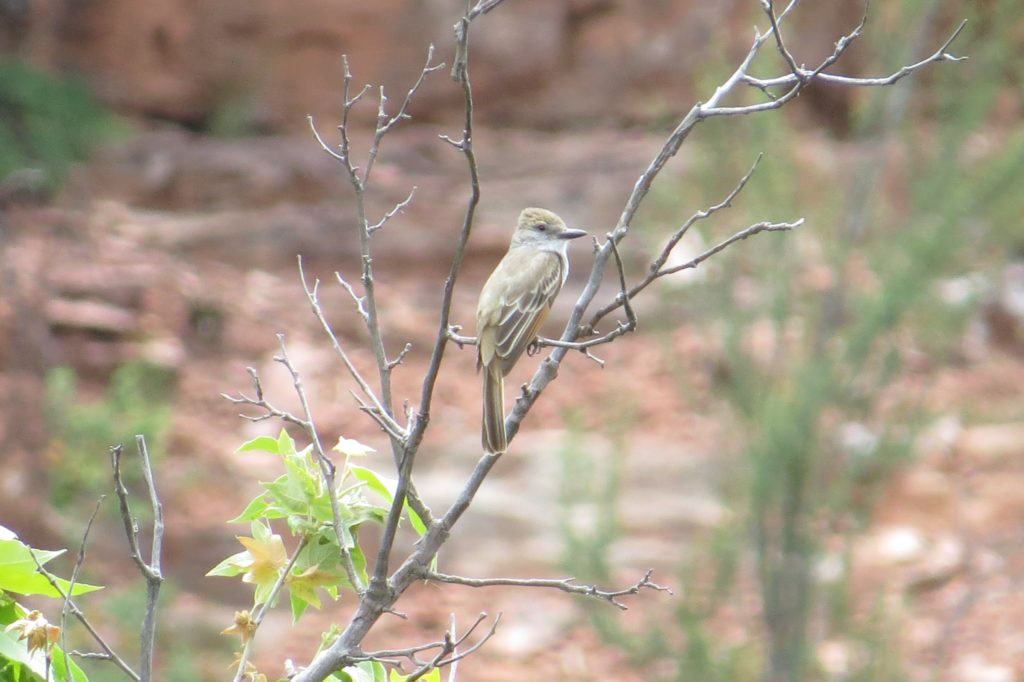 The Brown-crested Flycatcher is distinguished from the similar-looking Ash-throated Flycatcher which inhabits the same area by its larger bill, completely rufous tail underneath, and a brighter yellow belly. Thankfully, this Flycatcher turned around to make sure I could see all the appropriate field marks.
The Brown-crested Flycatcher is distinguished from the similar-looking Ash-throated Flycatcher which inhabits the same area by its larger bill, completely rufous tail underneath, and a brighter yellow belly. Thankfully, this Flycatcher turned around to make sure I could see all the appropriate field marks.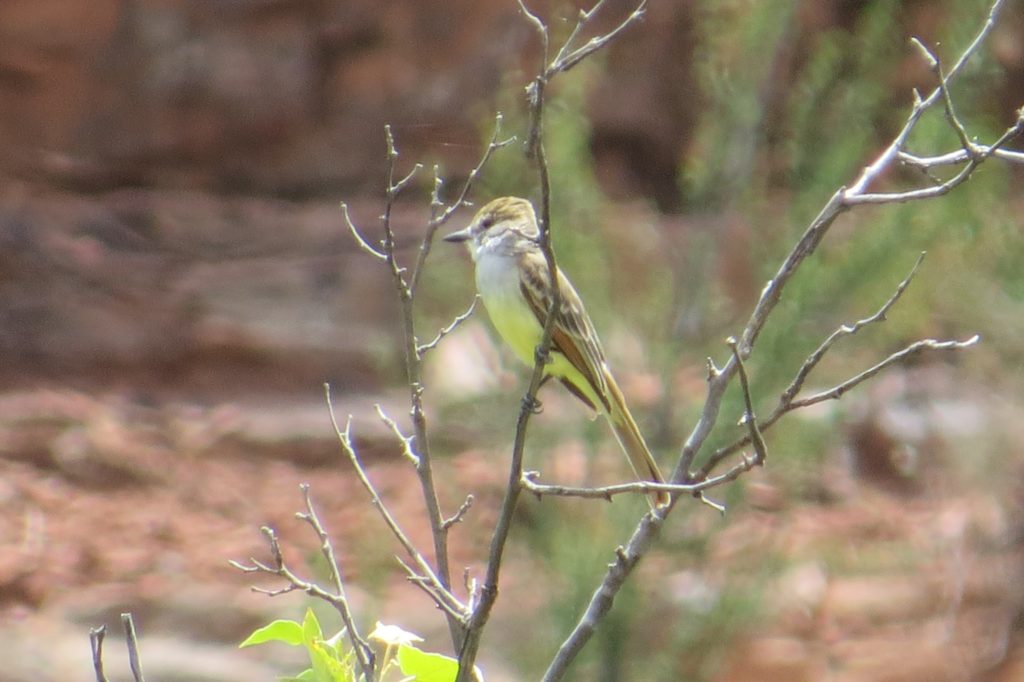 The lifering on this fifth trip to AZ was definitely a quality over quantity sort of thing. And unless I make a summer trip to SE AZ, the lifering will be significantly limited on subsequent trips to visit my parents in central AZ in the winter months. Regardless of lifers being available, good birds can ALWAYS be had in Arizona. In the next post, I’ll highlight my favorite non-lifers from this most recent trip.
The lifering on this fifth trip to AZ was definitely a quality over quantity sort of thing. And unless I make a summer trip to SE AZ, the lifering will be significantly limited on subsequent trips to visit my parents in central AZ in the winter months. Regardless of lifers being available, good birds can ALWAYS be had in Arizona. In the next post, I’ll highlight my favorite non-lifers from this most recent trip.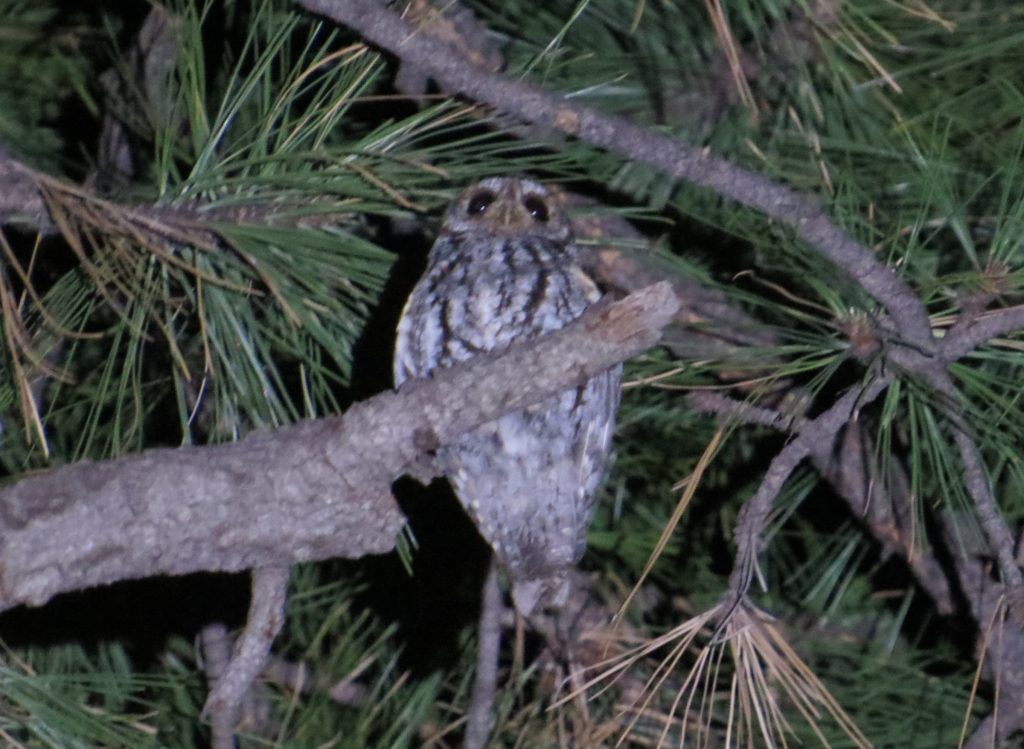
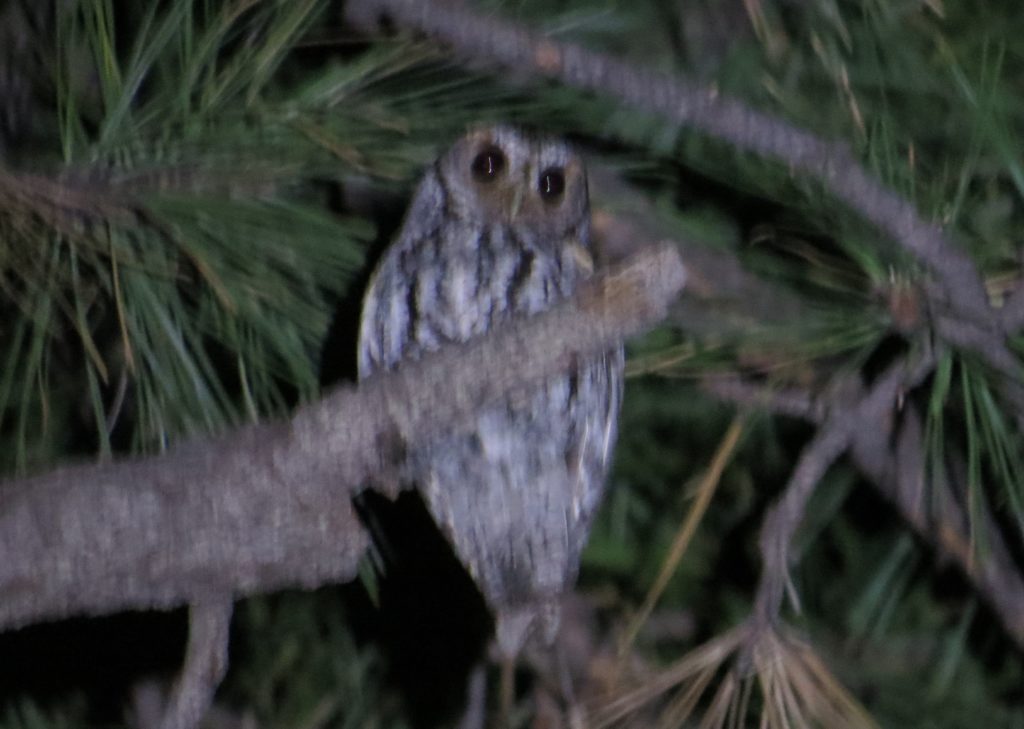
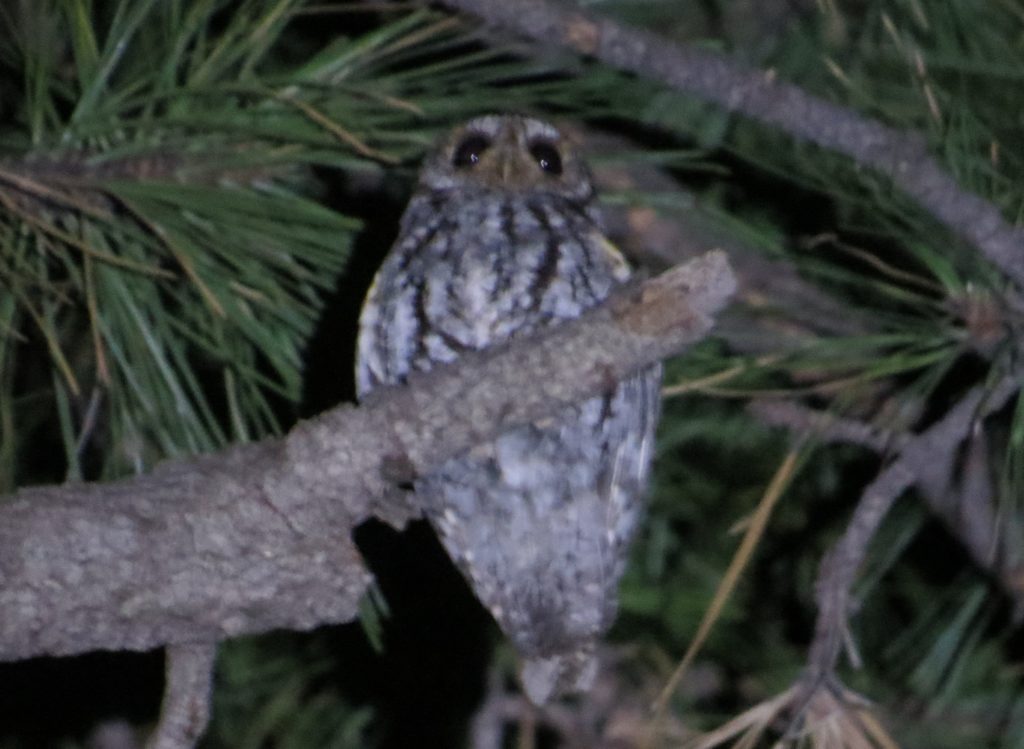
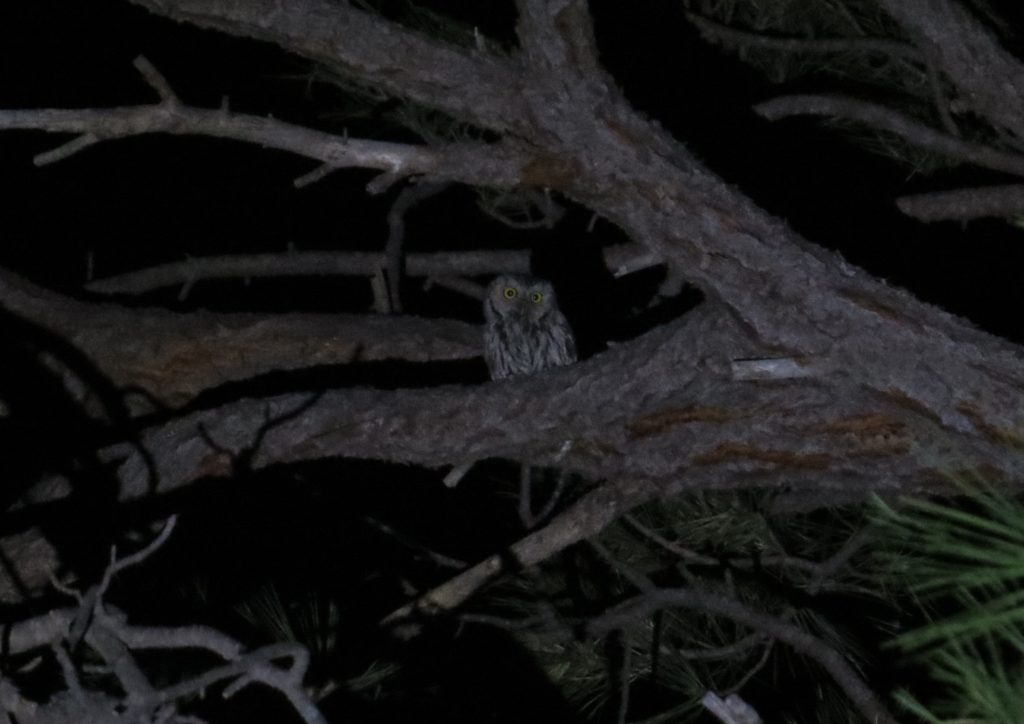
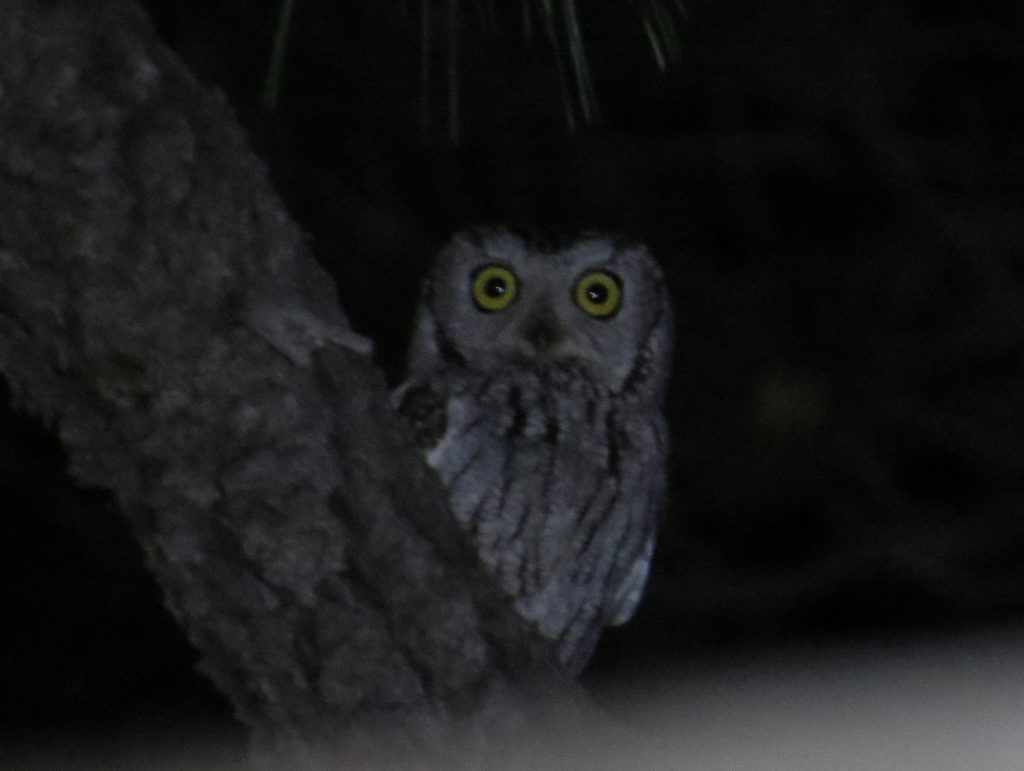 After the Screech-Owl fun, we kept up our search for Flams with no further sightings. A pair of dueting Great Horned Owls did give us a three-Owl night, however. With Flammulated Owl locked down and photo-documented as my 17th Owl lifer, the trip was a huge success. A fun coincidence is that the Flam was Tommy’s 17th Owl species for TOBY. I can’t thank Tommy enough for all the Owl species he has shown me (7 in all!). The next day we celebrated in a most appropriate way–eating at the Toasted Owl Cafe right by our resort in Flagstaff. It’s very good, by the way.
After the Screech-Owl fun, we kept up our search for Flams with no further sightings. A pair of dueting Great Horned Owls did give us a three-Owl night, however. With Flammulated Owl locked down and photo-documented as my 17th Owl lifer, the trip was a huge success. A fun coincidence is that the Flam was Tommy’s 17th Owl species for TOBY. I can’t thank Tommy enough for all the Owl species he has shown me (7 in all!). The next day we celebrated in a most appropriate way–eating at the Toasted Owl Cafe right by our resort in Flagstaff. It’s very good, by the way.
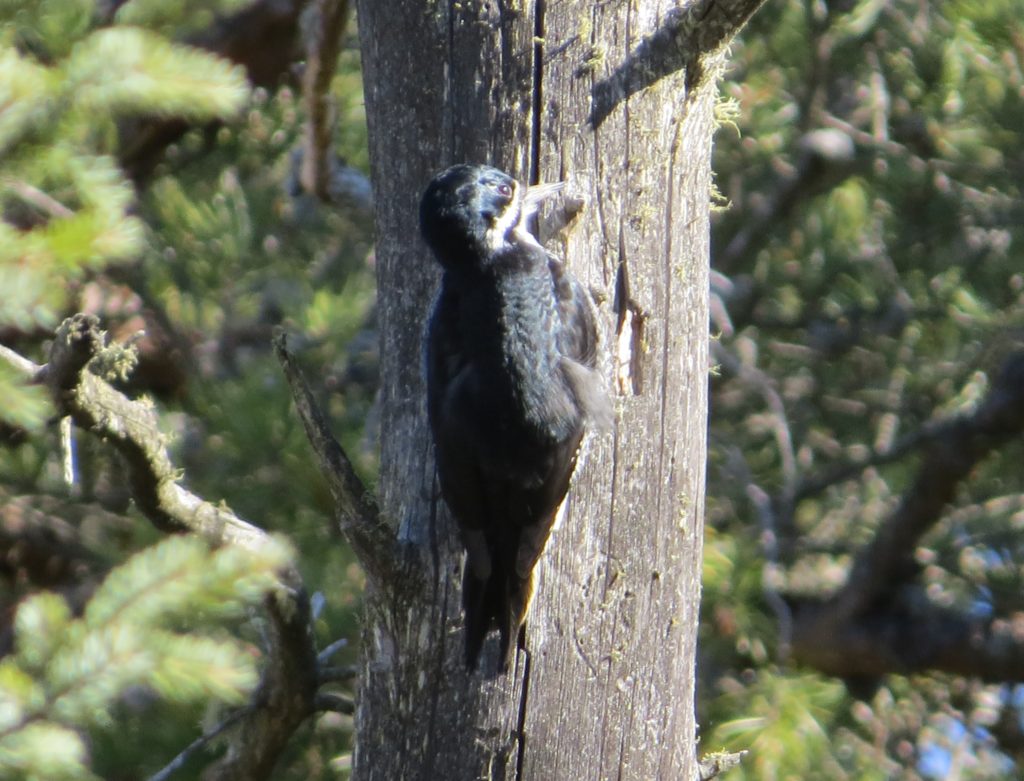 We carried on with our walk that had us traversing the same stretch of road several times. Then we heard drumming quite a ways from the Black-backed and knew it was a different bird. We repeated the drill of tracking down the source. Only this time it was different. John was the first one to get eyes on it and announced it was the American Three-toed Woodpecker and the male at that!
We carried on with our walk that had us traversing the same stretch of road several times. Then we heard drumming quite a ways from the Black-backed and knew it was a different bird. We repeated the drill of tracking down the source. Only this time it was different. John was the first one to get eyes on it and announced it was the American Three-toed Woodpecker and the male at that!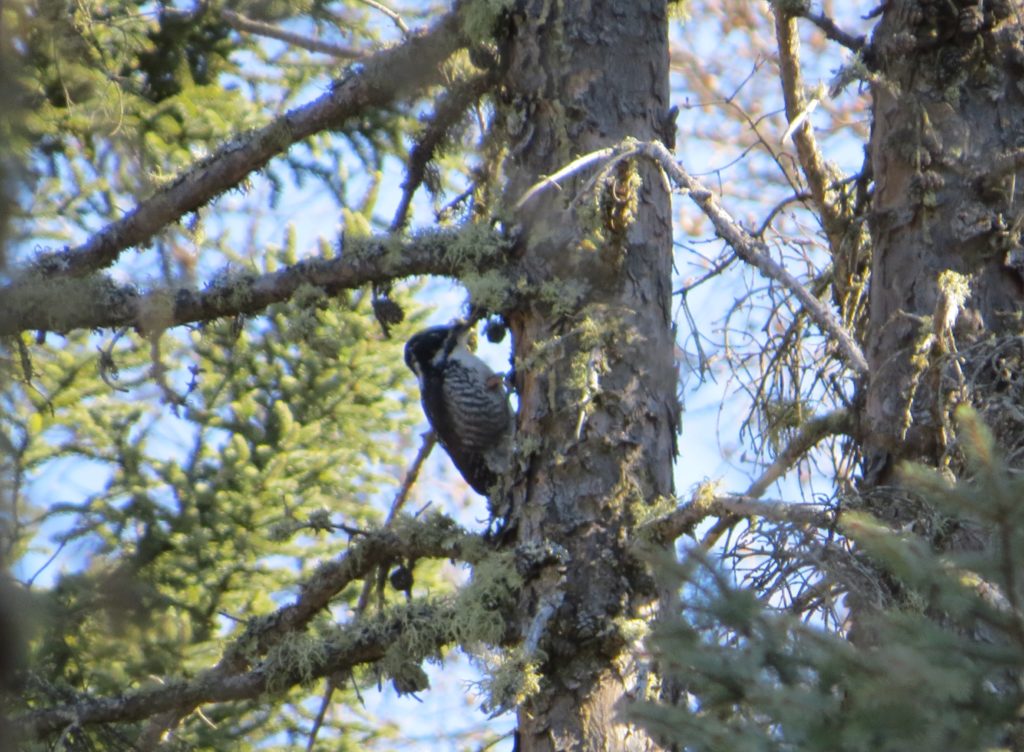 It was a huge lifer for me–there are only a handful of regular birds in Minnesota I can still add to my life list, and the icing on the cake was that this was a hometown bird. It really doesn’t get better than that, and I spent a lot of time soaking up the experience and taking lots of photos.
It was a huge lifer for me–there are only a handful of regular birds in Minnesota I can still add to my life list, and the icing on the cake was that this was a hometown bird. It really doesn’t get better than that, and I spent a lot of time soaking up the experience and taking lots of photos.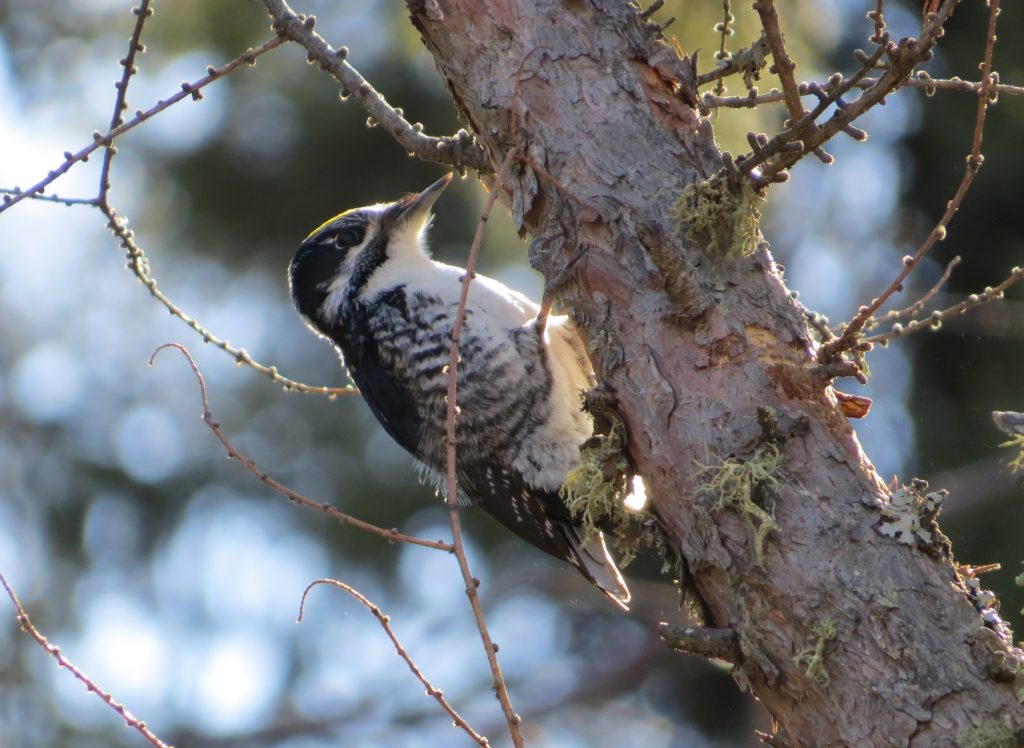
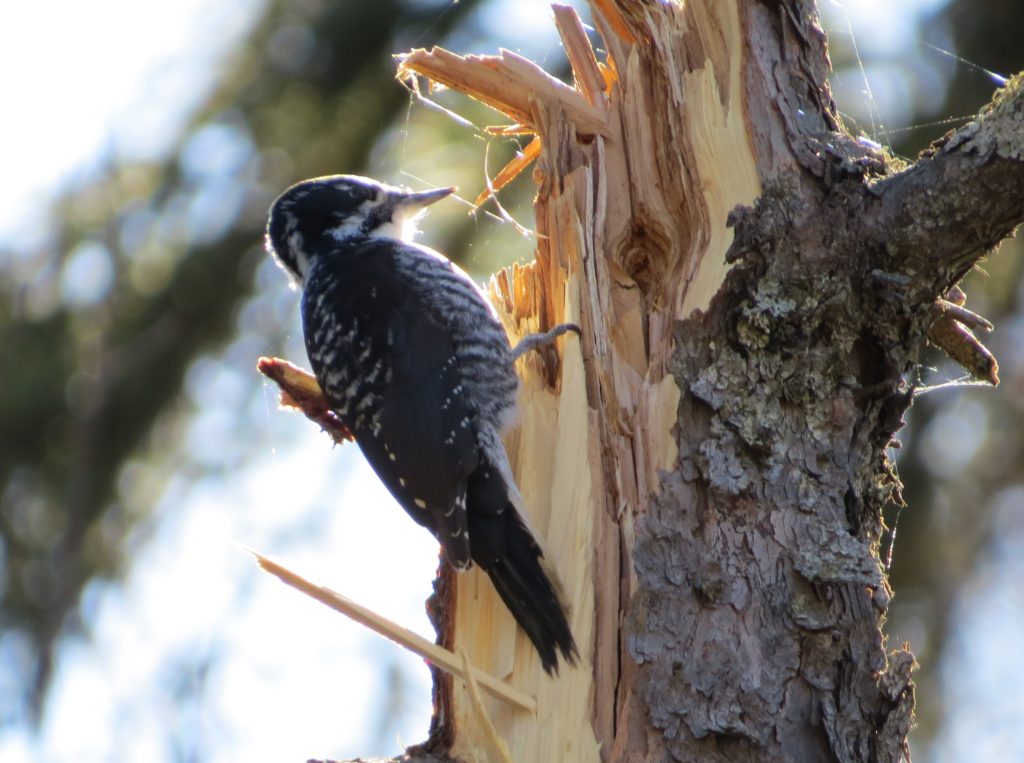 At one point this Woodpecker flew down and worked the bark along a downed tree. This bird was oblivious to my presence and let me approach within 5 feet as it frantically flaked bark to look for insects.
At one point this Woodpecker flew down and worked the bark along a downed tree. This bird was oblivious to my presence and let me approach within 5 feet as it frantically flaked bark to look for insects.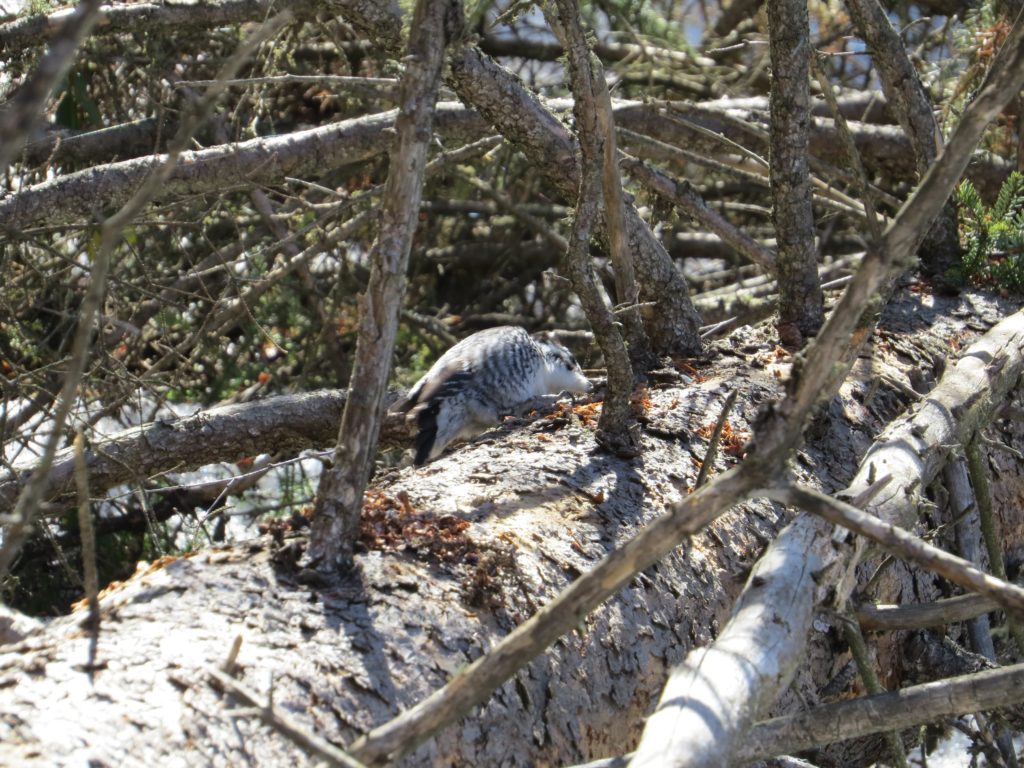
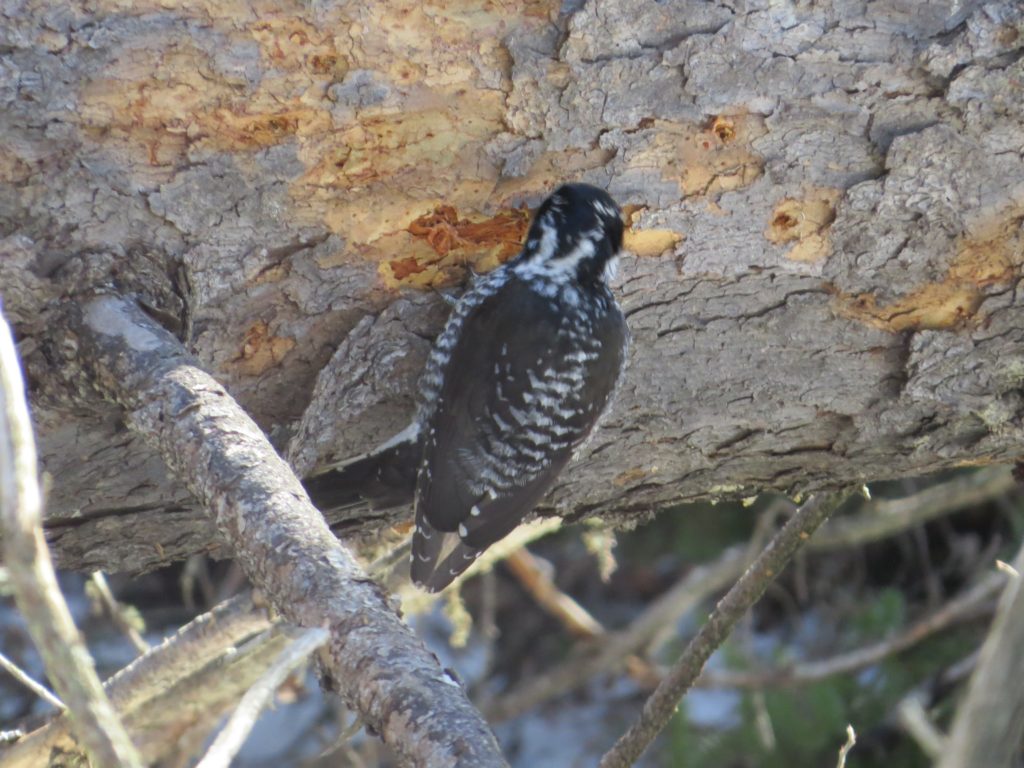
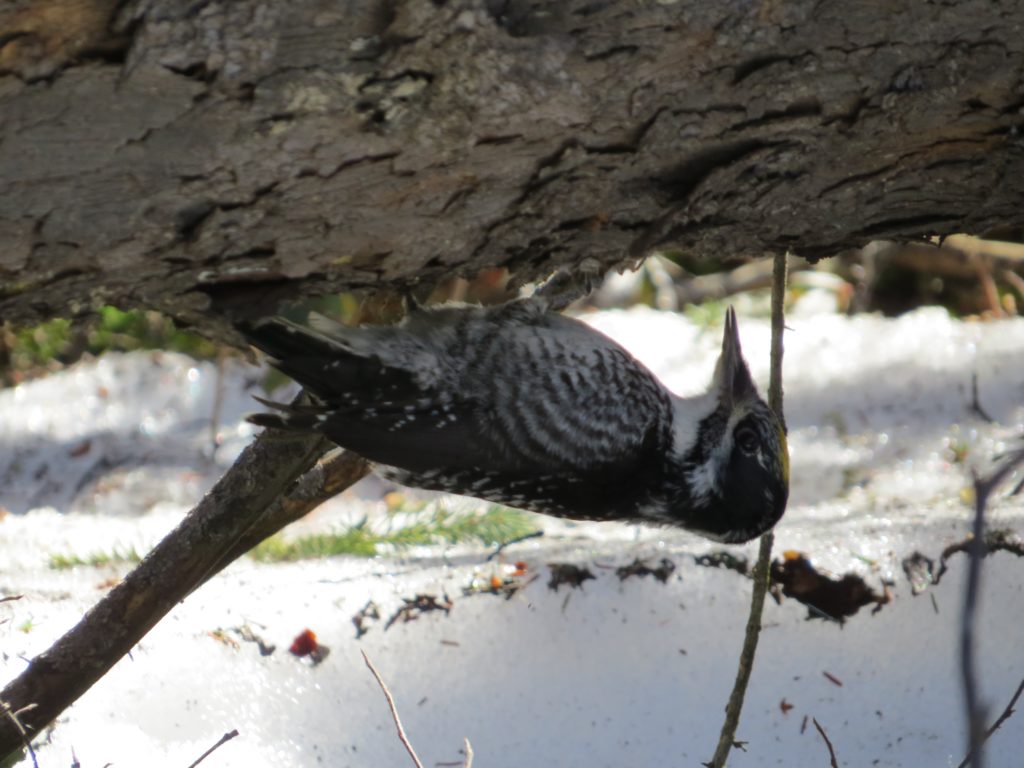
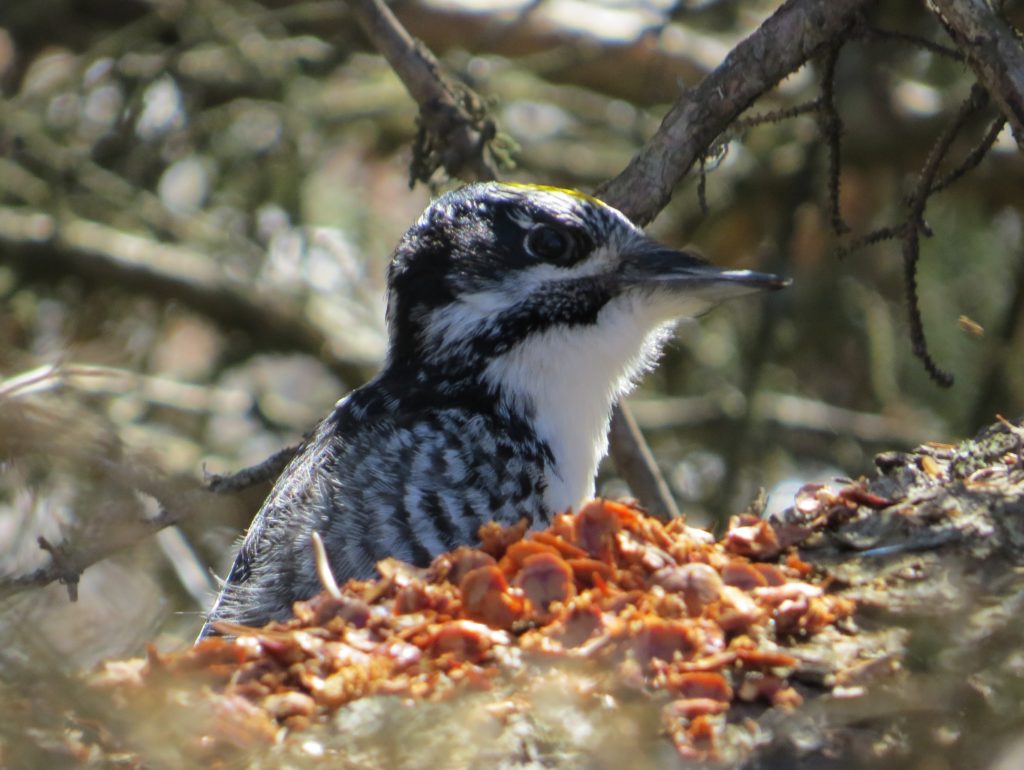 It was a beautiful day to be birding back home and enjoying a long-awaited lifer. John had gotten his fill long ago and left. Julie was quite patient as I spent an inordinate amount of time photographing this incredibly accommodating bird.
It was a beautiful day to be birding back home and enjoying a long-awaited lifer. John had gotten his fill long ago and left. Julie was quite patient as I spent an inordinate amount of time photographing this incredibly accommodating bird.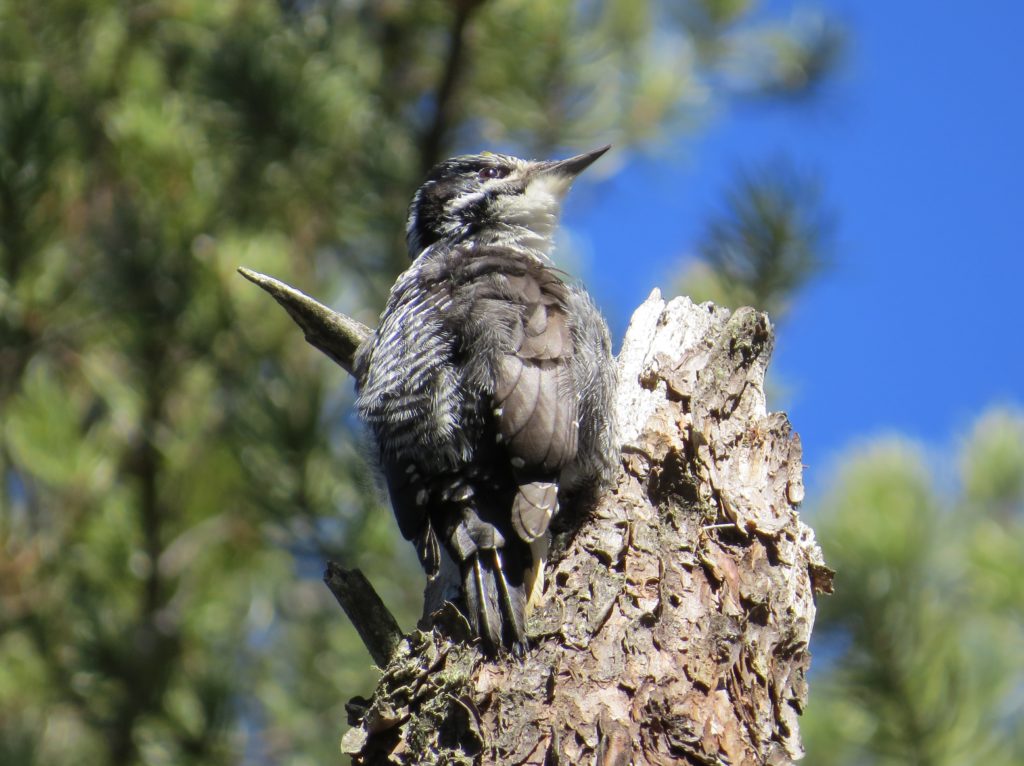 I did, finally, pry myself away and Julie and I wrapped up our birding for the day. However, I found myself back on this road the next morning because the allure of these Woodpeckers and the Spruce Grouse was just too strong. That second morning I decided to drive the stretch of road first with the windows down. Unlike the day before, the action started almost immediately. I heard the unmistakable rattle call of TWO Black-backed Woodpeckers that seemed to be chasing each other around in some sort of courtship dance. I got lucky enough to catch them on the same tree together.
I did, finally, pry myself away and Julie and I wrapped up our birding for the day. However, I found myself back on this road the next morning because the allure of these Woodpeckers and the Spruce Grouse was just too strong. That second morning I decided to drive the stretch of road first with the windows down. Unlike the day before, the action started almost immediately. I heard the unmistakable rattle call of TWO Black-backed Woodpeckers that seemed to be chasing each other around in some sort of courtship dance. I got lucky enough to catch them on the same tree together.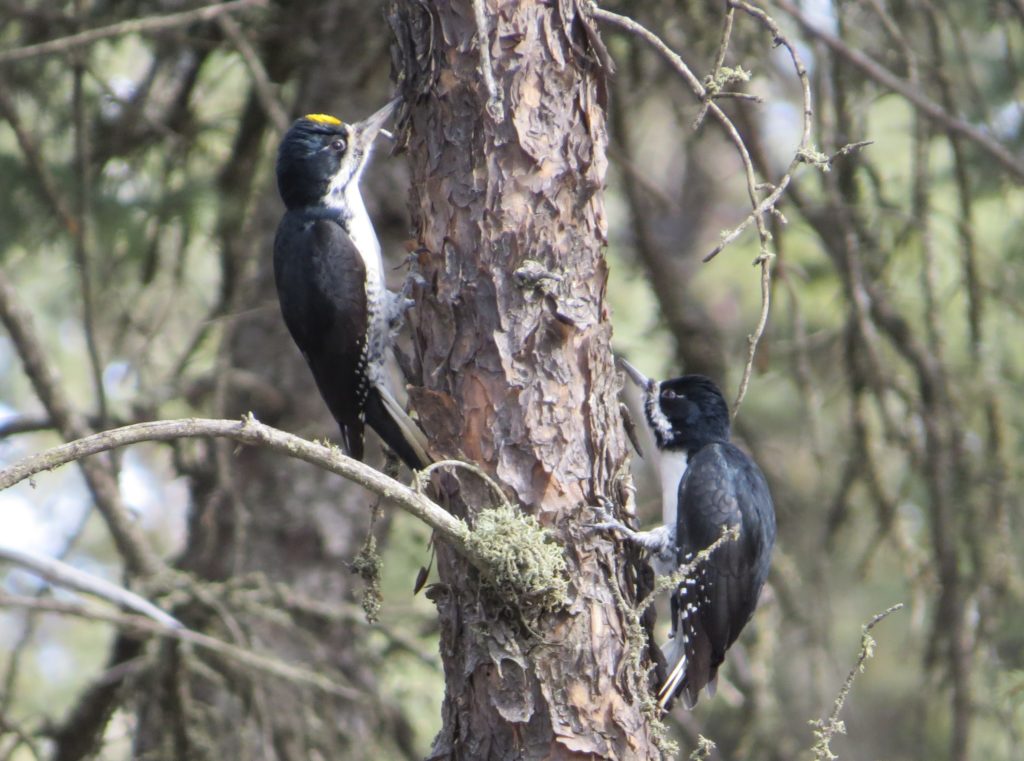 Then all craziness broke loose (as if it hadn’t already). There were now four Woodpeckers chasing each other around. As I tried to make sense of it all, another unexpected sighting happened–Sparky Stensaas came bursting out of the woods with a large camera and tripod in hot pursuit of this action. All of this action was just nuts. I started photographing two Woodpeckers on a dead snag and realized I had the male Black-backed and male Three-toed together on the same tree!
Then all craziness broke loose (as if it hadn’t already). There were now four Woodpeckers chasing each other around. As I tried to make sense of it all, another unexpected sighting happened–Sparky Stensaas came bursting out of the woods with a large camera and tripod in hot pursuit of this action. All of this action was just nuts. I started photographing two Woodpeckers on a dead snag and realized I had the male Black-backed and male Three-toed together on the same tree!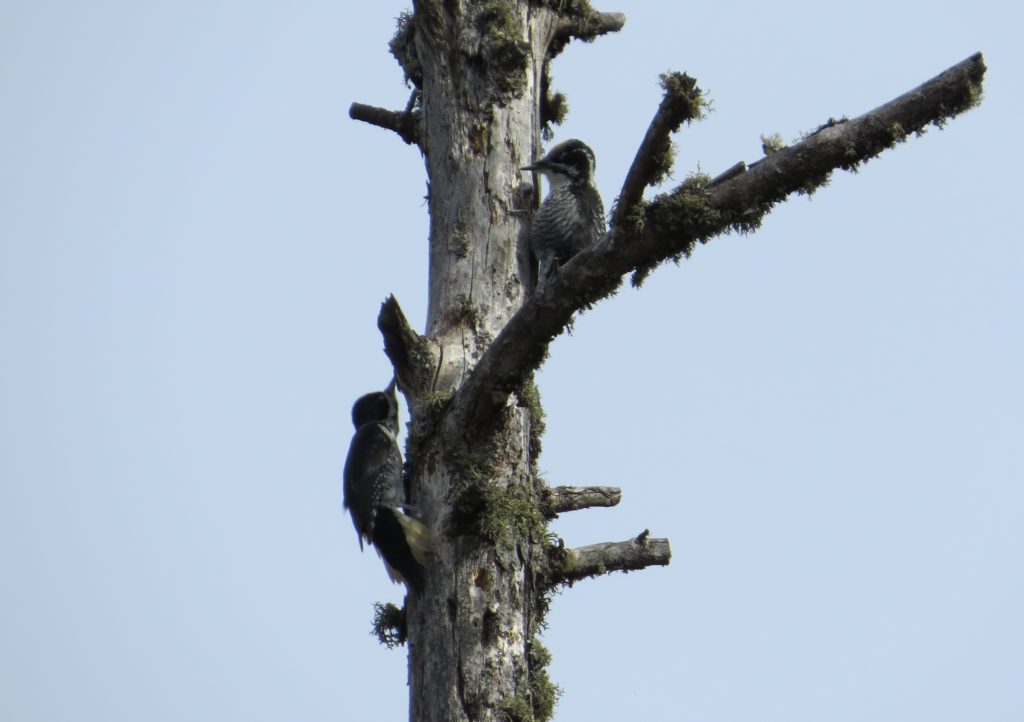
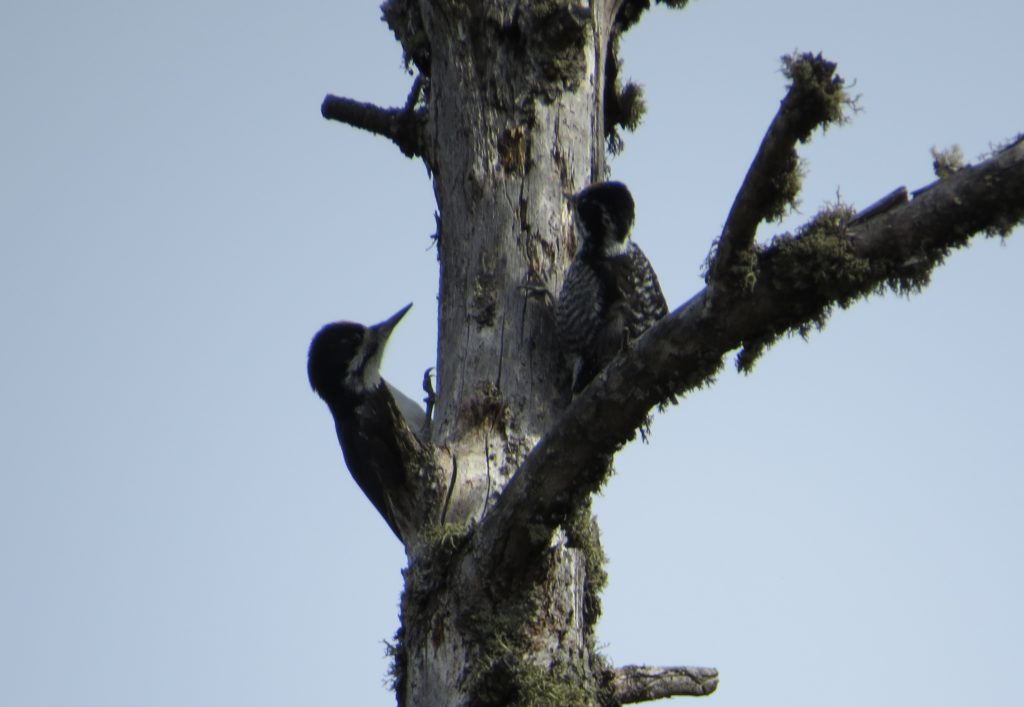 And in the end, one Woodpecker clearly won out.
And in the end, one Woodpecker clearly won out.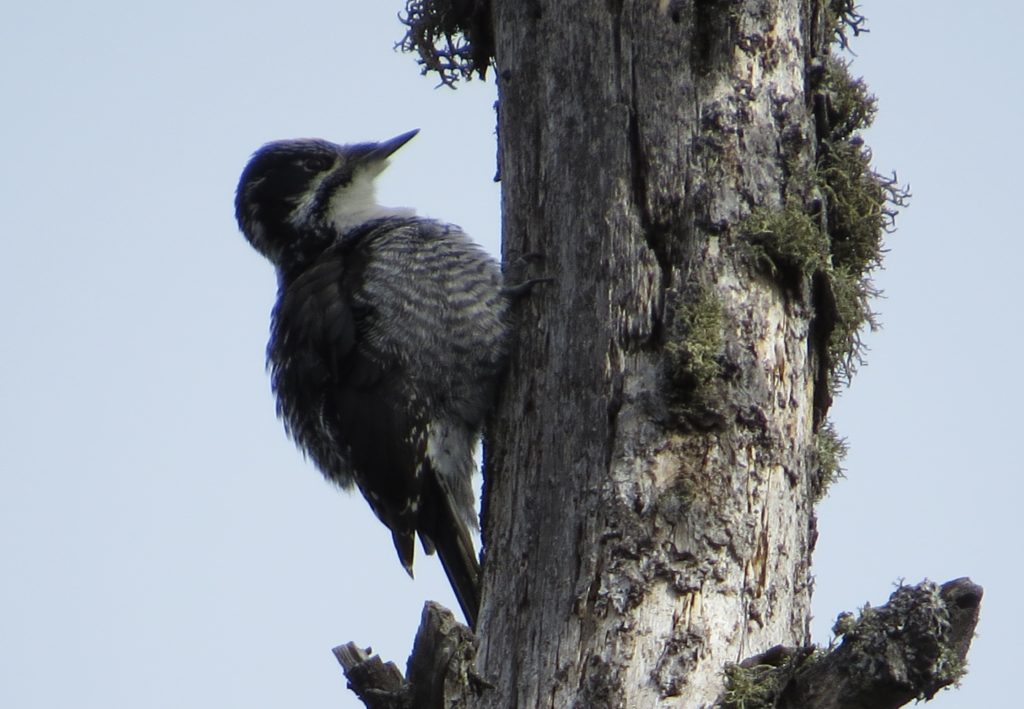 Eventually, the Woodpeckers (and Sparky) dispersed into the woods and the excitement was over. Later on, Julie Grahn and Dee Kuder showed up, and along with Sparky we all enjoyed the Spruce Grouse show that was highlighted in the last post. A huge thank you goes out to Julie Grahn for finding and reporting these birds and assisting me in finding them. It was an incredible experience–I couldn’t have asked for a better way to get this lifer.
Eventually, the Woodpeckers (and Sparky) dispersed into the woods and the excitement was over. Later on, Julie Grahn and Dee Kuder showed up, and along with Sparky we all enjoyed the Spruce Grouse show that was highlighted in the last post. A huge thank you goes out to Julie Grahn for finding and reporting these birds and assisting me in finding them. It was an incredible experience–I couldn’t have asked for a better way to get this lifer.
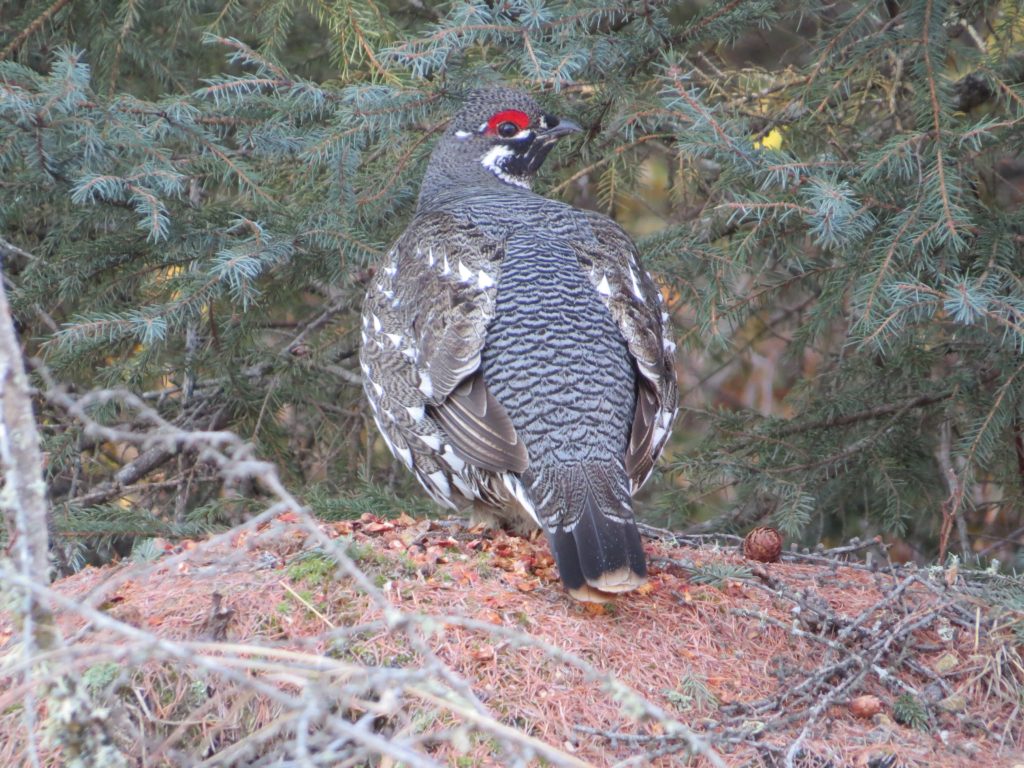
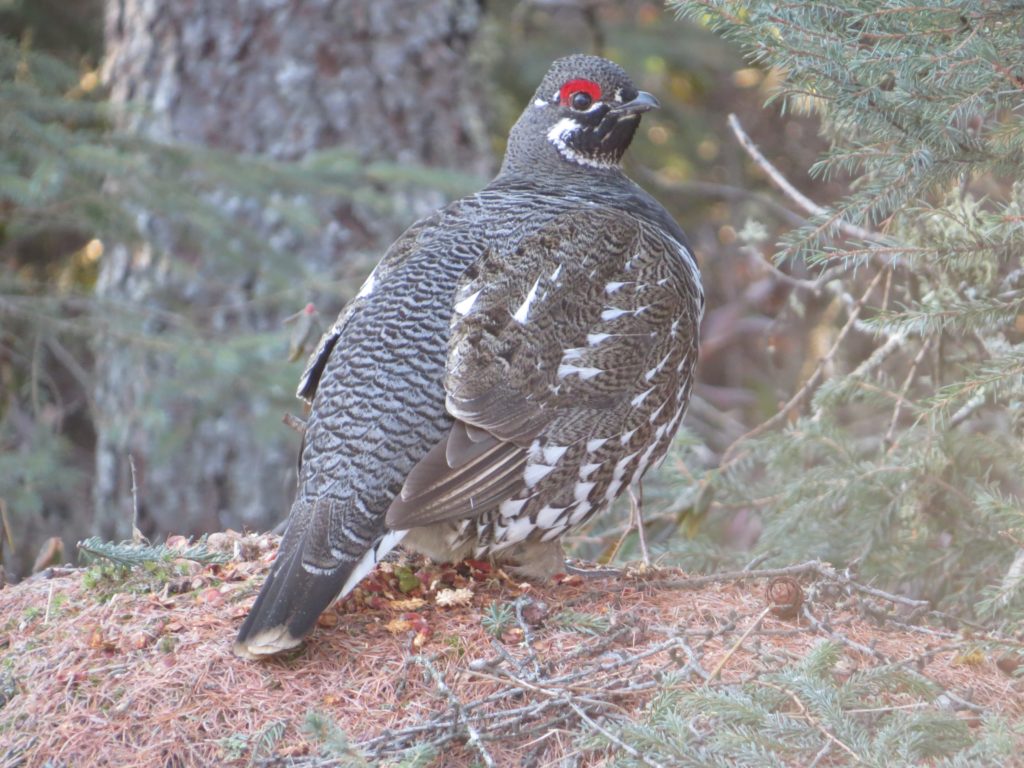
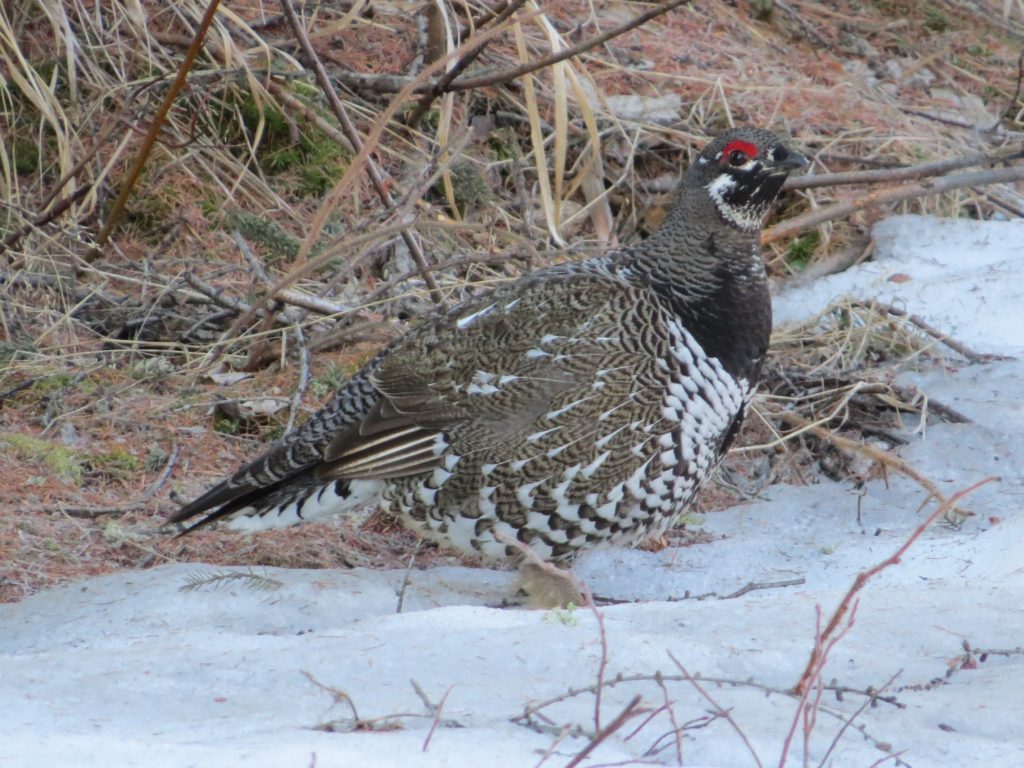 This male Spruce Grouse was the first bird my local birding friend Julie Grahn spied while we hunted for the life bird that Julie had found weeks earlier on this same road. I was thankful that this Grouse finally flew off so we could get back to the more important search at hand. But doggone it, an hour later I looked behind me and saw that another male had come out to the road.
This male Spruce Grouse was the first bird my local birding friend Julie Grahn spied while we hunted for the life bird that Julie had found weeks earlier on this same road. I was thankful that this Grouse finally flew off so we could get back to the more important search at hand. But doggone it, an hour later I looked behind me and saw that another male had come out to the road.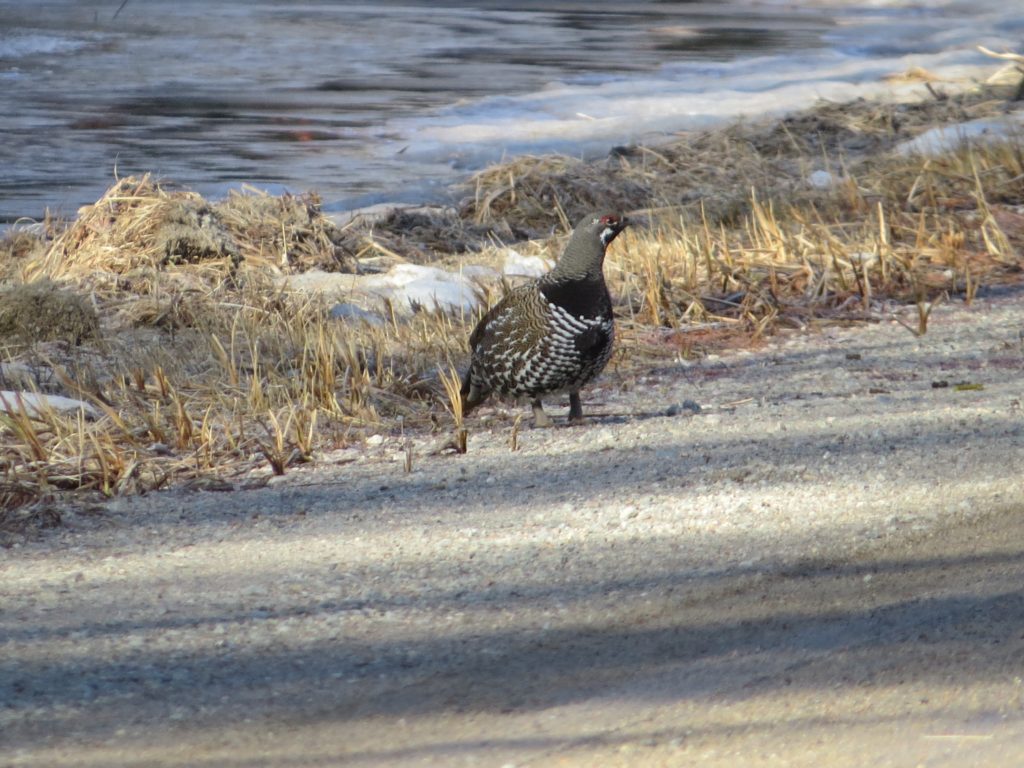 I had actually been looking behind me to see if another friend, John Richardson, was coming. This was good timing because John was hoping to see this bird too.
I had actually been looking behind me to see if another friend, John Richardson, was coming. This was good timing because John was hoping to see this bird too.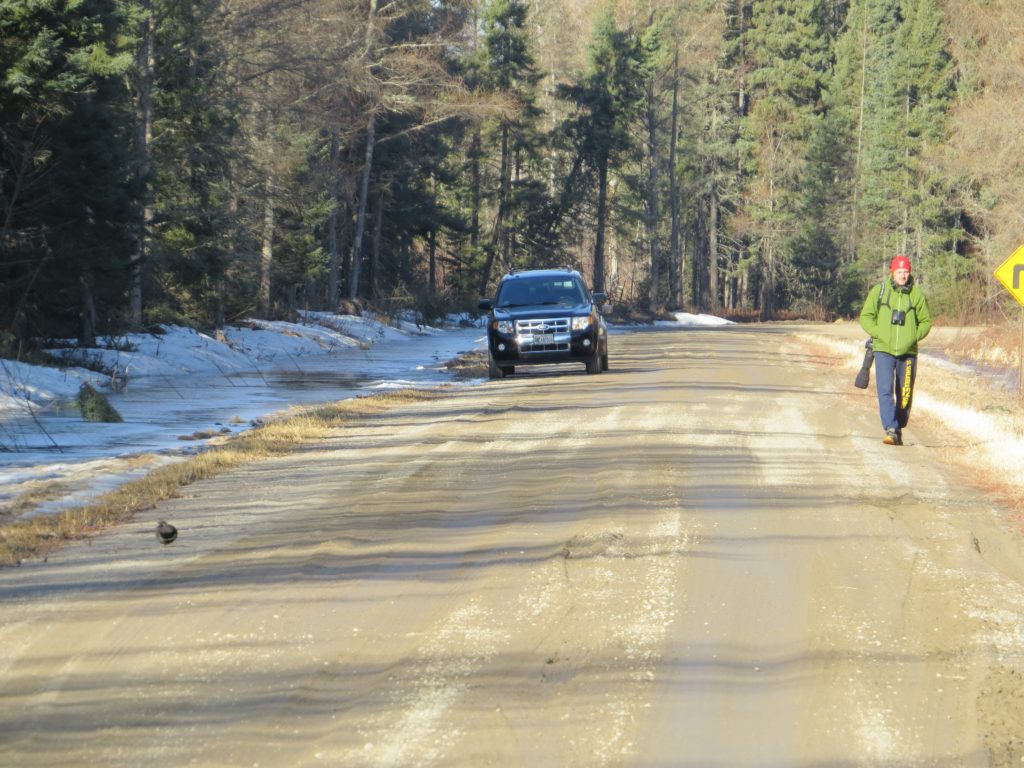
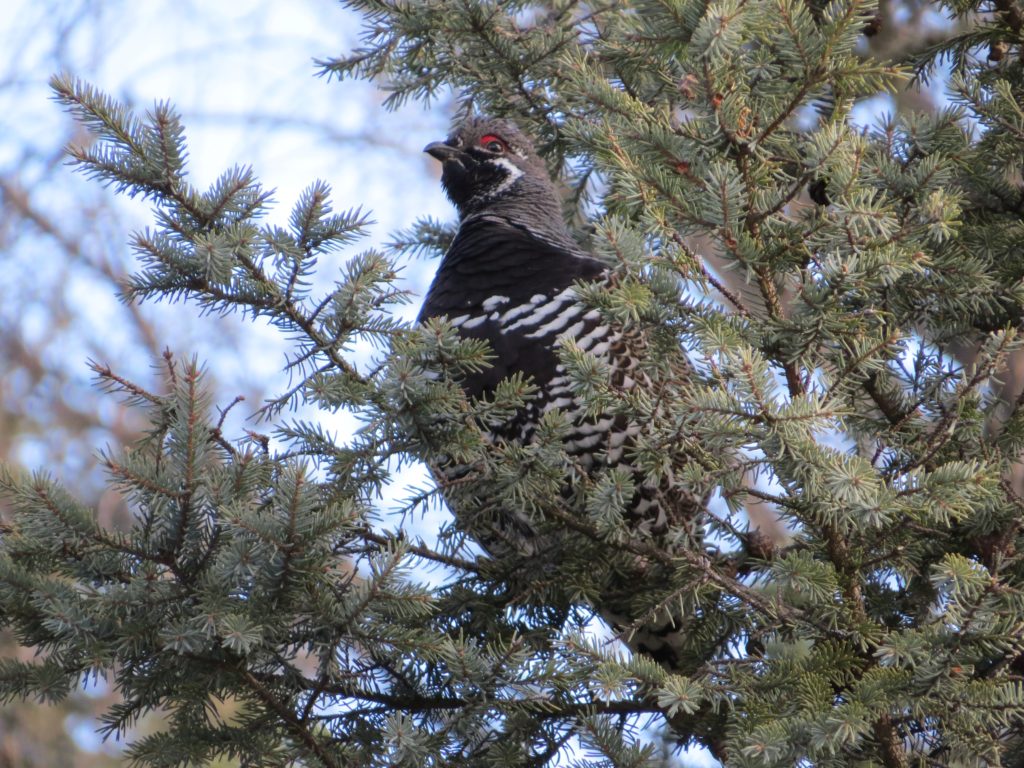
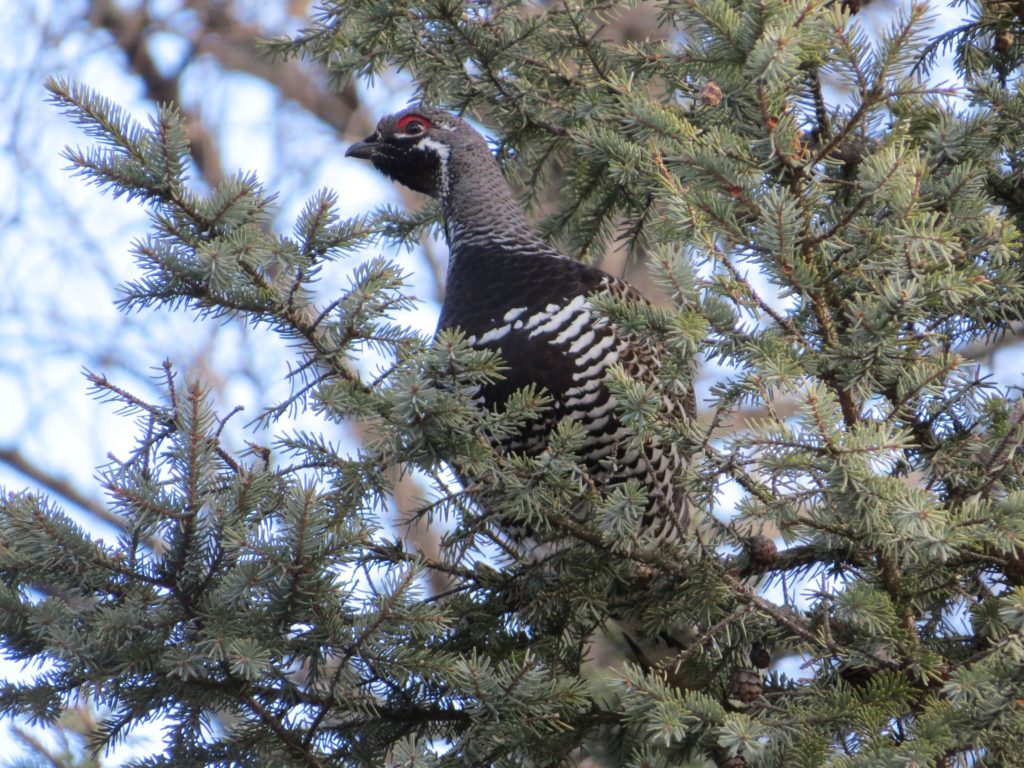 You want to know why so many people have trouble finding this bird?
You want to know why so many people have trouble finding this bird?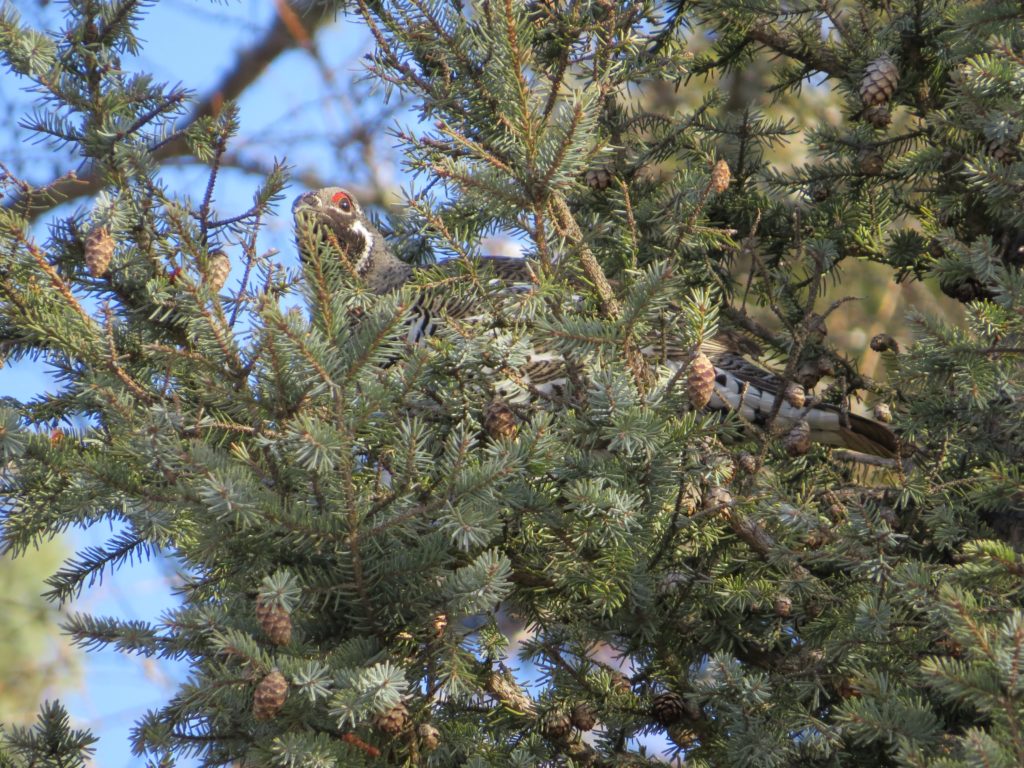 That is actually a fairly conspicuous shot. There were times that it was so well hidden, camouflaged, and motionless at the top of this small tree that we would not have known it was there had we not just been observing it. Only the slightest rustle of the boughs gave away its presence as it consumed the Black Spruce needles. We were treated to full monty looks as well and could just not pull ourselves away…
That is actually a fairly conspicuous shot. There were times that it was so well hidden, camouflaged, and motionless at the top of this small tree that we would not have known it was there had we not just been observing it. Only the slightest rustle of the boughs gave away its presence as it consumed the Black Spruce needles. We were treated to full monty looks as well and could just not pull ourselves away…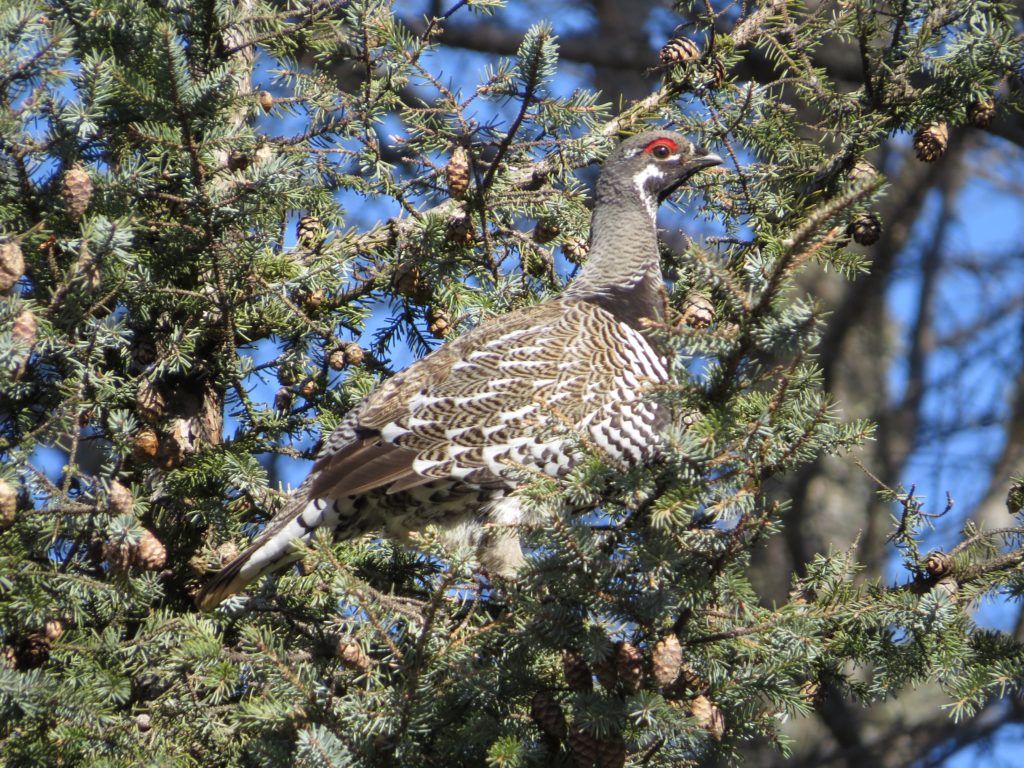
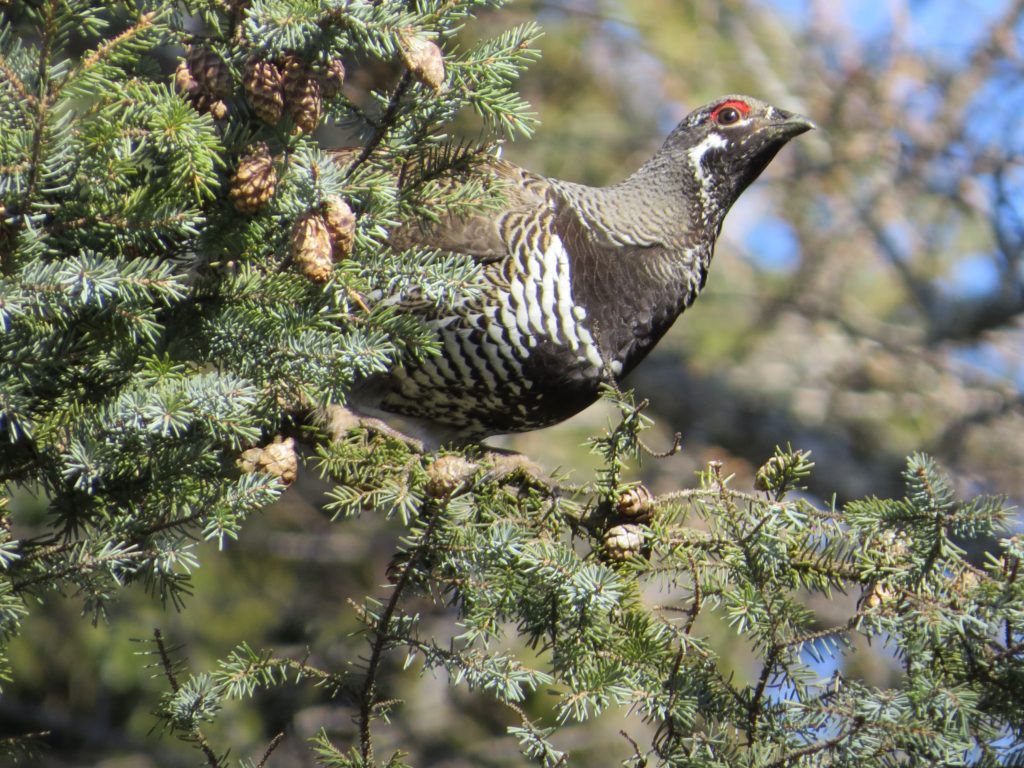
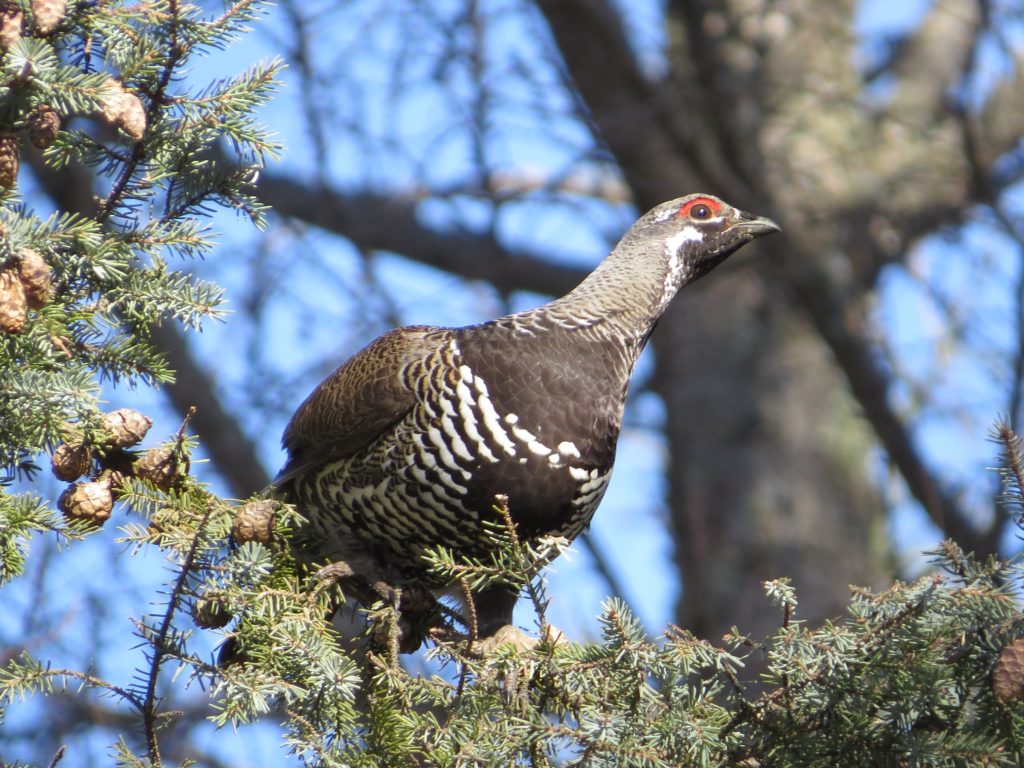 We finally managed to leave this incredibly accommodating bird and get back to our priority of lifer-searching. But one lifer and one day later, I was back on this road birding again just to see what I could see. Though I started the day alone, I bumped into fellow birders Sparky Stensaas, Dee Kuder, and Julie Grahn. At one point I was bushwhacking to join Sparky in the heart of the Spruce bog when the ground fluttered in front of me. Spruce Grouse–again! This was much later in the day than the sighting the previous day, and the bird was not gritting out on the road. I had stumbled upon it just relaxing in the dark recesses of the bog for the day. Known by locals as the Fool’s Hen, this Sprucie was not overly concerned about me and settled back down under his Spruce bough.
We finally managed to leave this incredibly accommodating bird and get back to our priority of lifer-searching. But one lifer and one day later, I was back on this road birding again just to see what I could see. Though I started the day alone, I bumped into fellow birders Sparky Stensaas, Dee Kuder, and Julie Grahn. At one point I was bushwhacking to join Sparky in the heart of the Spruce bog when the ground fluttered in front of me. Spruce Grouse–again! This was much later in the day than the sighting the previous day, and the bird was not gritting out on the road. I had stumbled upon it just relaxing in the dark recesses of the bog for the day. Known by locals as the Fool’s Hen, this Sprucie was not overly concerned about me and settled back down under his Spruce bough.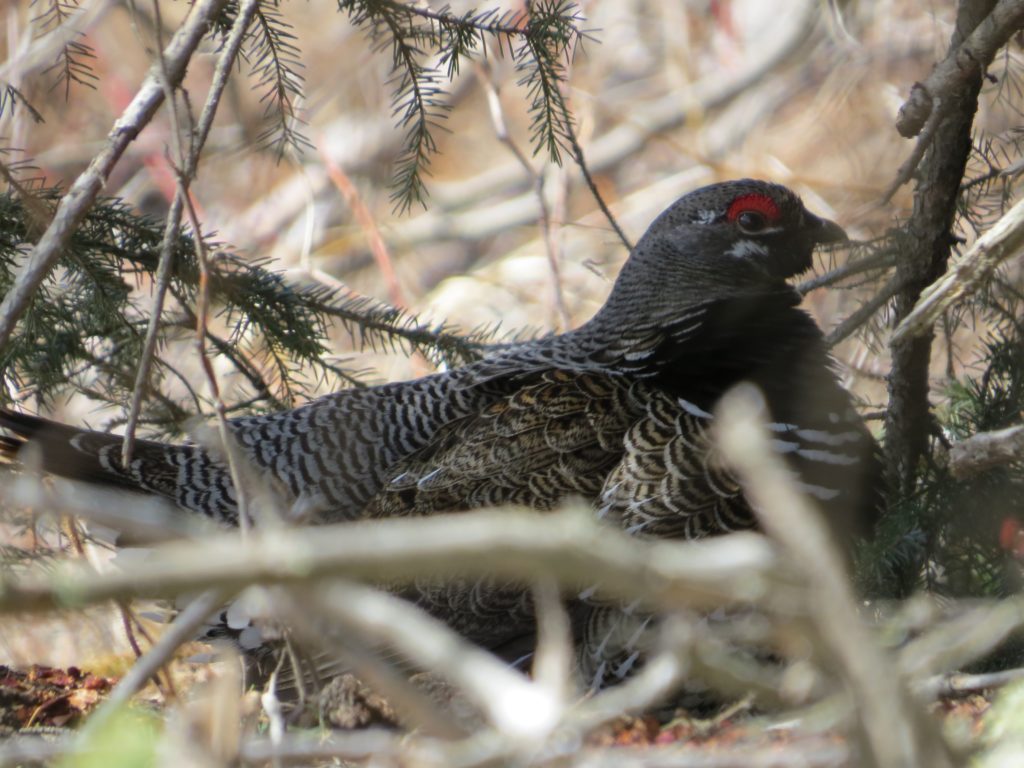 As I observed the Grouse, it began displaying! While I quietly watched from 15 feet away, I spied a hen Spruce Grouse near the male. She made little clucks that would cause the male to puff up and fan his tail straight up. Then a third Spruce Grouse flew in and landed 20 feet up in a Spruce Tree! This sound of the second one fluttering its wings also excited the male on the ground. The birds and I were both in obstructed quarters which didn’t allow for the best viewing, but I was eventually able to get in a position to better capture the displaying male.
As I observed the Grouse, it began displaying! While I quietly watched from 15 feet away, I spied a hen Spruce Grouse near the male. She made little clucks that would cause the male to puff up and fan his tail straight up. Then a third Spruce Grouse flew in and landed 20 feet up in a Spruce Tree! This sound of the second one fluttering its wings also excited the male on the ground. The birds and I were both in obstructed quarters which didn’t allow for the best viewing, but I was eventually able to get in a position to better capture the displaying male.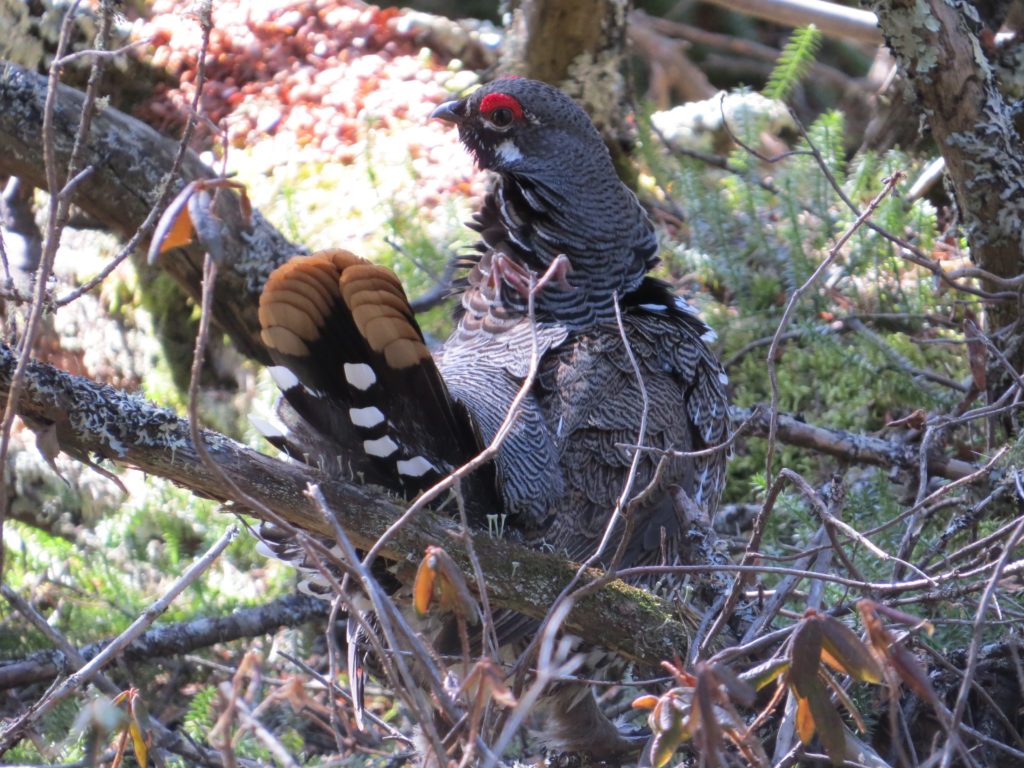
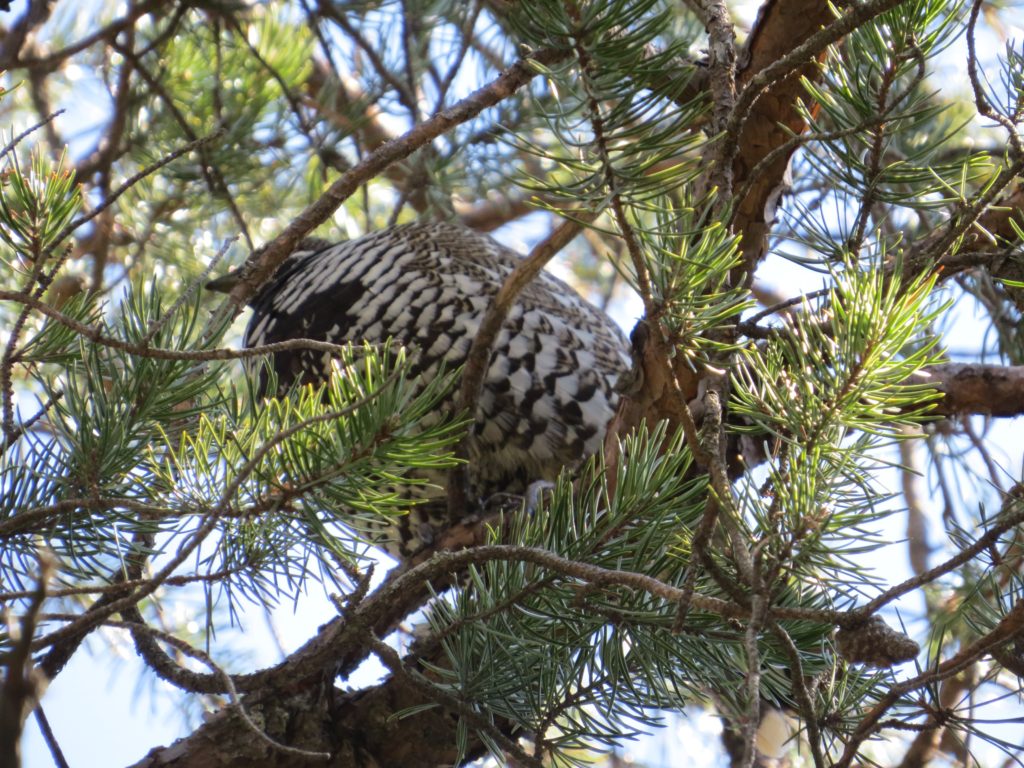 This bird did not mind that we were standing underneath him, nor did the female mind when we eventually got into a better position to check her out. We got to enjoy her taking a dust bath in the afternoon sun. I’d say she cleaned up pretty nice.
This bird did not mind that we were standing underneath him, nor did the female mind when we eventually got into a better position to check her out. We got to enjoy her taking a dust bath in the afternoon sun. I’d say she cleaned up pretty nice.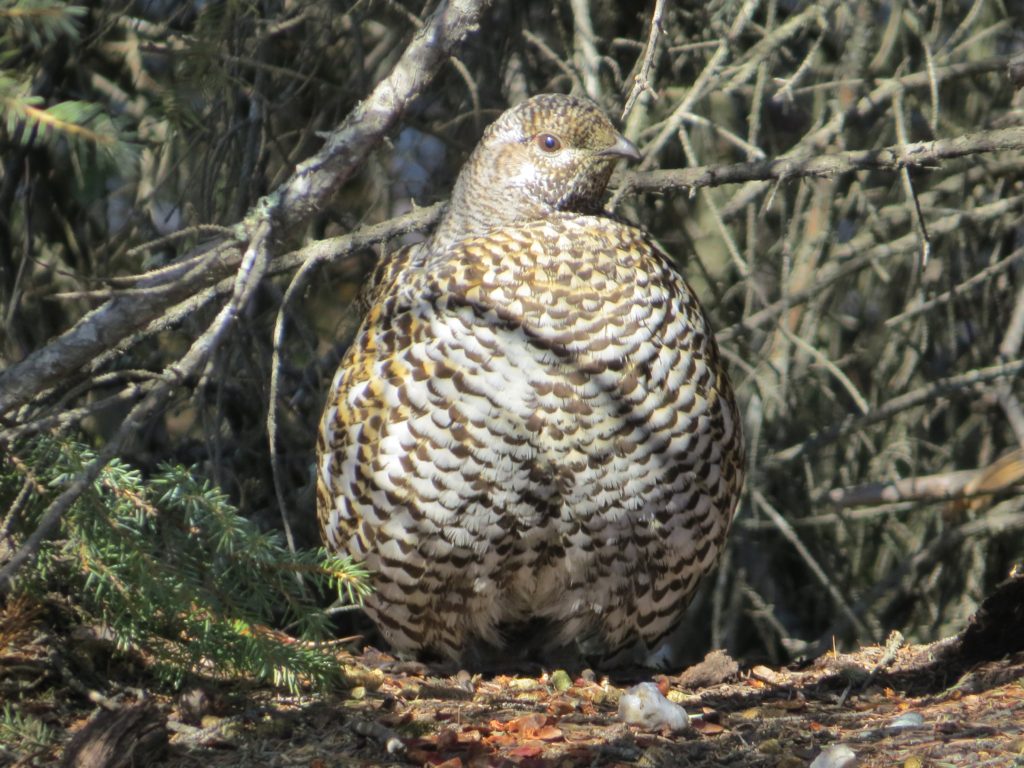 Each encounter I have with a Spruce Grouse is special and never taken for granted. I am still awestruck by this bird and may have finally gotten my fill, at least for a little while. And now, NOW, that we have dealt with the horribly distracting Spruce Grouse, we can move on to that incredible lifer in the next post.
Each encounter I have with a Spruce Grouse is special and never taken for granted. I am still awestruck by this bird and may have finally gotten my fill, at least for a little while. And now, NOW, that we have dealt with the horribly distracting Spruce Grouse, we can move on to that incredible lifer in the next post.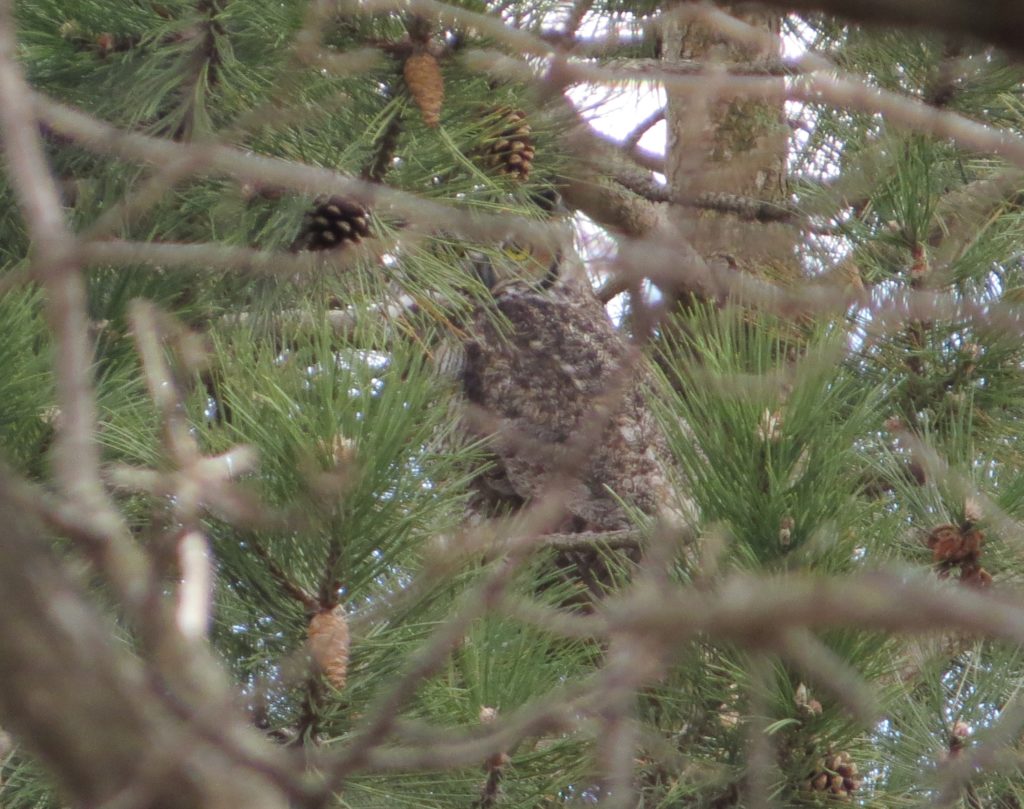 Any Owl sighting makes for a fun outing, even if it’s not post-worthy. But Steve’s lifer LEOWs were post-worthy, and something about his post caught my attention: he had seen his Owls in a plantation of Spruces. I had associated LEOWs mostly with Cedars. A connection was made in my brain, and I asked Steve how the site he was at compared with a plantation of Spruces in our county that we have unsuccessfully Owled a few times. Steve said they were very similar. Plans were made immediately to check it out the next day. It had been over a year since we last tried for Long-eareds at that spot. It was time to hit it again.
Any Owl sighting makes for a fun outing, even if it’s not post-worthy. But Steve’s lifer LEOWs were post-worthy, and something about his post caught my attention: he had seen his Owls in a plantation of Spruces. I had associated LEOWs mostly with Cedars. A connection was made in my brain, and I asked Steve how the site he was at compared with a plantation of Spruces in our county that we have unsuccessfully Owled a few times. Steve said they were very similar. Plans were made immediately to check it out the next day. It had been over a year since we last tried for Long-eareds at that spot. It was time to hit it again.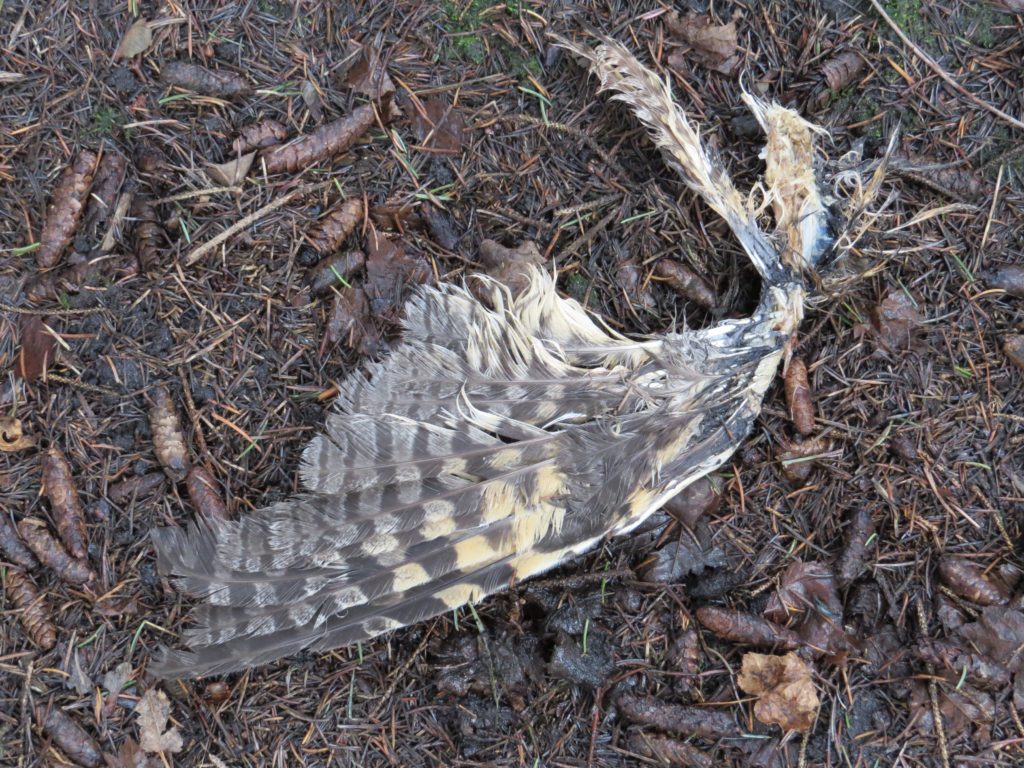 We did flush it a couple more times but eventually decided to move on and give up on seeing it perched. Even still, the victory was immense. Steve said it best when he said it was cool that we did not have to rely on anyone else for this bird. I couldn’t agree more.
We did flush it a couple more times but eventually decided to move on and give up on seeing it perched. Even still, the victory was immense. Steve said it best when he said it was cool that we did not have to rely on anyone else for this bird. I couldn’t agree more.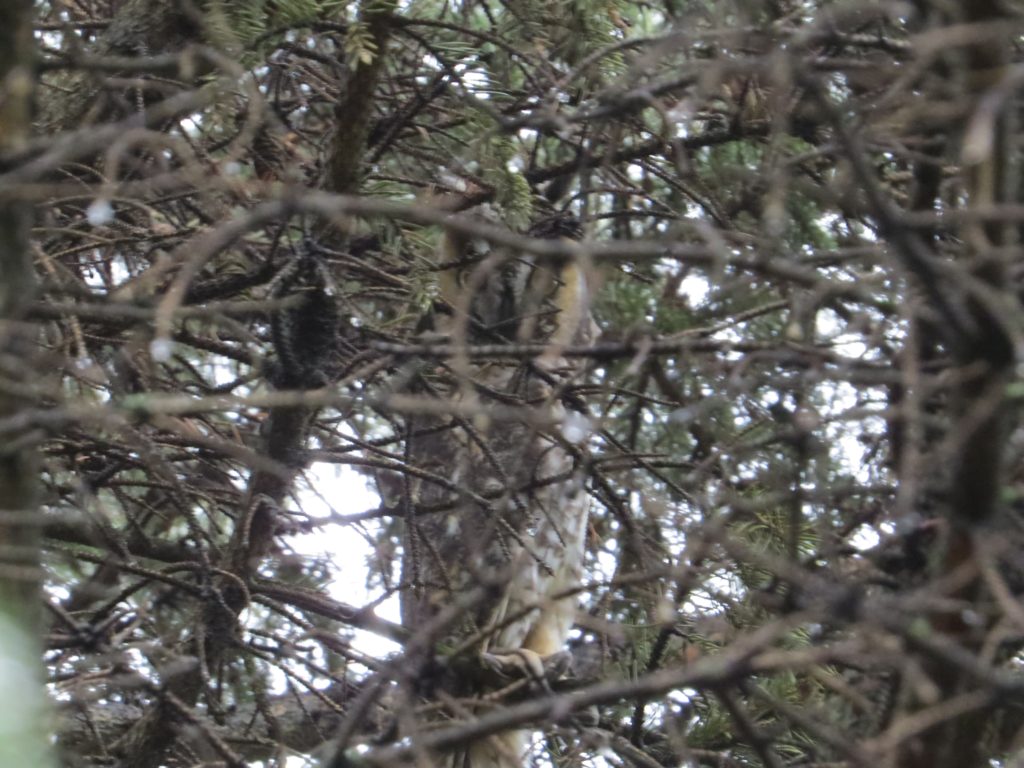 This was the final, definitive proof that Steve and I had seen a Long-eared Owl the day before. And, man, did it feel good.
This was the final, definitive proof that Steve and I had seen a Long-eared Owl the day before. And, man, did it feel good.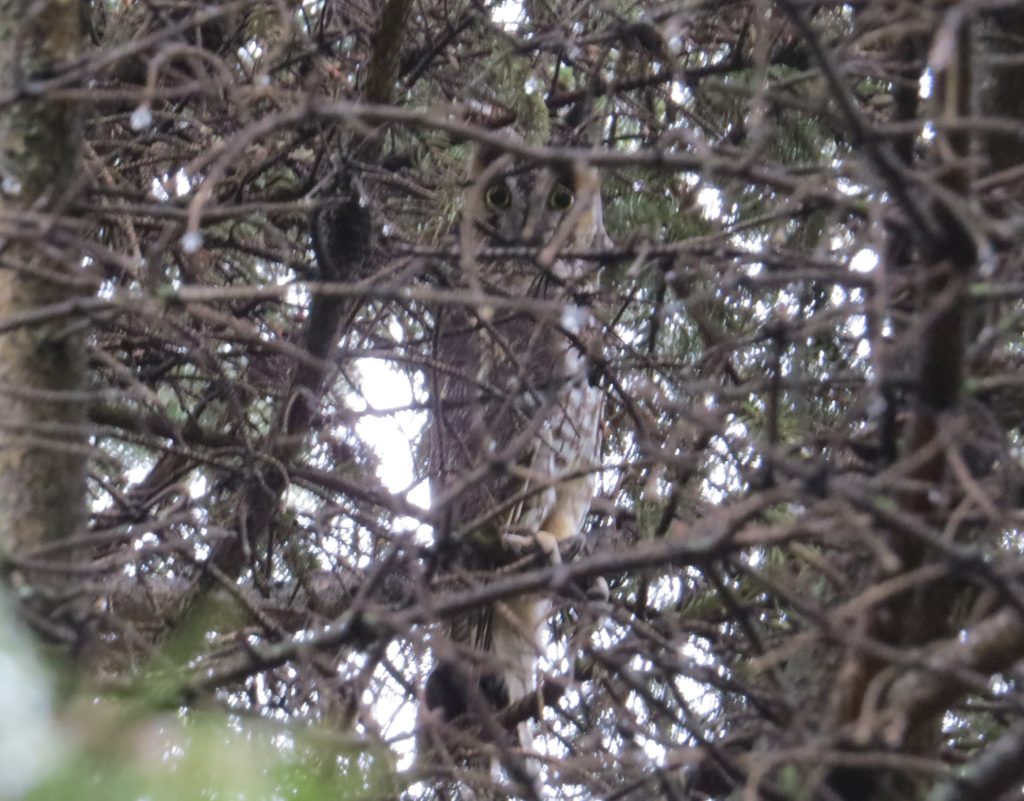 At this moment in the adventure I was multi-tasking, trying to get photos while snapping my fingers and whispering to get the attention of my fellow birders. I never got them on the bird before it flushed, but everyone was able to eventually see the Owl.
At this moment in the adventure I was multi-tasking, trying to get photos while snapping my fingers and whispering to get the attention of my fellow birders. I never got them on the bird before it flushed, but everyone was able to eventually see the Owl.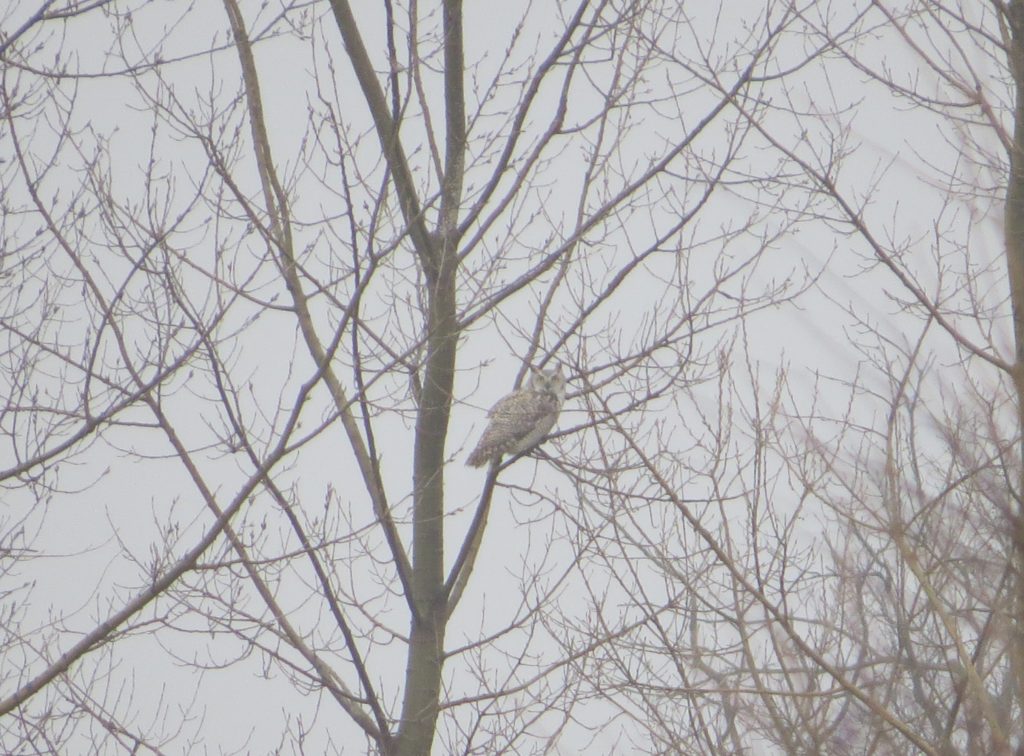 Are the Owl adventures over? With 2 of my 4 wanted Owls knocked off in February already, I think we are just getting started.
Are the Owl adventures over? With 2 of my 4 wanted Owls knocked off in February already, I think we are just getting started.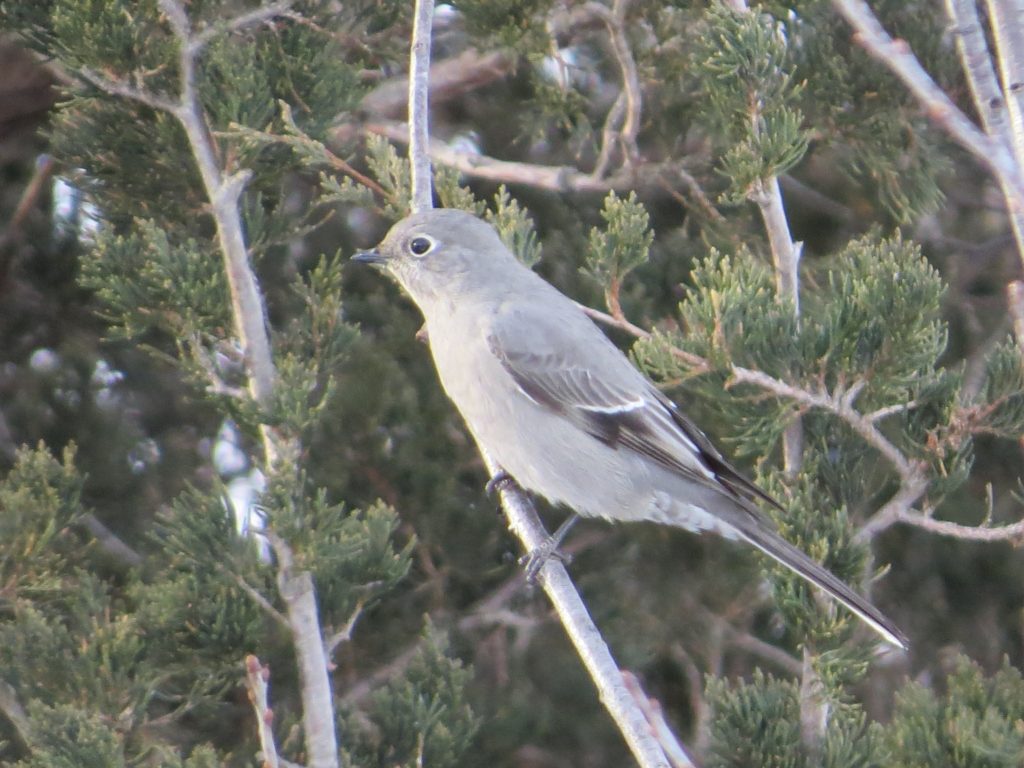 As we enjoyed the bird and expressed jubilation over a very early success, we detected a second Solitaire as well!
As we enjoyed the bird and expressed jubilation over a very early success, we detected a second Solitaire as well! 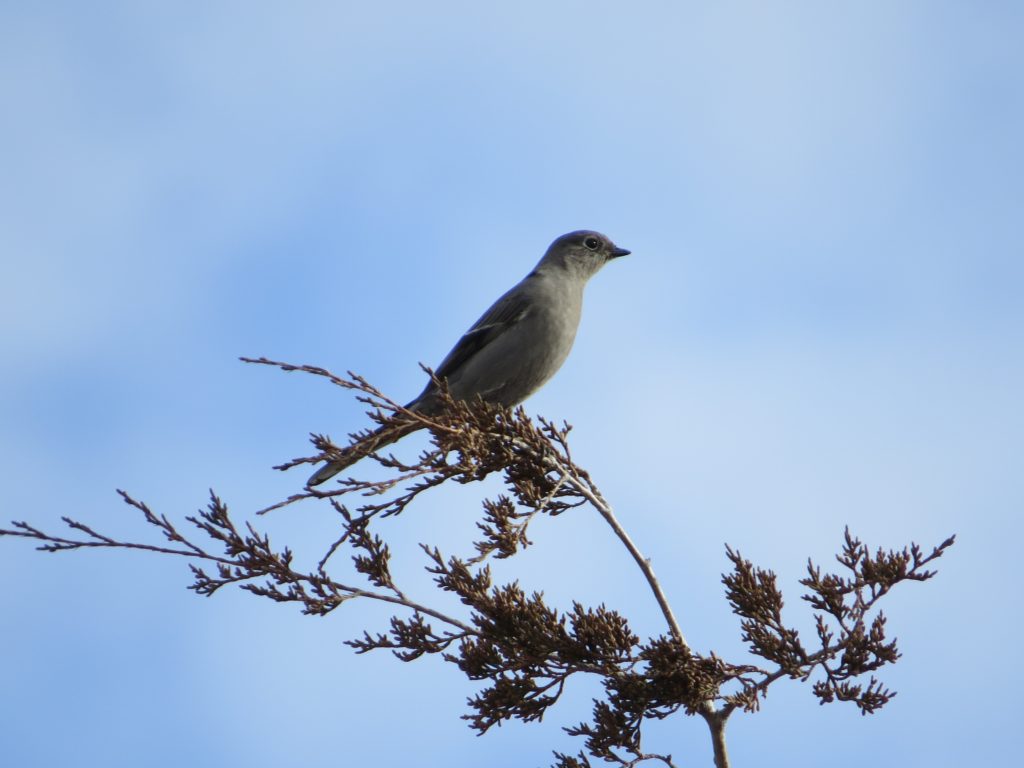
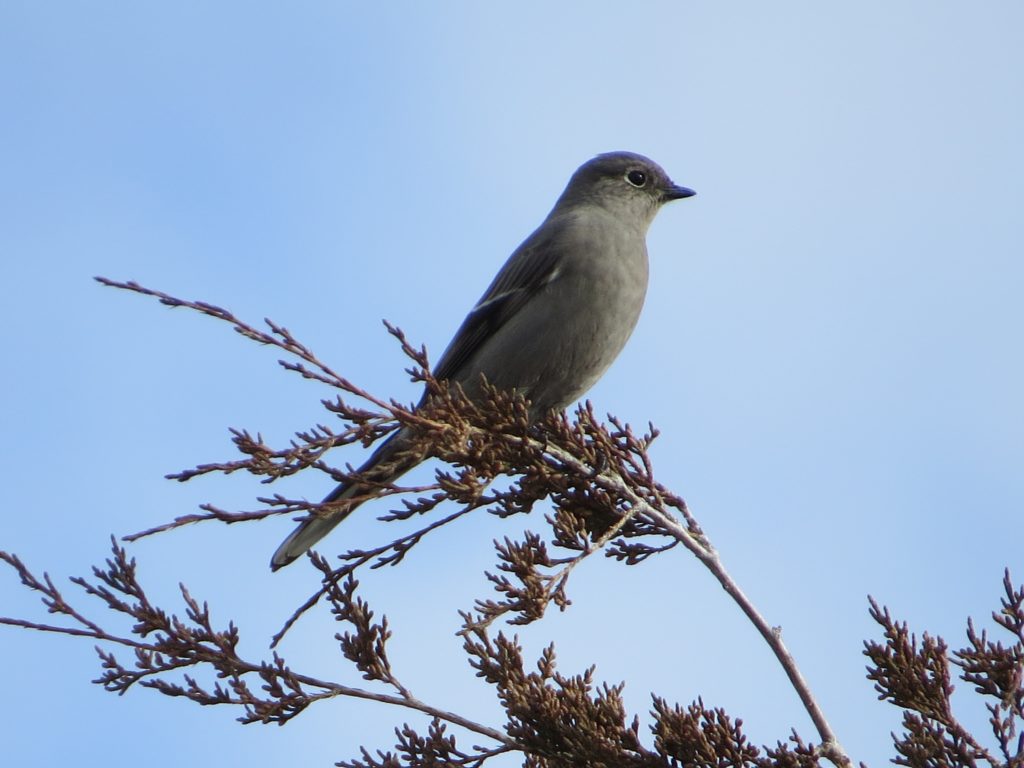 With the objective met so quickly and so easily, no one really knew what to do afterward. After shooting the breeze for quite awhile, we settled on going after the only other type of new county bird we could really try for this time of year: Owls. Now the focus was on Eastern Screech-Owls, Long-eared Owls, and Northern Saw-whet Owls. Each of the teams put in a few hours of Owling but came up short. No one was really bothered about that. The group ended up having lunch together and then we each went on to our separate birding objectives for the day.
With the objective met so quickly and so easily, no one really knew what to do afterward. After shooting the breeze for quite awhile, we settled on going after the only other type of new county bird we could really try for this time of year: Owls. Now the focus was on Eastern Screech-Owls, Long-eared Owls, and Northern Saw-whet Owls. Each of the teams put in a few hours of Owling but came up short. No one was really bothered about that. The group ended up having lunch together and then we each went on to our separate birding objectives for the day. Since that comment was written, I have knocked off all those ducks but one–the Barrow’s Goldeneye, a bird considered casual in Minnesota occurring roughly every 5 years. As I am getting to the end of my normal MN birds, BAGO was rapidly moving its way up to the top of the list of my most-wanted birds. Last year I chased a female BAGO in Fergus Falls but failed. This year there have been a couple other reports but nothing I considered reliable and therefore chaseable. Well, a little over two weeks ago, Adam Roesch birded at the Mississippi River in Champlin–quite aways upstream from his beloved patch–and made a stunning discovery. Among the myriad of Common Goldeneye, Adam found and photographed a beautiful male Barrow’s Goldeneye. And with that find, Adam submitted his first ever eBird checklist. Talk about an entrance.
Since that comment was written, I have knocked off all those ducks but one–the Barrow’s Goldeneye, a bird considered casual in Minnesota occurring roughly every 5 years. As I am getting to the end of my normal MN birds, BAGO was rapidly moving its way up to the top of the list of my most-wanted birds. Last year I chased a female BAGO in Fergus Falls but failed. This year there have been a couple other reports but nothing I considered reliable and therefore chaseable. Well, a little over two weeks ago, Adam Roesch birded at the Mississippi River in Champlin–quite aways upstream from his beloved patch–and made a stunning discovery. Among the myriad of Common Goldeneye, Adam found and photographed a beautiful male Barrow’s Goldeneye. And with that find, Adam submitted his first ever eBird checklist. Talk about an entrance.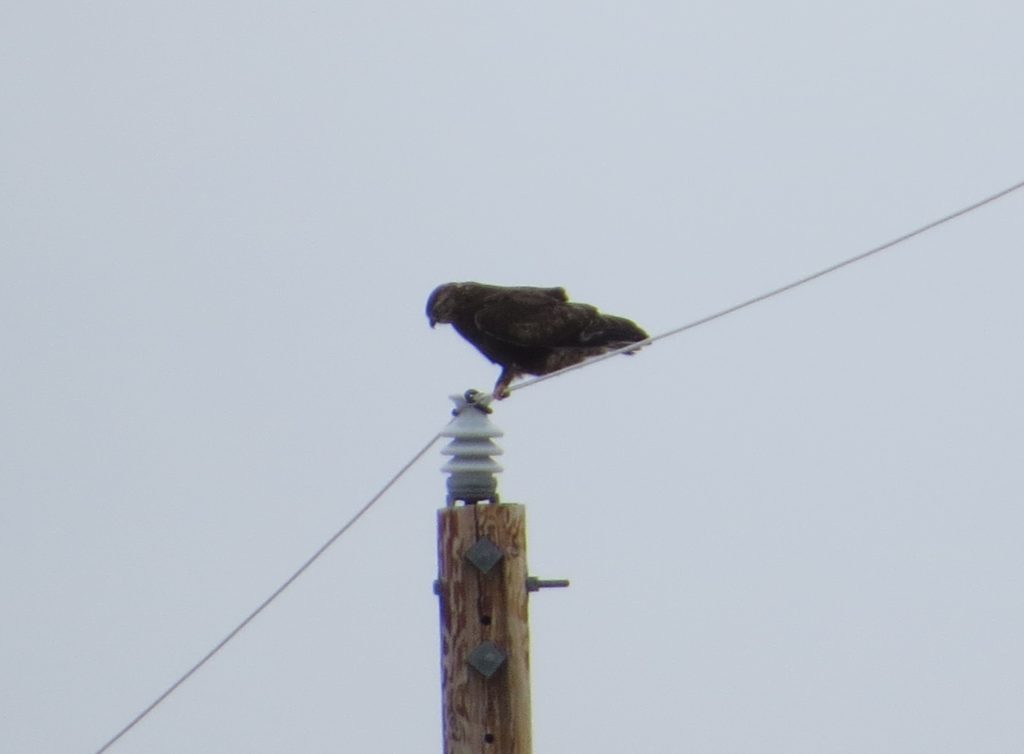
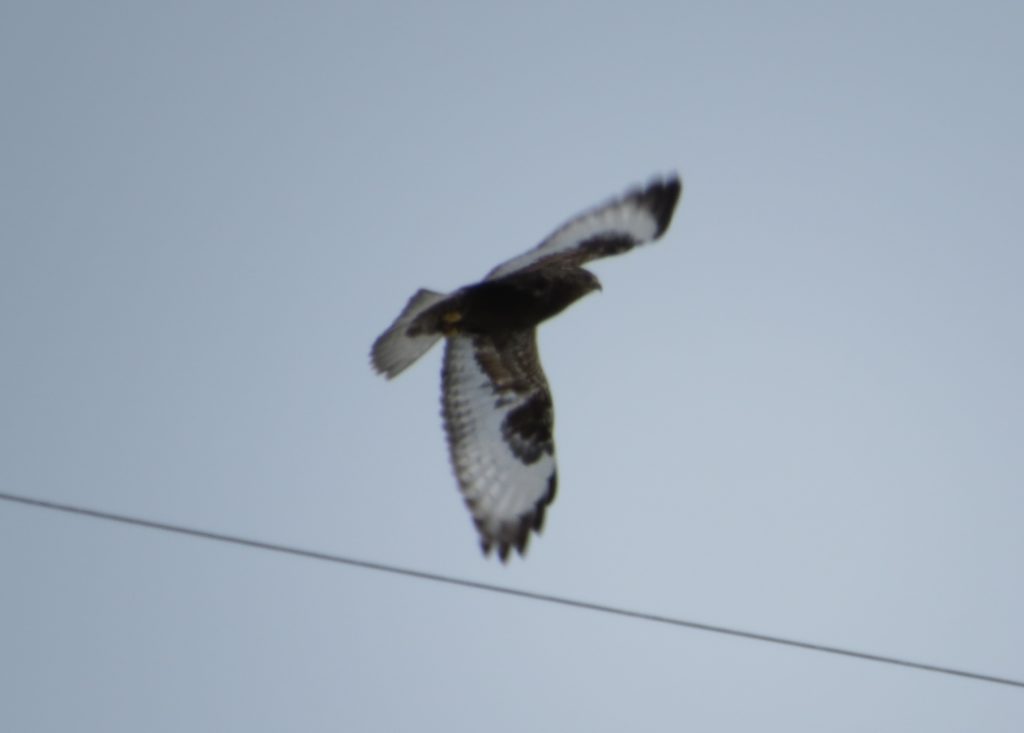 For the second time in as many weekends, we arrived at Anoka’s Peninsula Point Park to scan the Mississippi for the good Goldeneye.
For the second time in as many weekends, we arrived at Anoka’s Peninsula Point Park to scan the Mississippi for the good Goldeneye.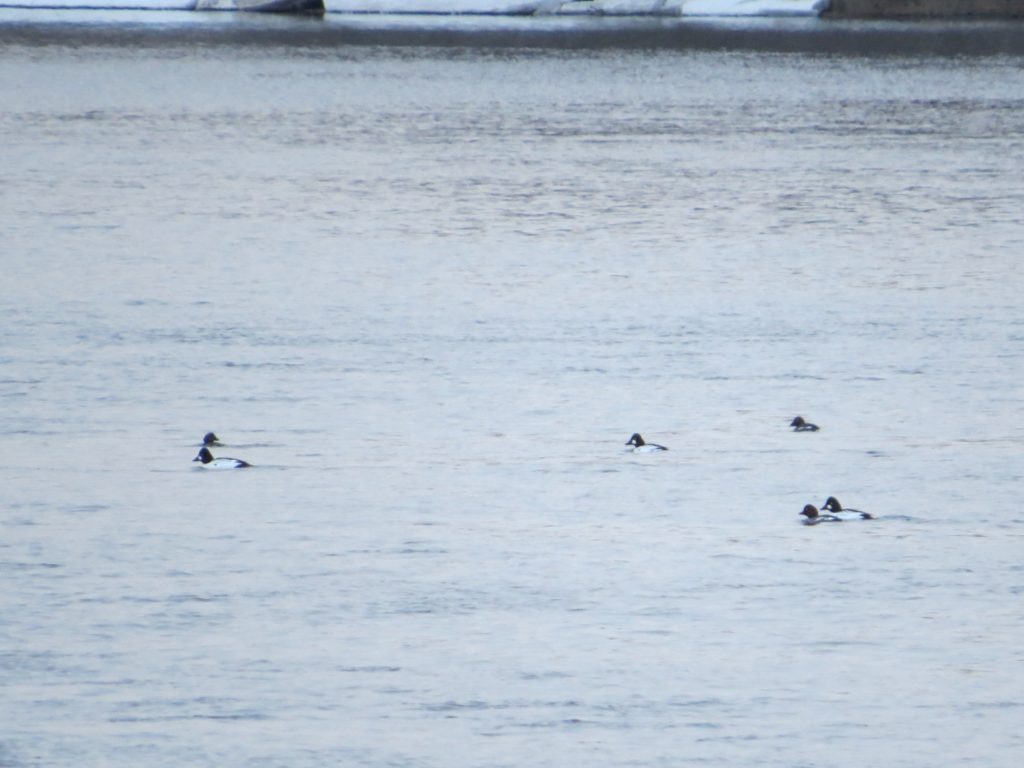
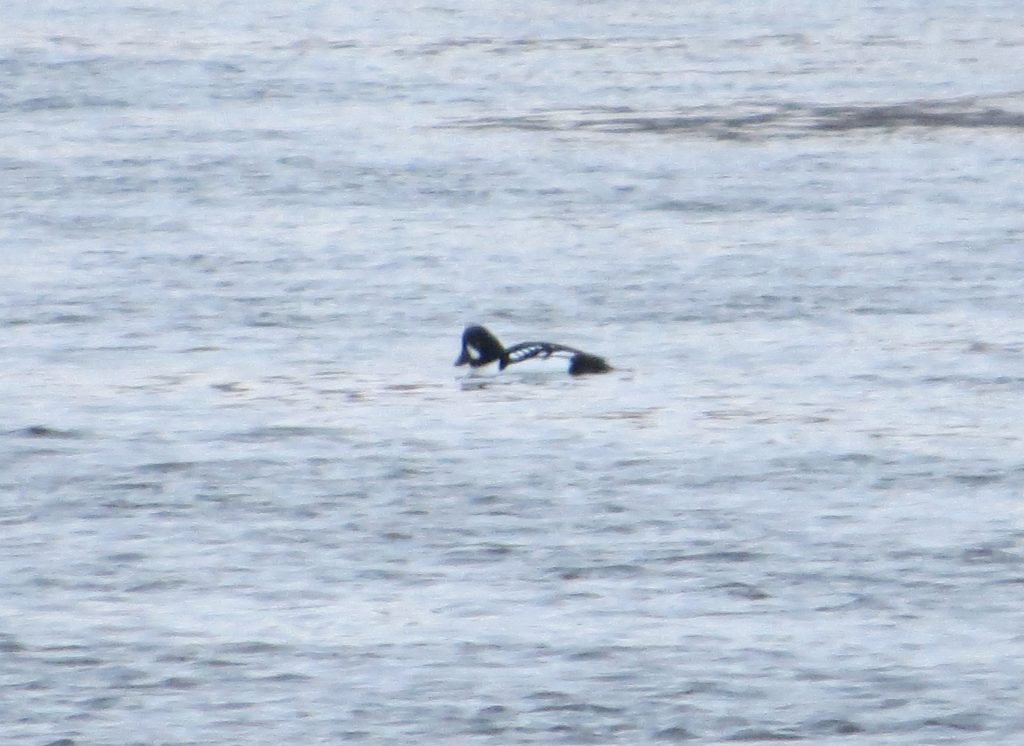 There’s just something that I absolutely love about getting duck lifers in the cold months.
There’s just something that I absolutely love about getting duck lifers in the cold months.
 I’m not lying. This skyline view of Minneapolis is literally what this Snowy Owl can see from its bizarre winter territory. I am used to looking for Snowies in urban environments, but nothing quite like this. Snowy Owls aren’t that hard to spot in places like this, yet I was having a hard time, a really hard time. I finally ran into another birder who clued me in to this sneaky Snowy’s hideout.
I’m not lying. This skyline view of Minneapolis is literally what this Snowy Owl can see from its bizarre winter territory. I am used to looking for Snowies in urban environments, but nothing quite like this. Snowy Owls aren’t that hard to spot in places like this, yet I was having a hard time, a really hard time. I finally ran into another birder who clued me in to this sneaky Snowy’s hideout. See it? Yeah, I didn’t either without help.
See it? Yeah, I didn’t either without help.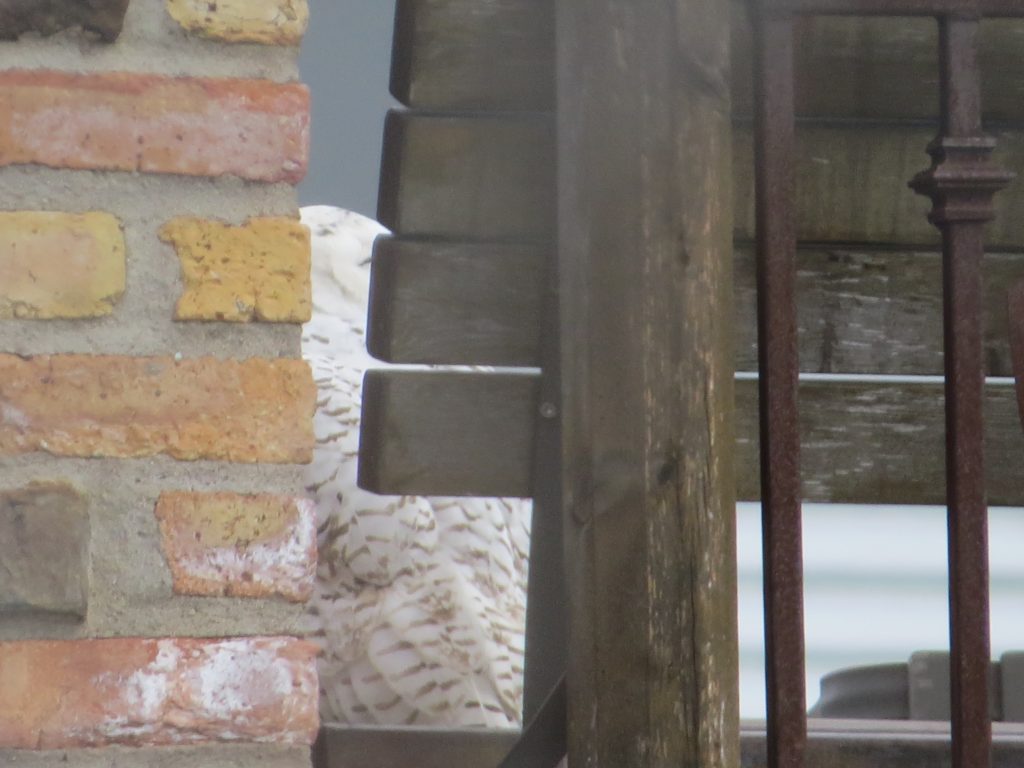 Never have I seen an Owl, Snowy or otherwise, so well fortified. Camouflaged, yes, but not entrenched. I tried every which angle and every side of the building for a shot.
Never have I seen an Owl, Snowy or otherwise, so well fortified. Camouflaged, yes, but not entrenched. I tried every which angle and every side of the building for a shot.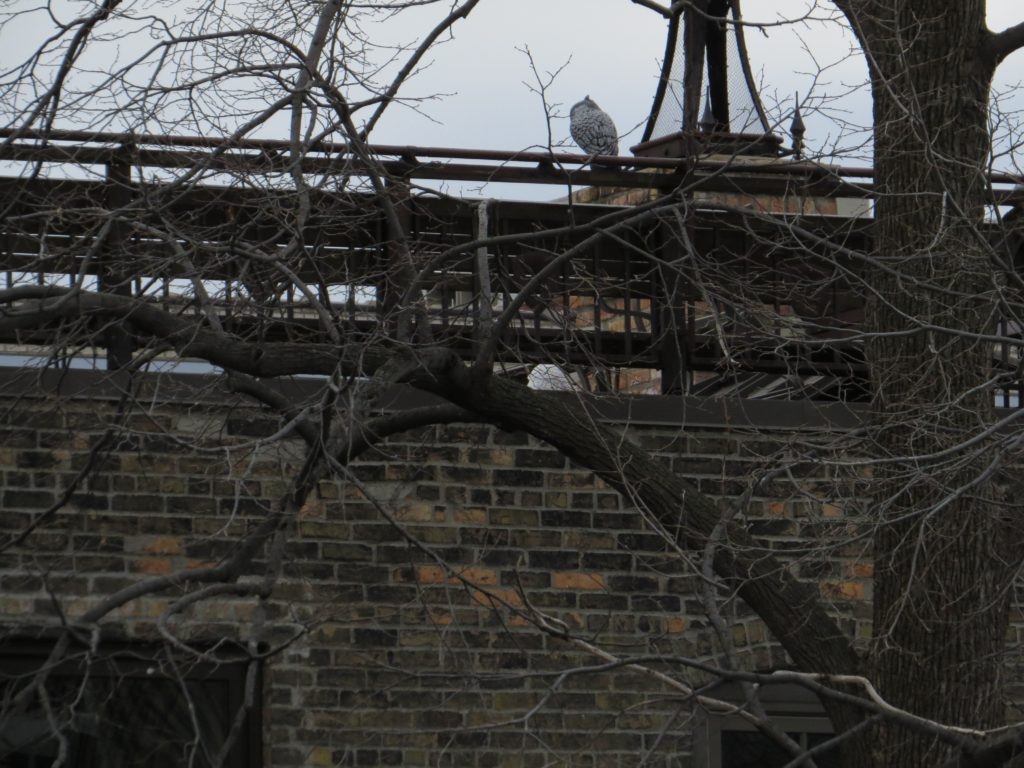
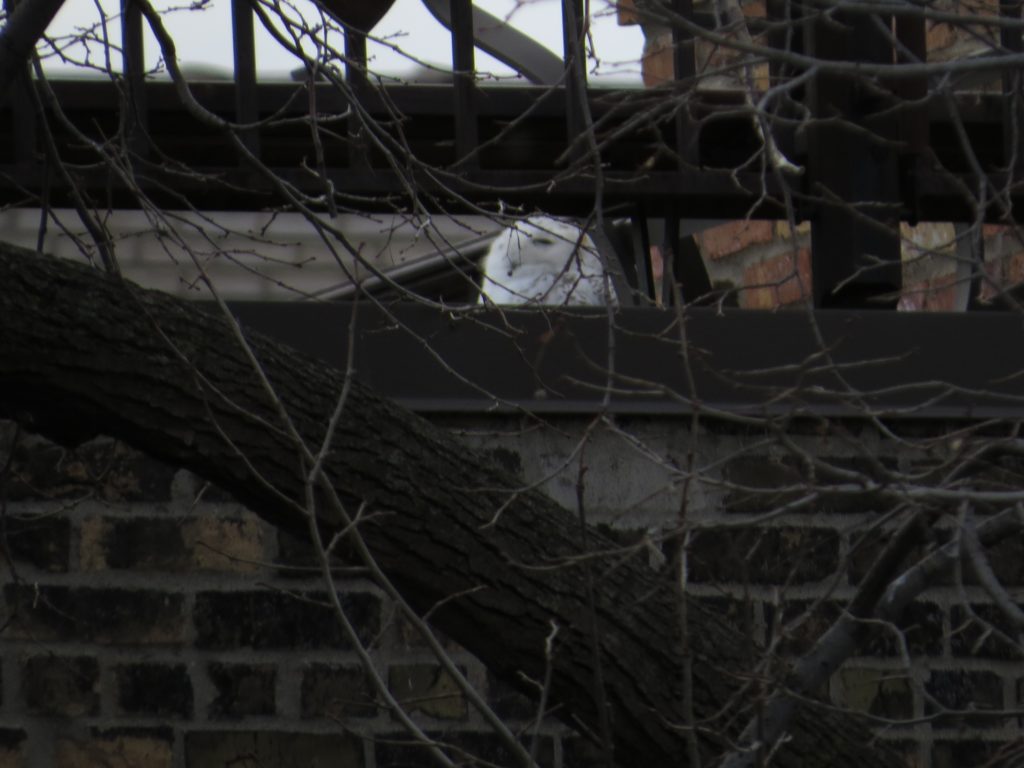 The non-birding-totally-birding metro trip was a success by any standard. It was back to rural west-cental MN where more adventure awaited in the days to come. We’ll save that for the next post, but to close things out, here’s a Great Horned Owl the kids and I saw on the ride back home.
The non-birding-totally-birding metro trip was a success by any standard. It was back to rural west-cental MN where more adventure awaited in the days to come. We’ll save that for the next post, but to close things out, here’s a Great Horned Owl the kids and I saw on the ride back home.